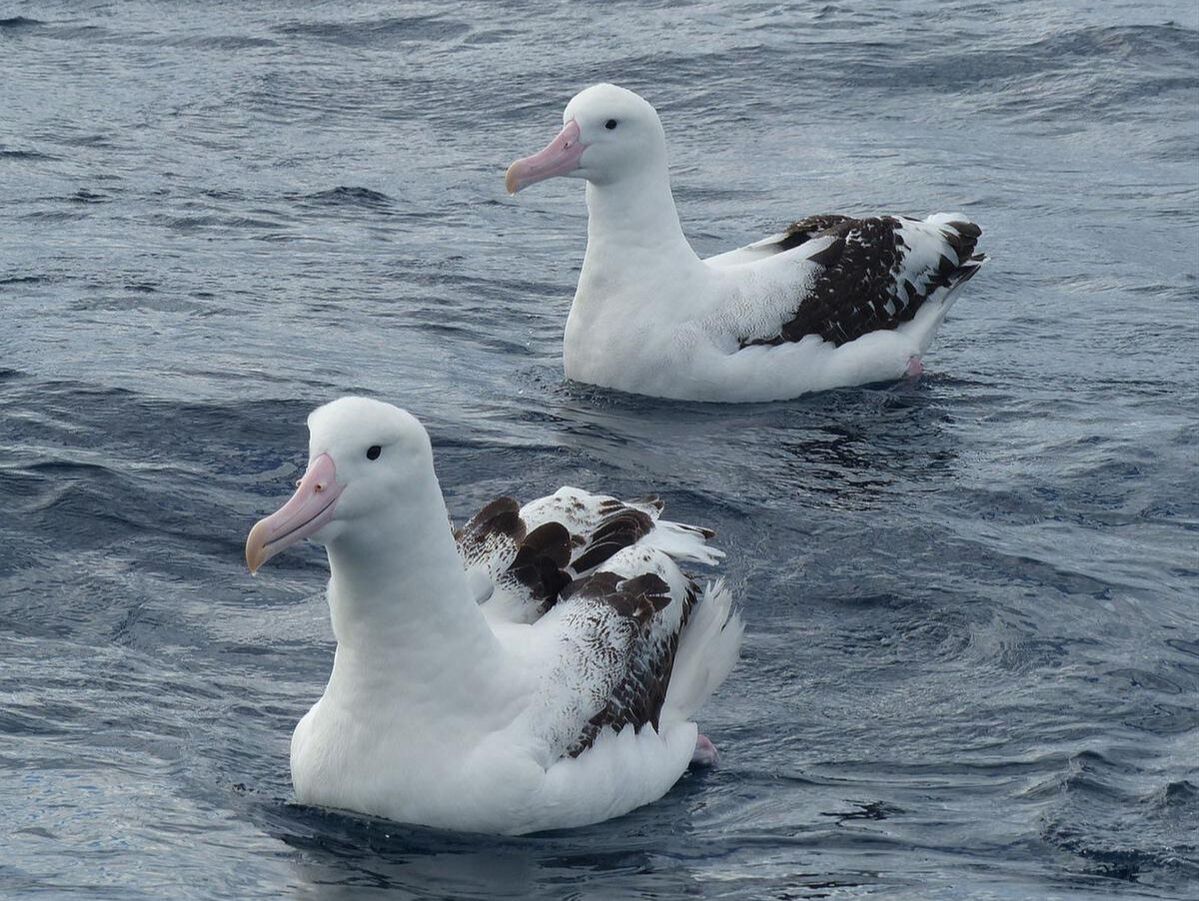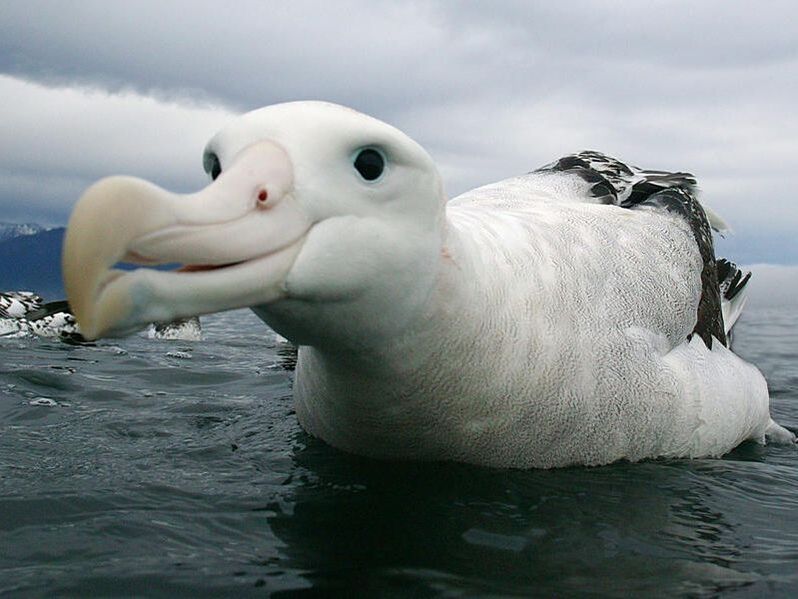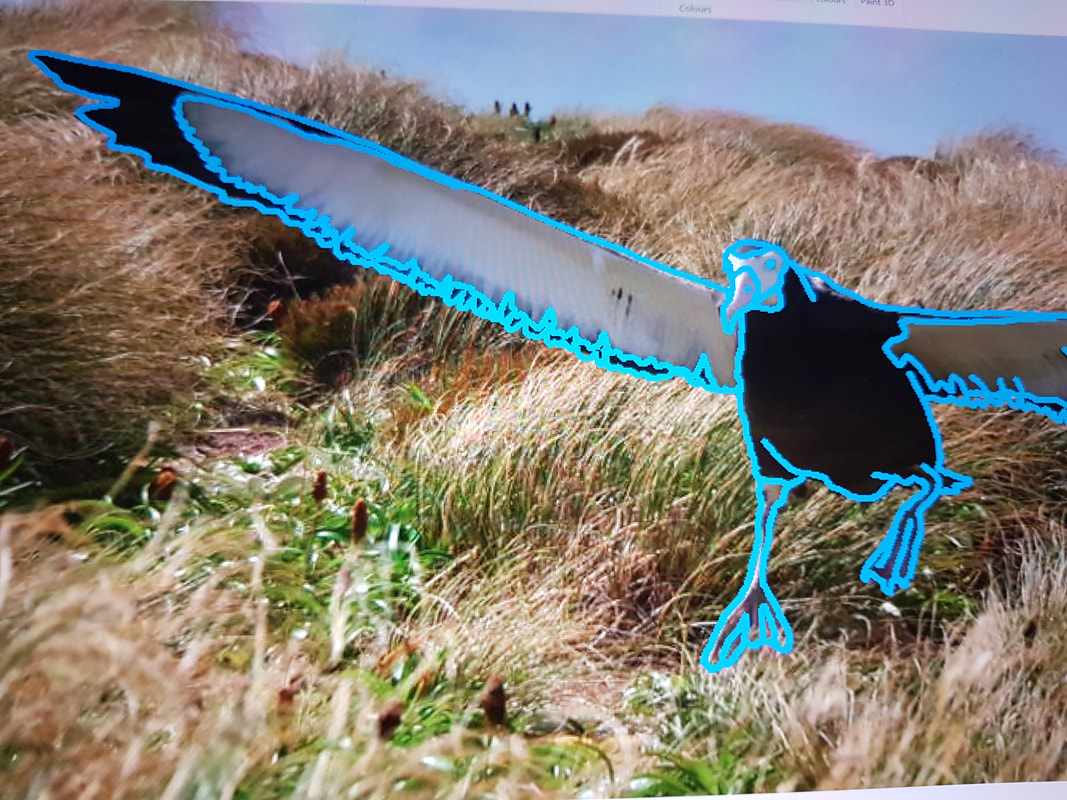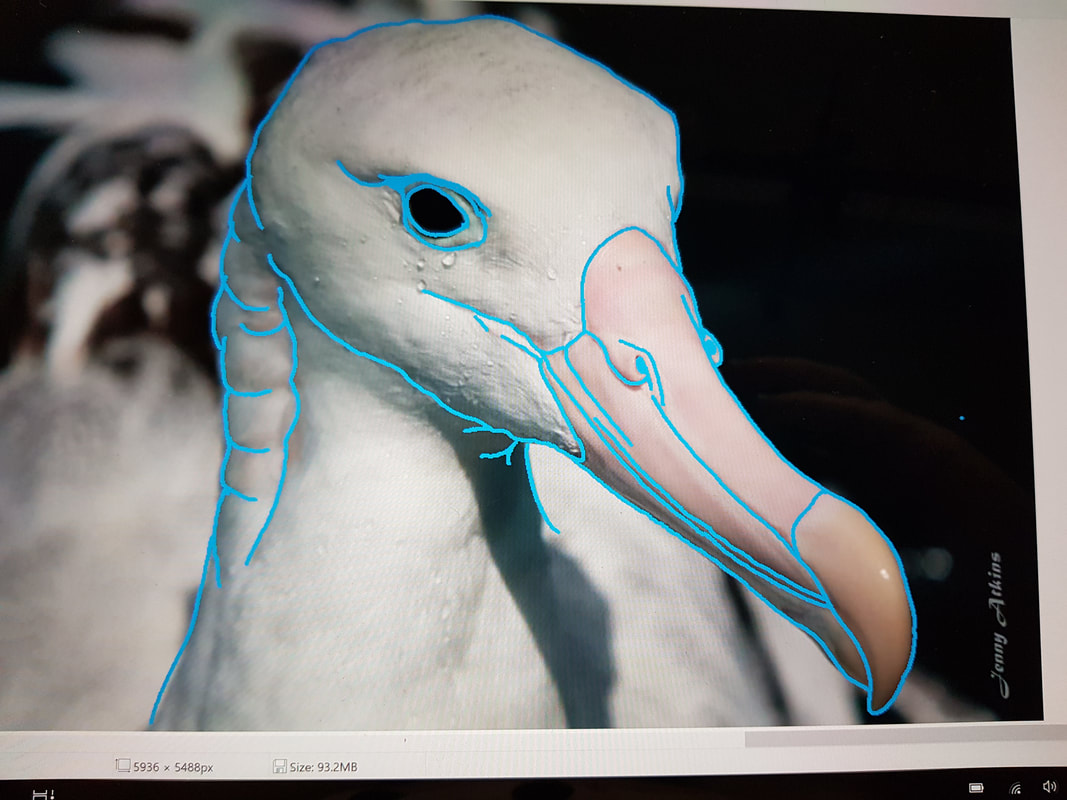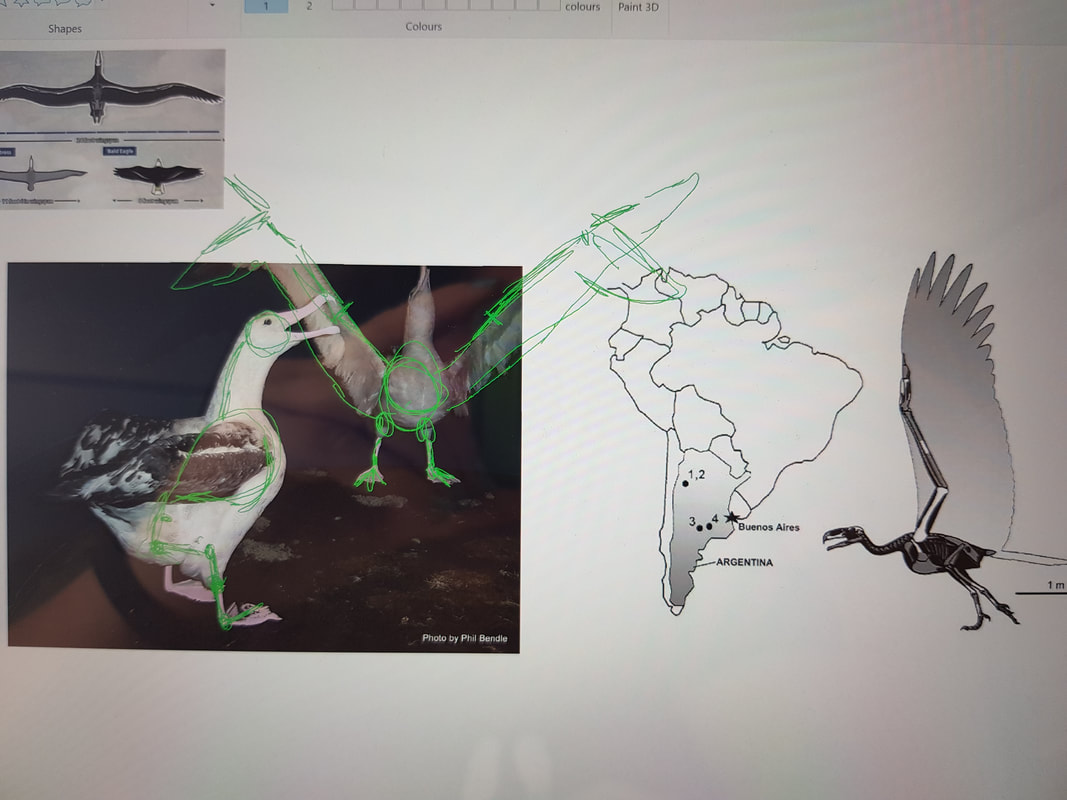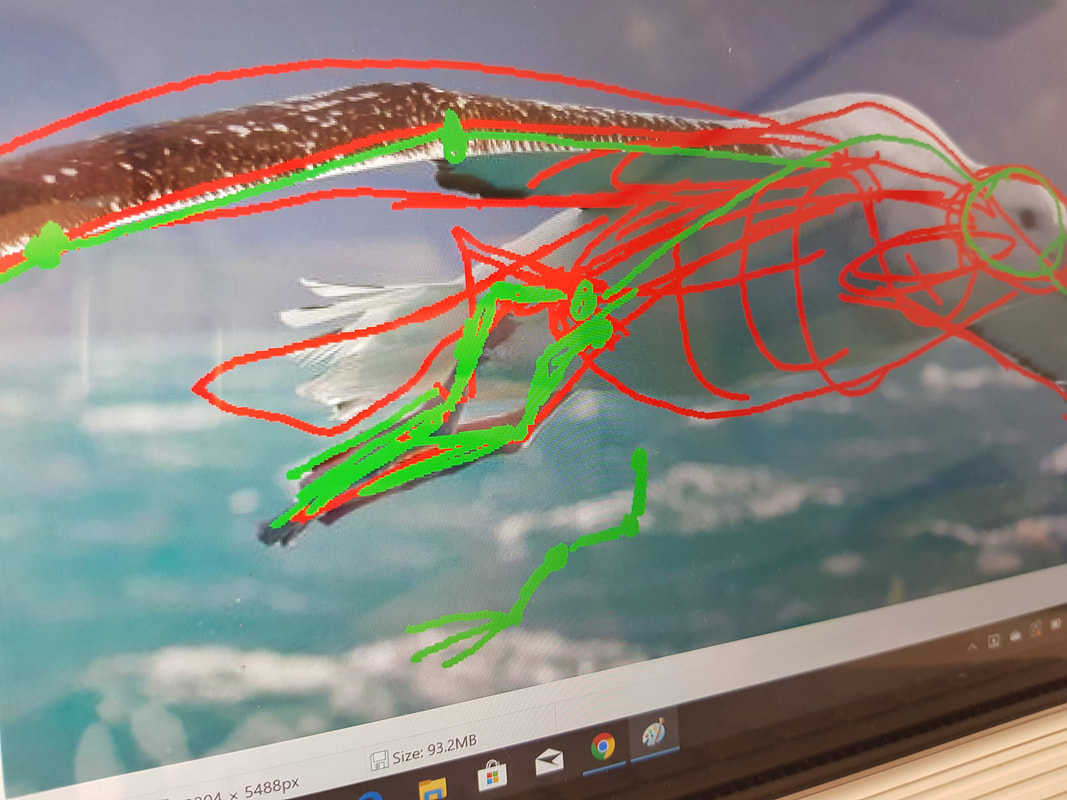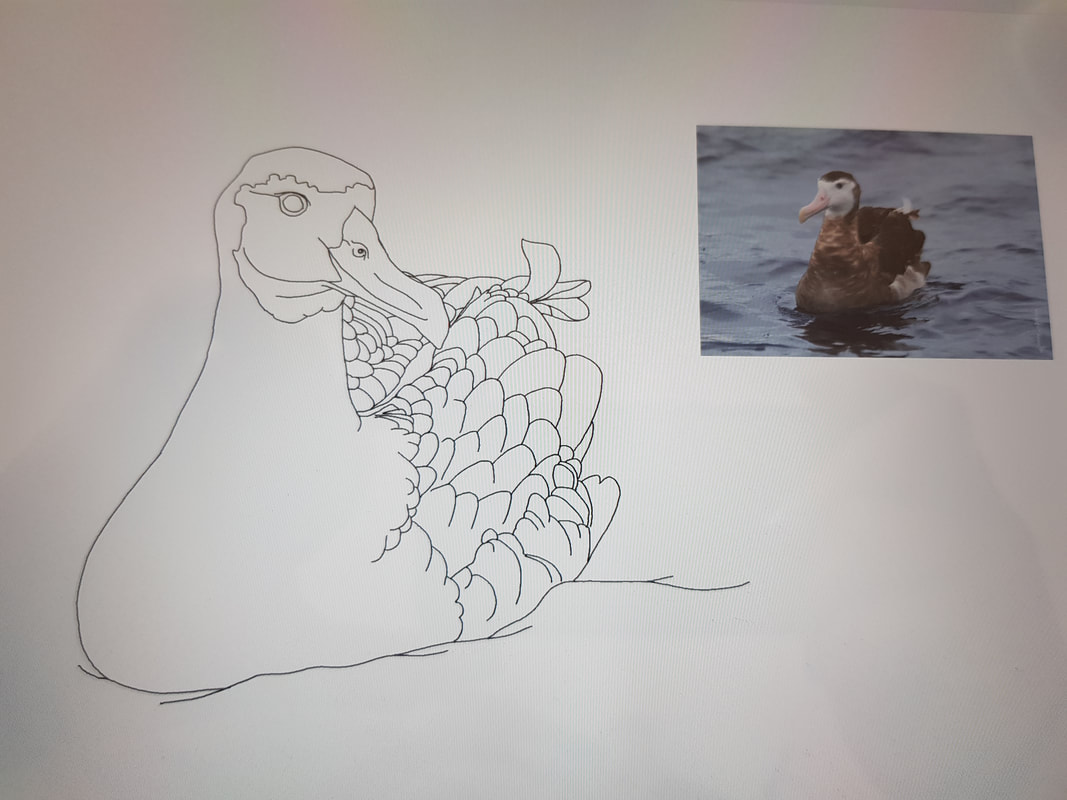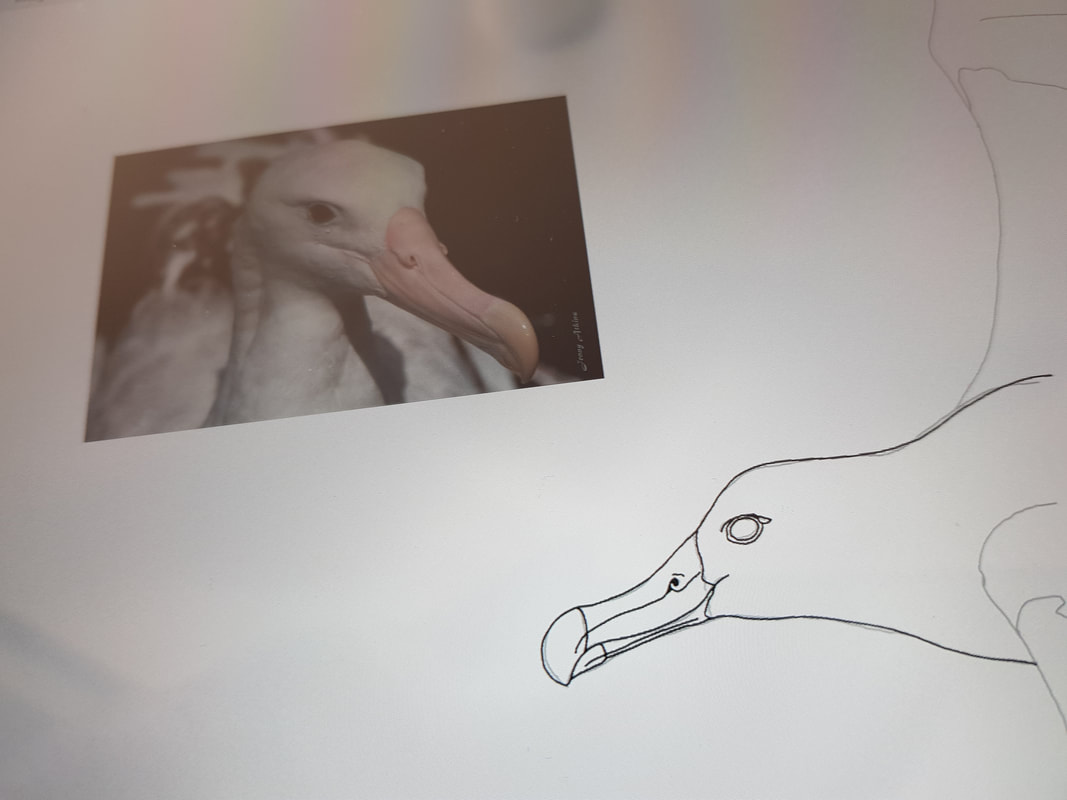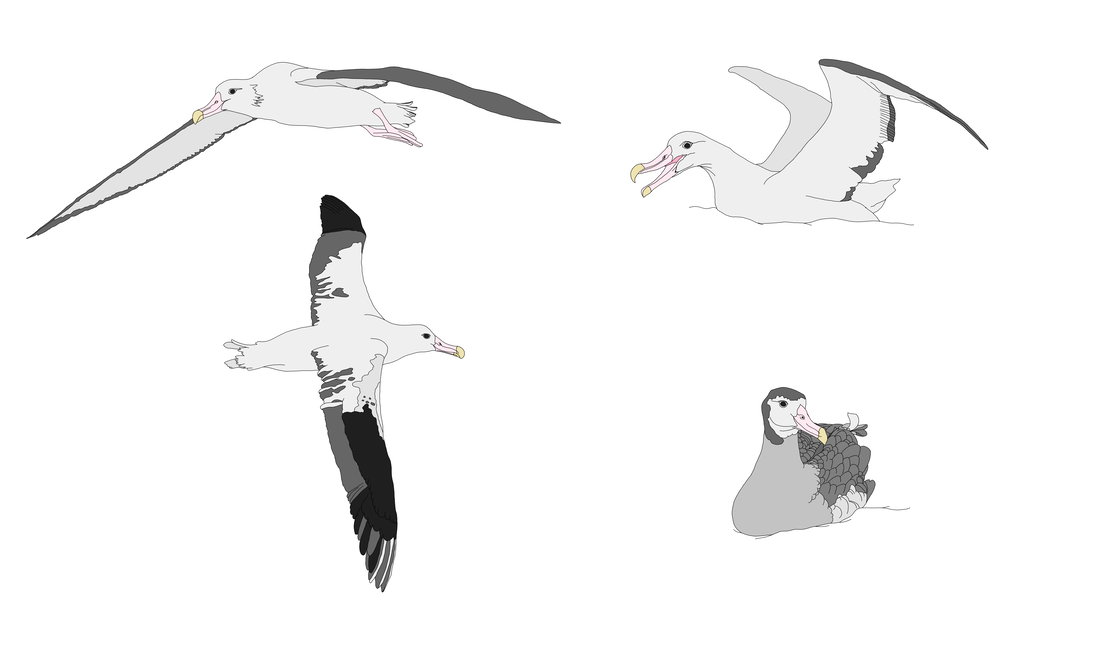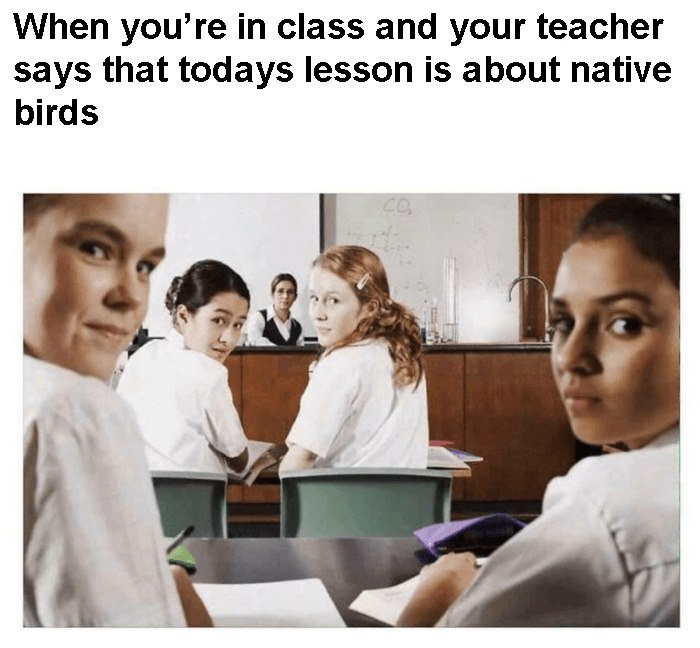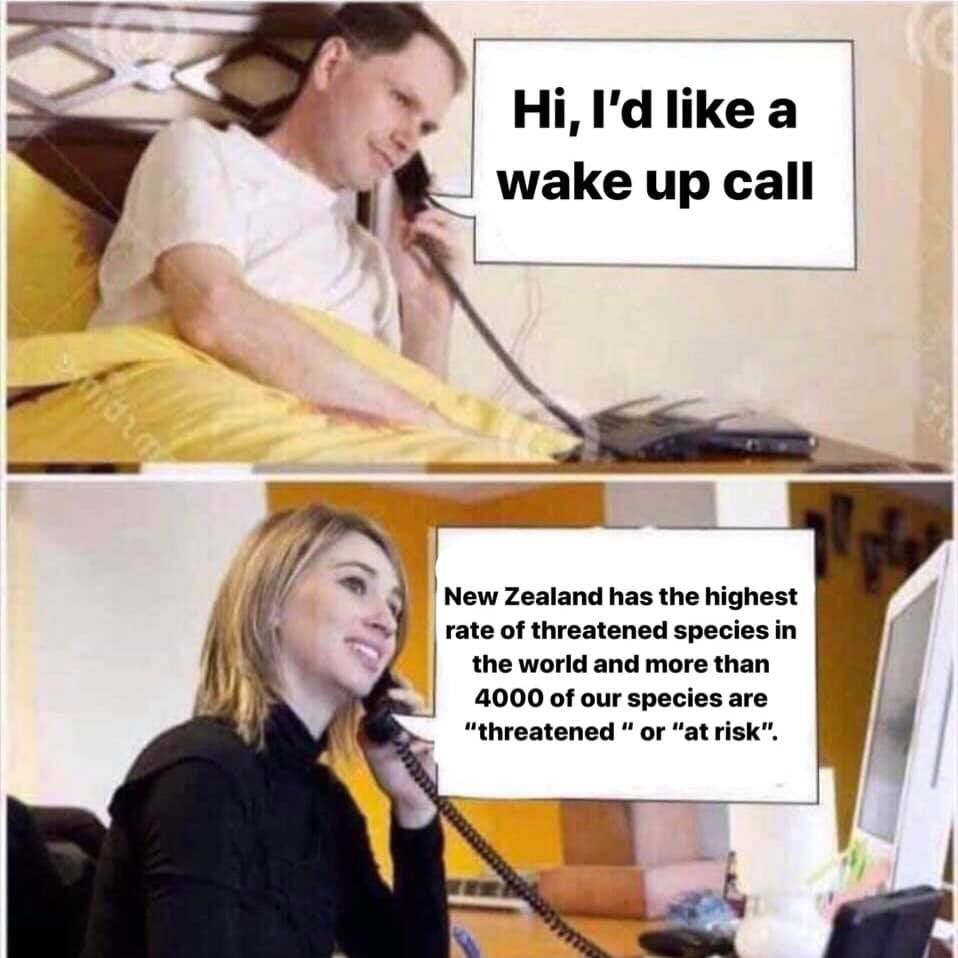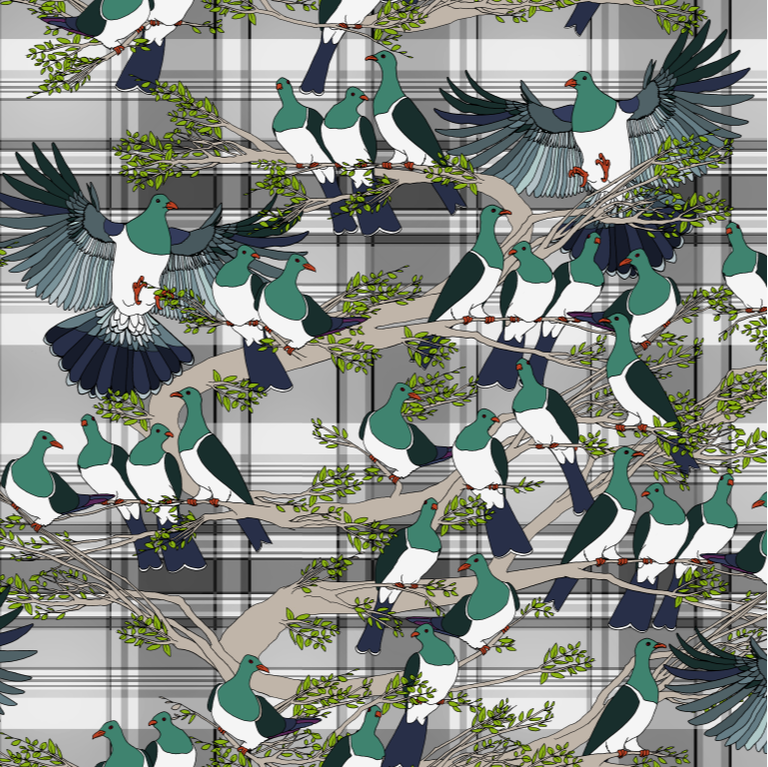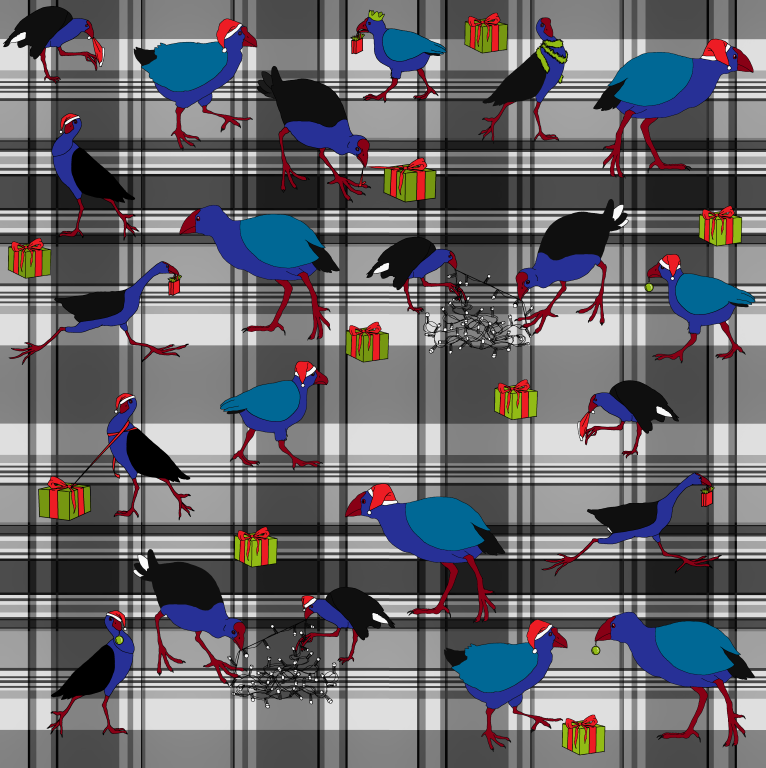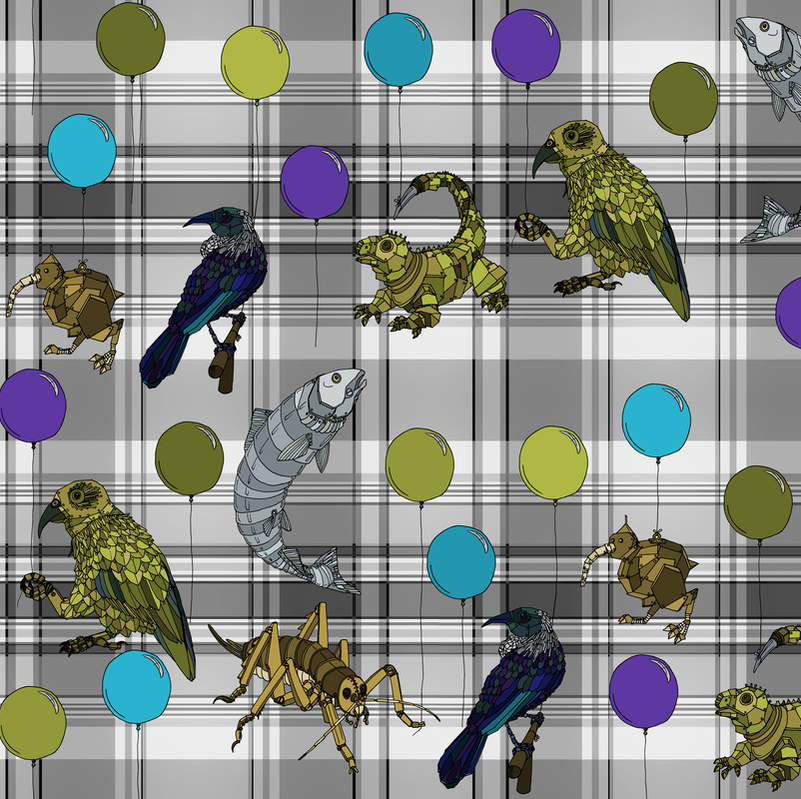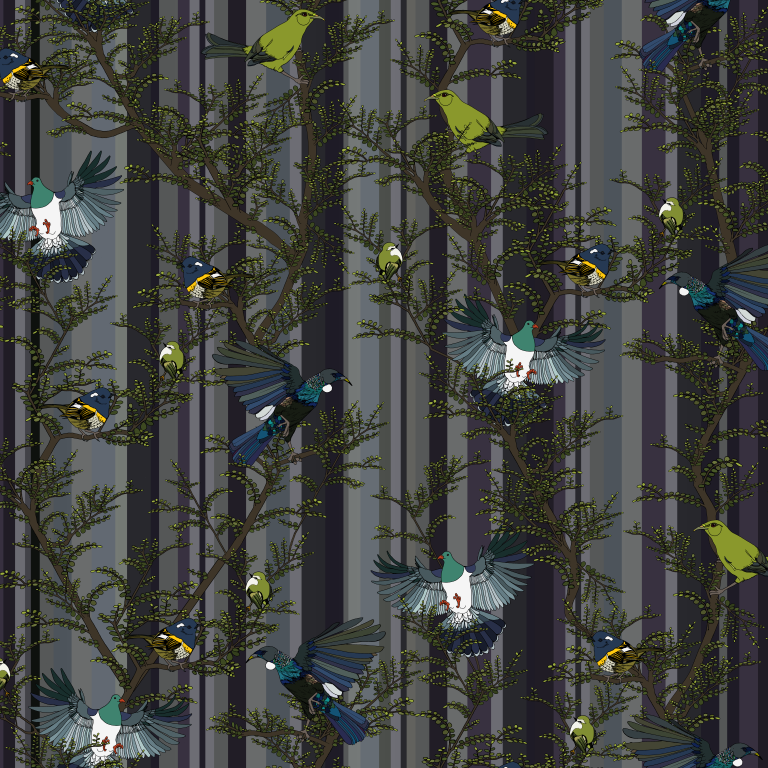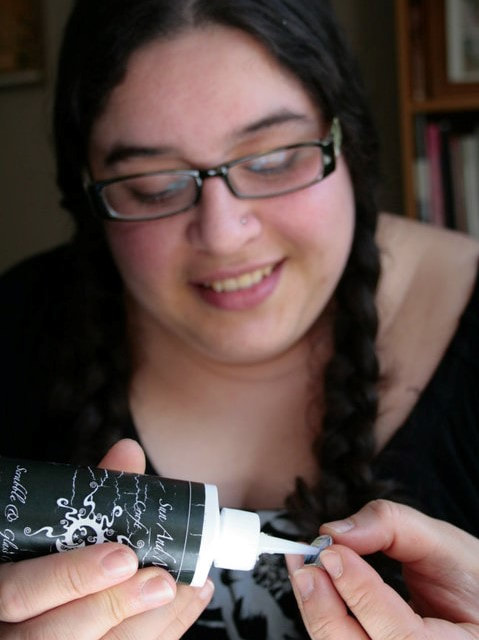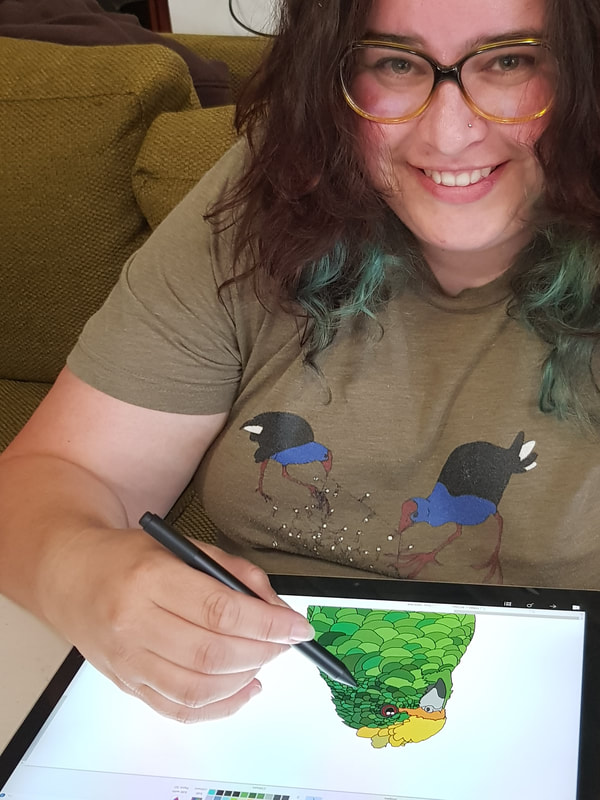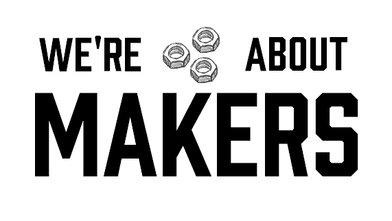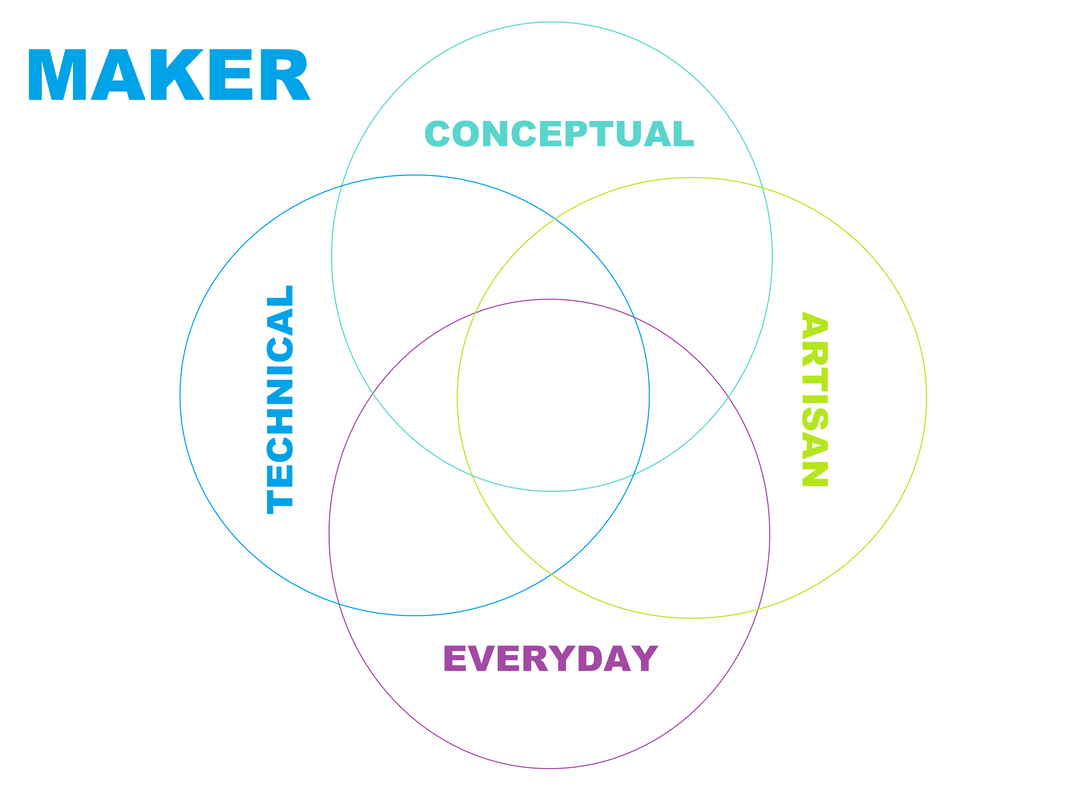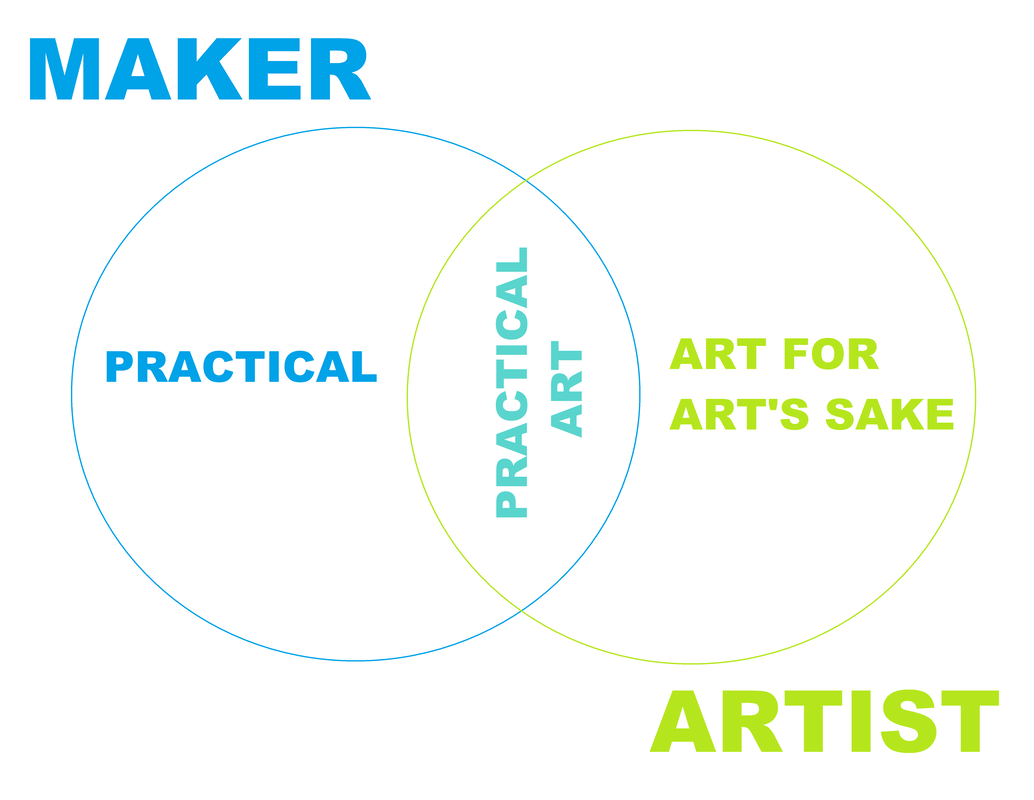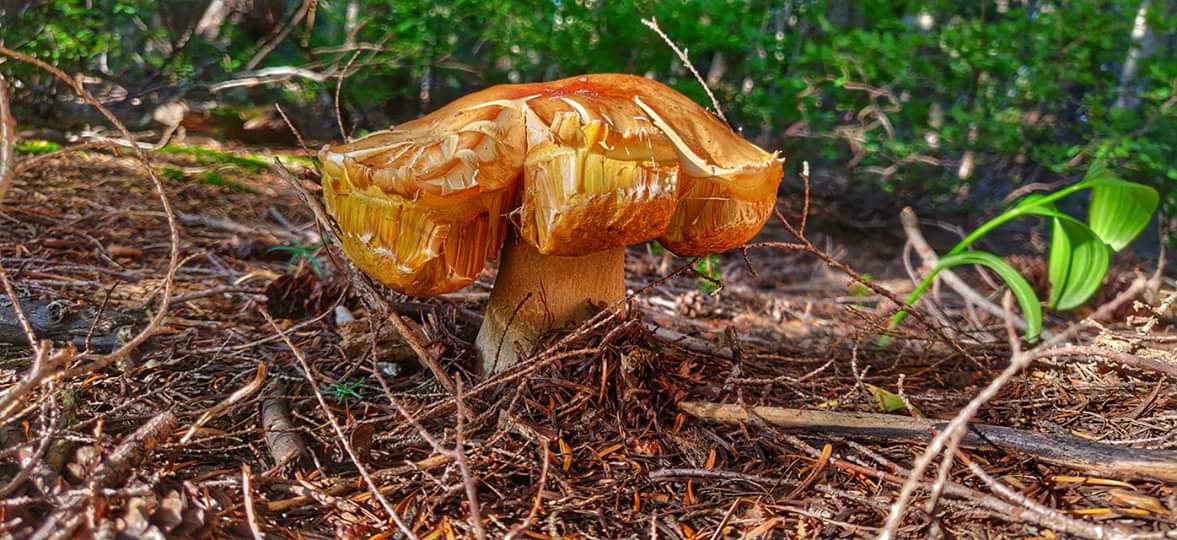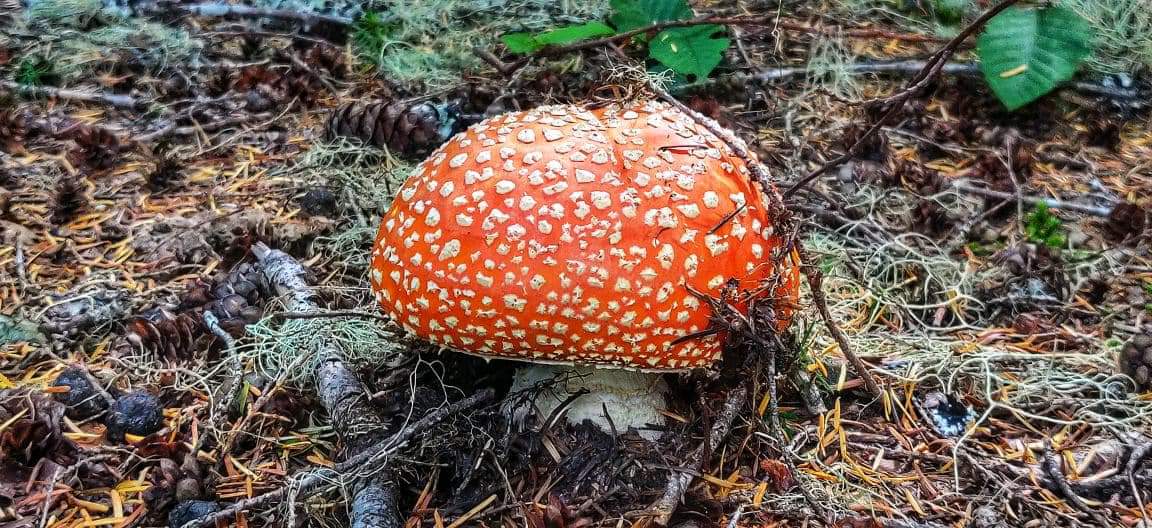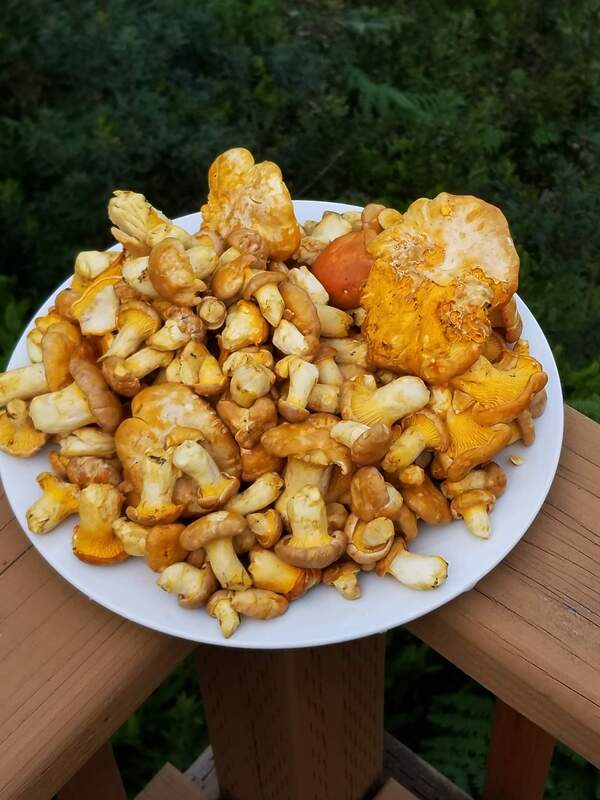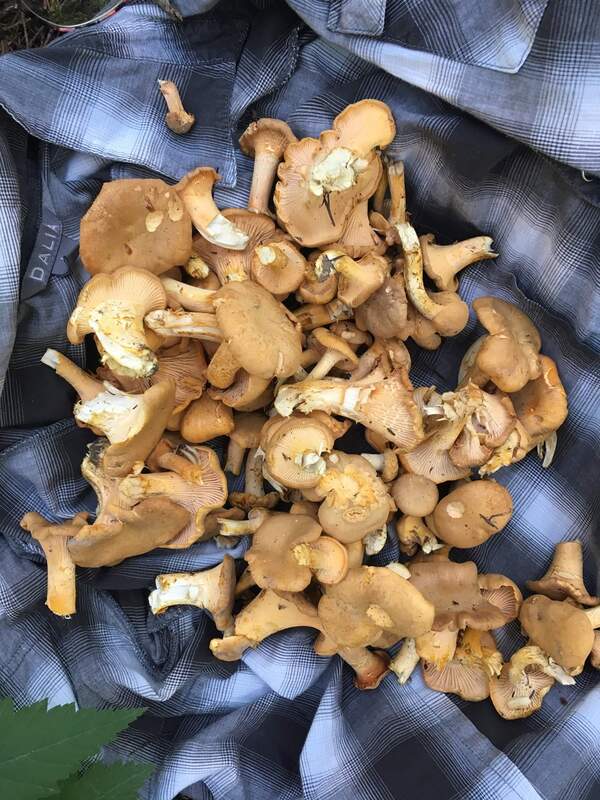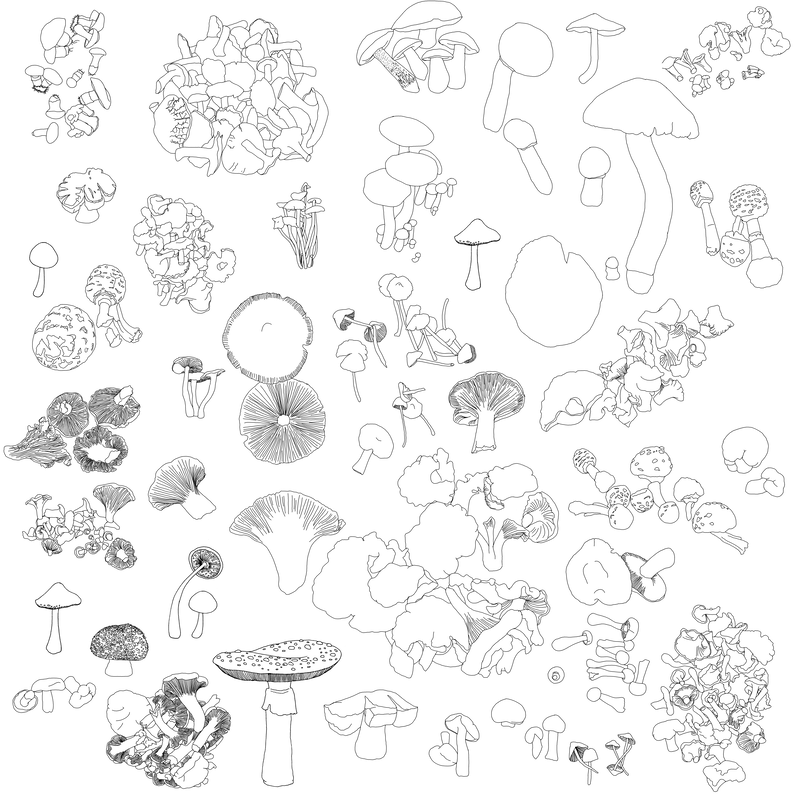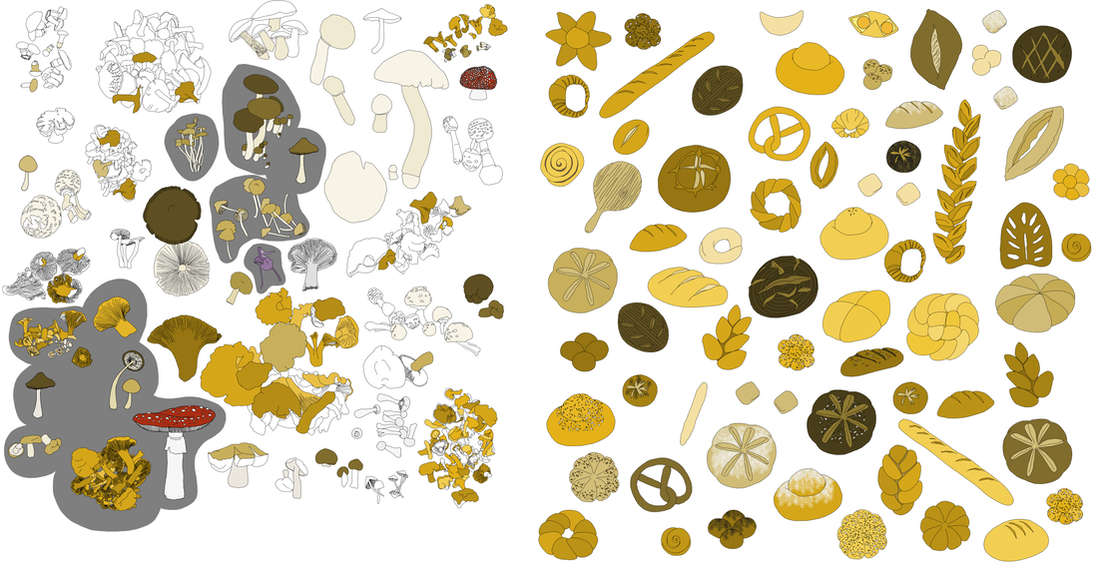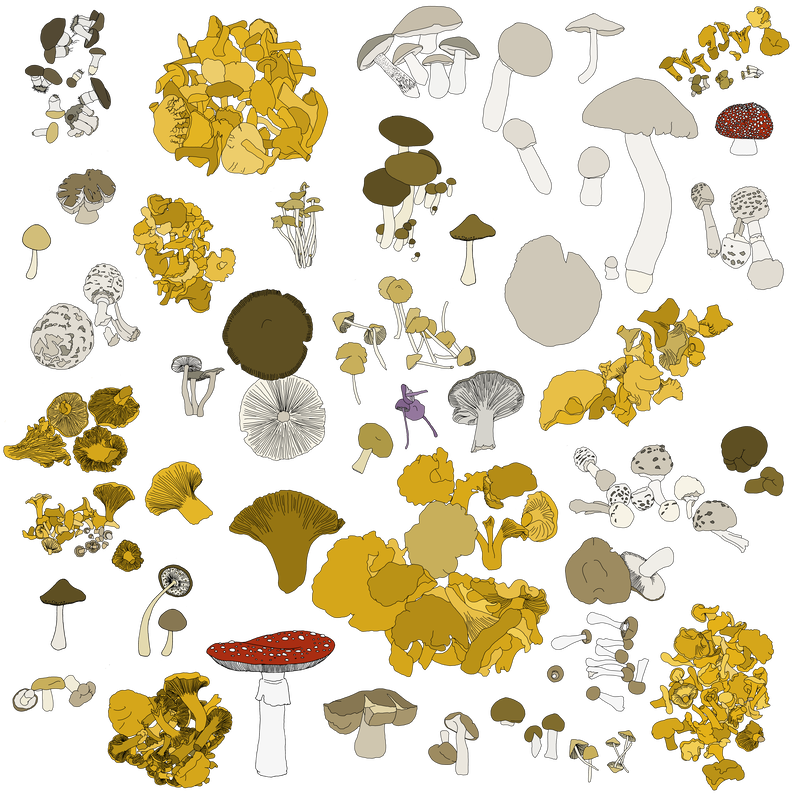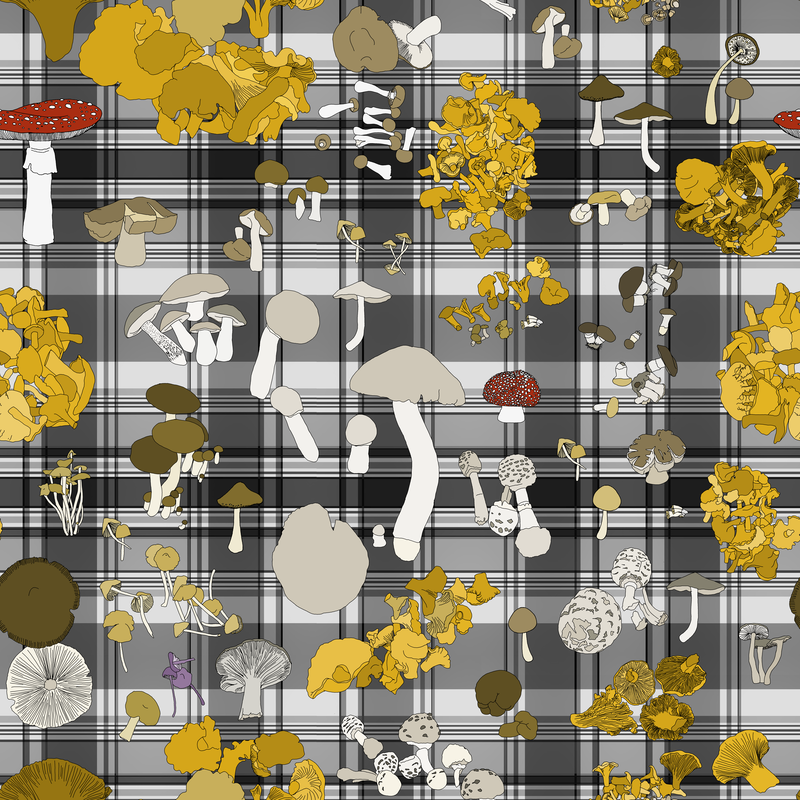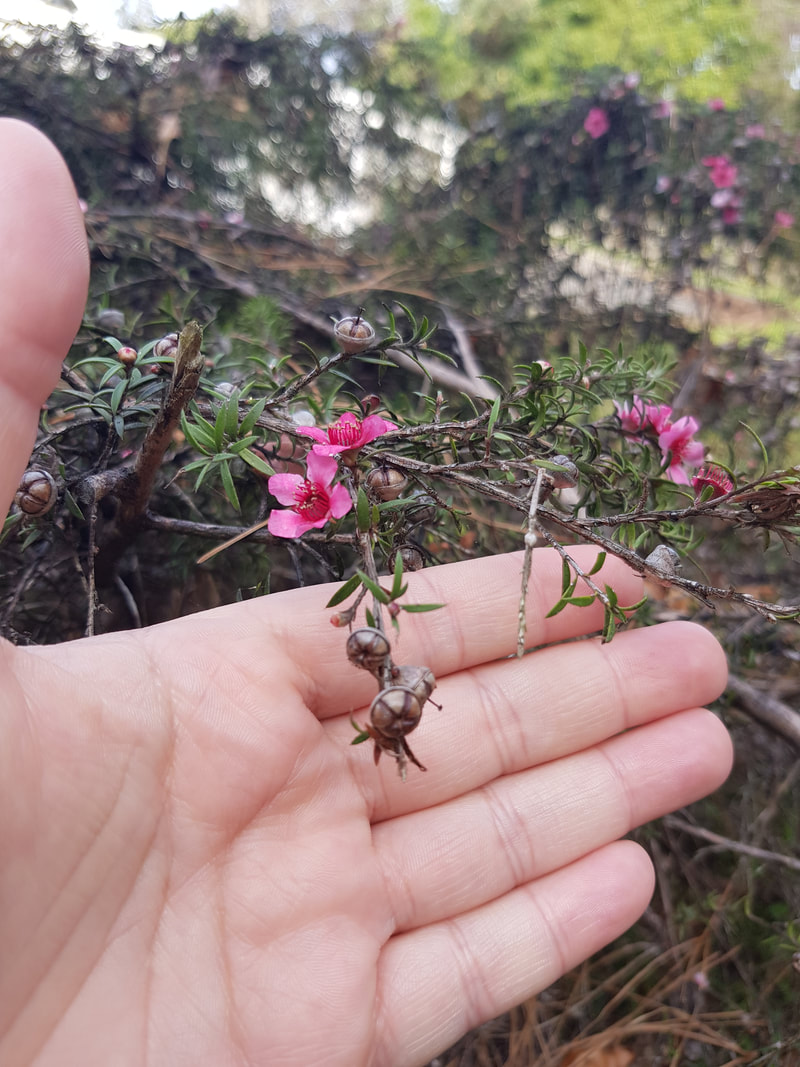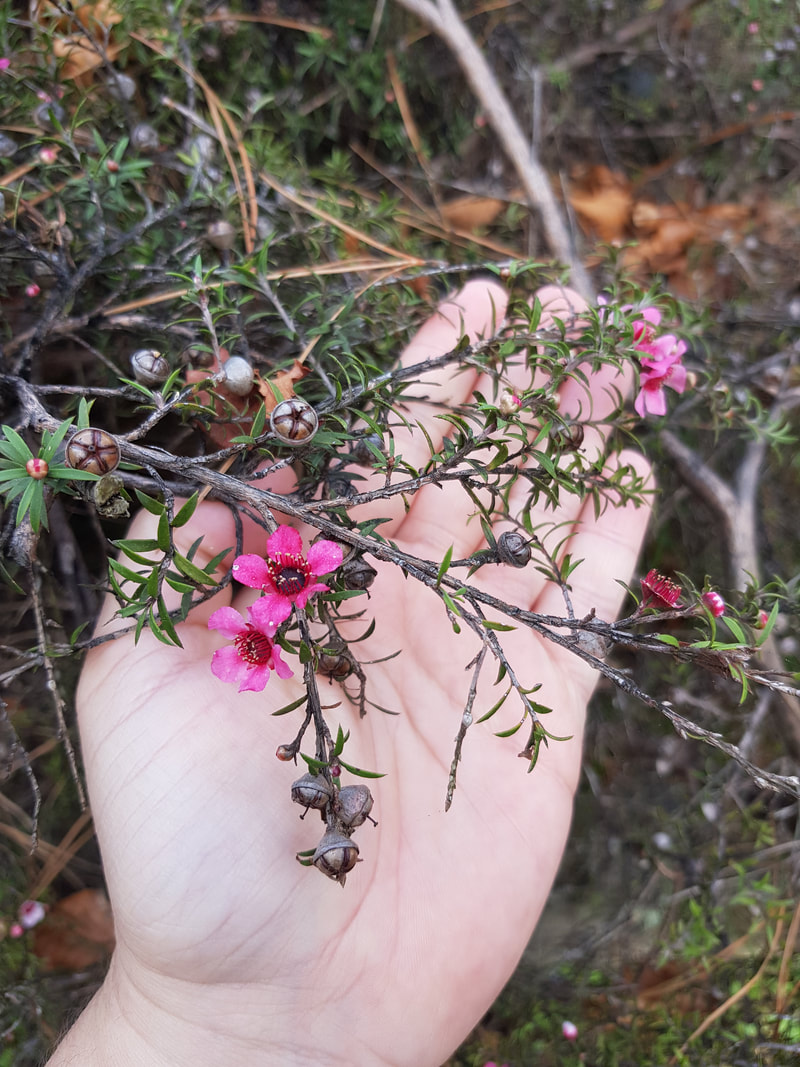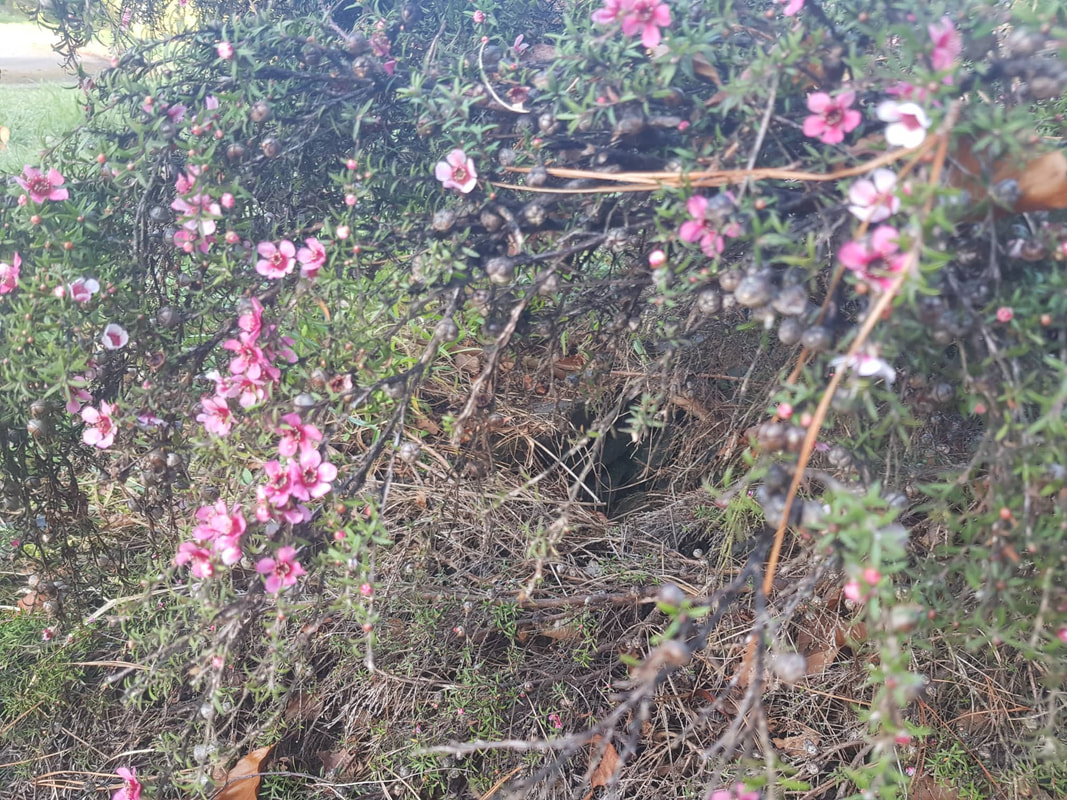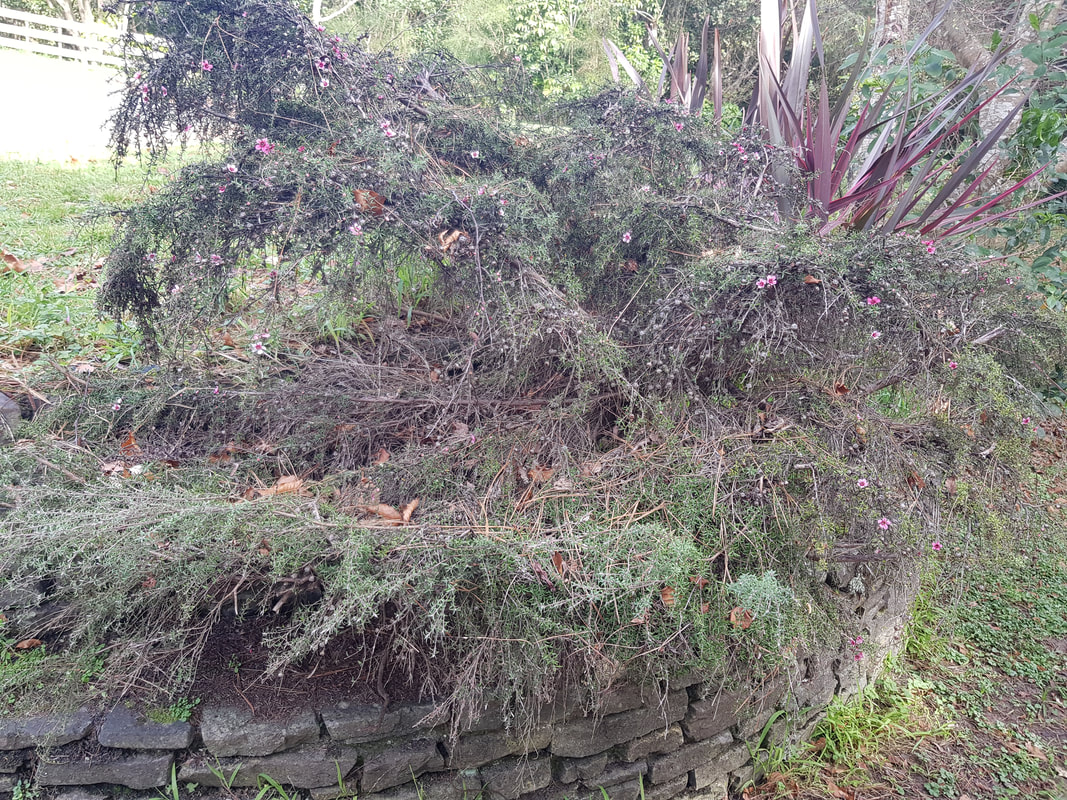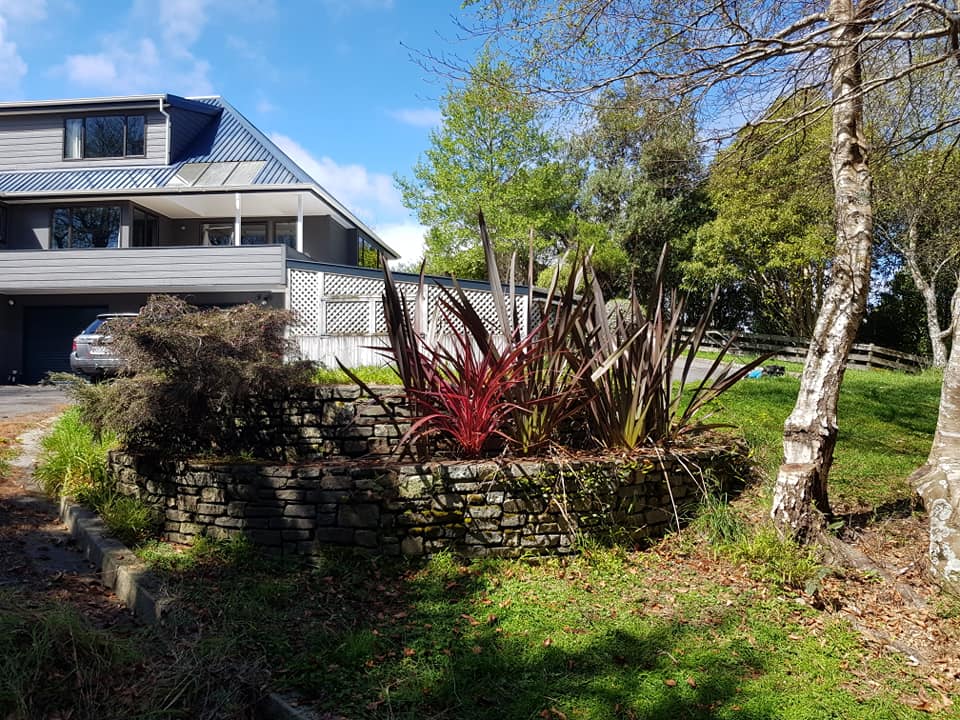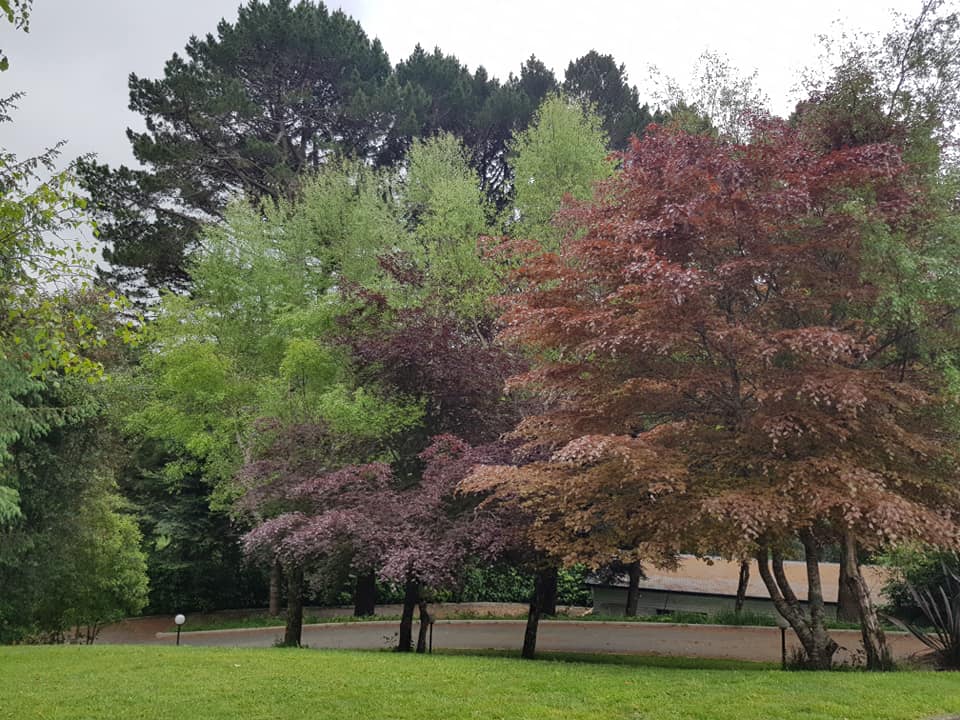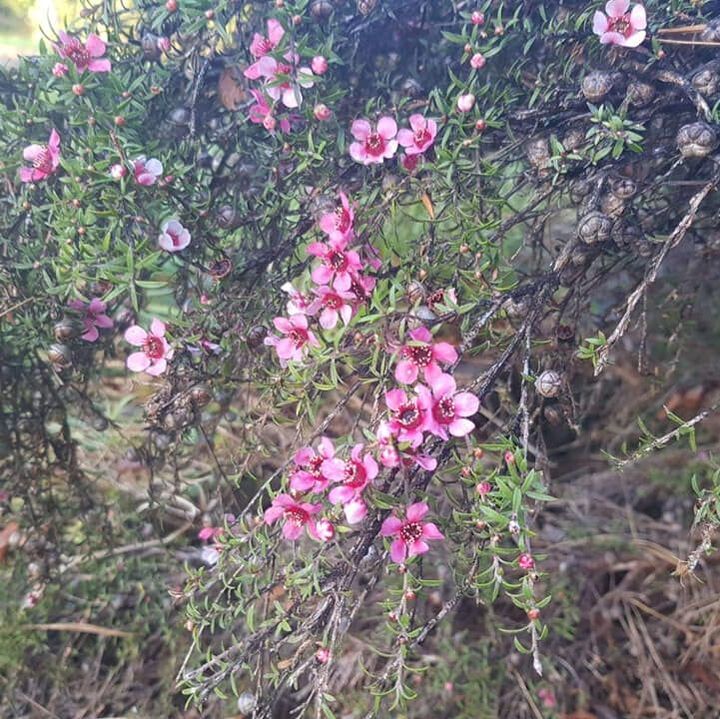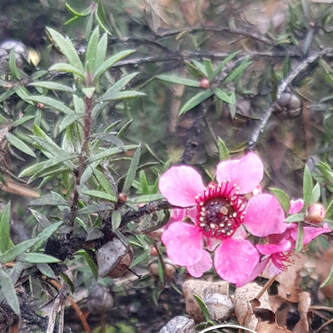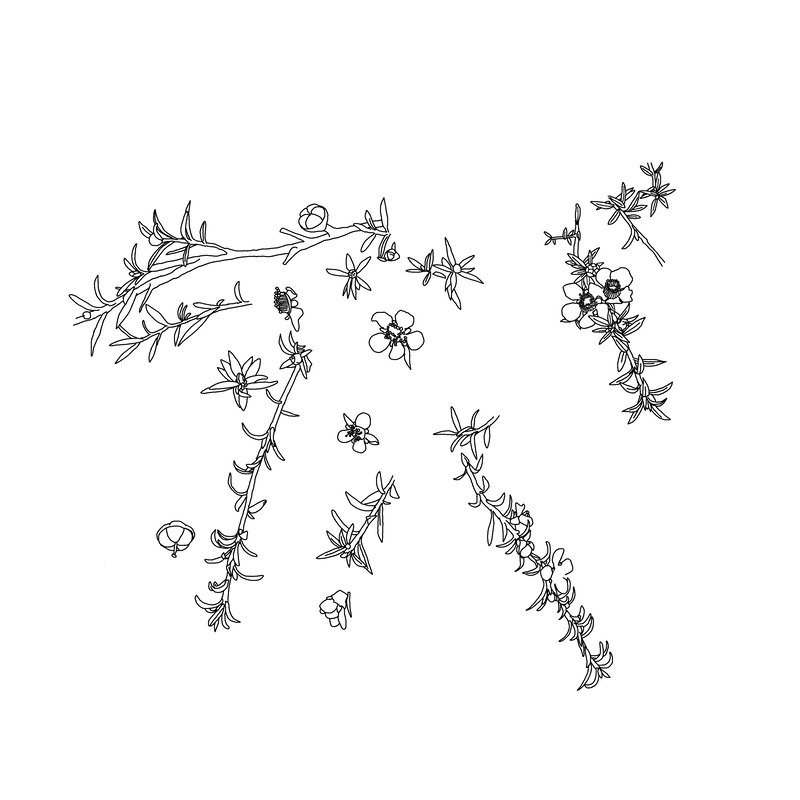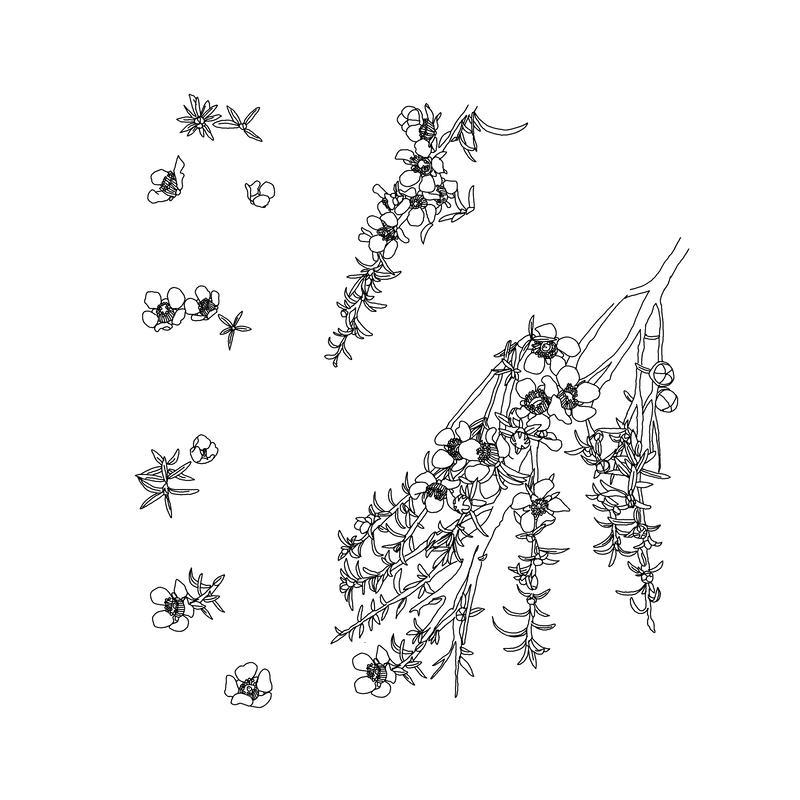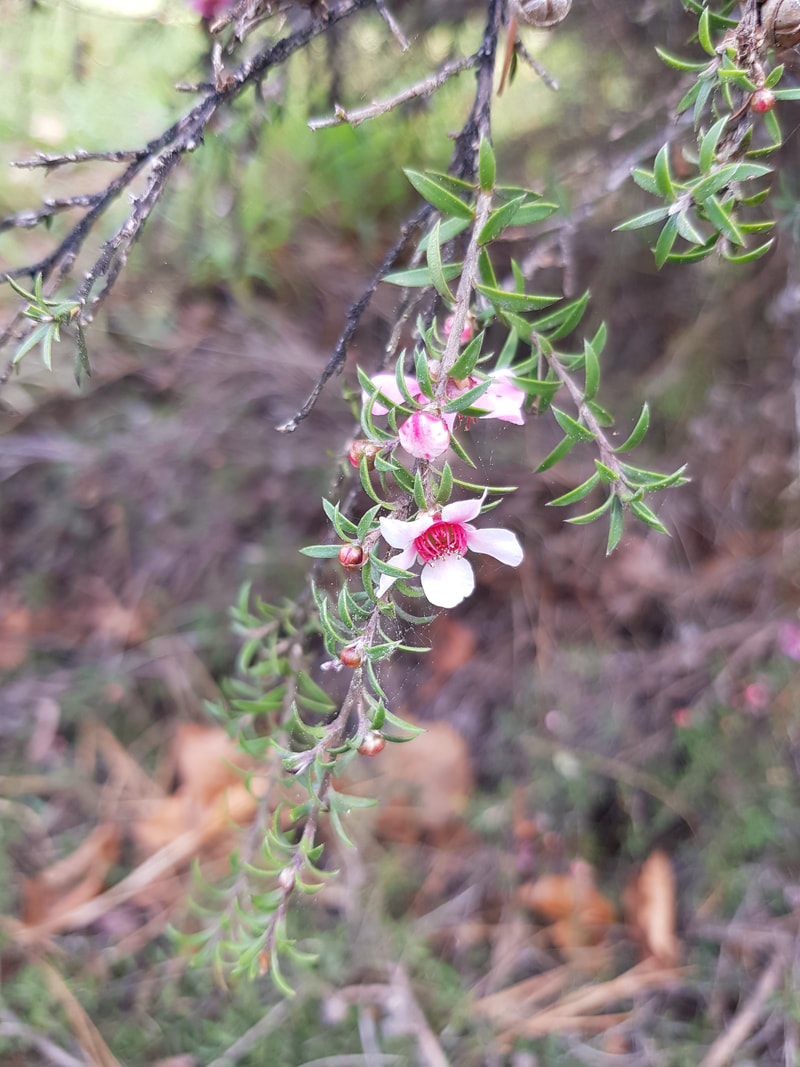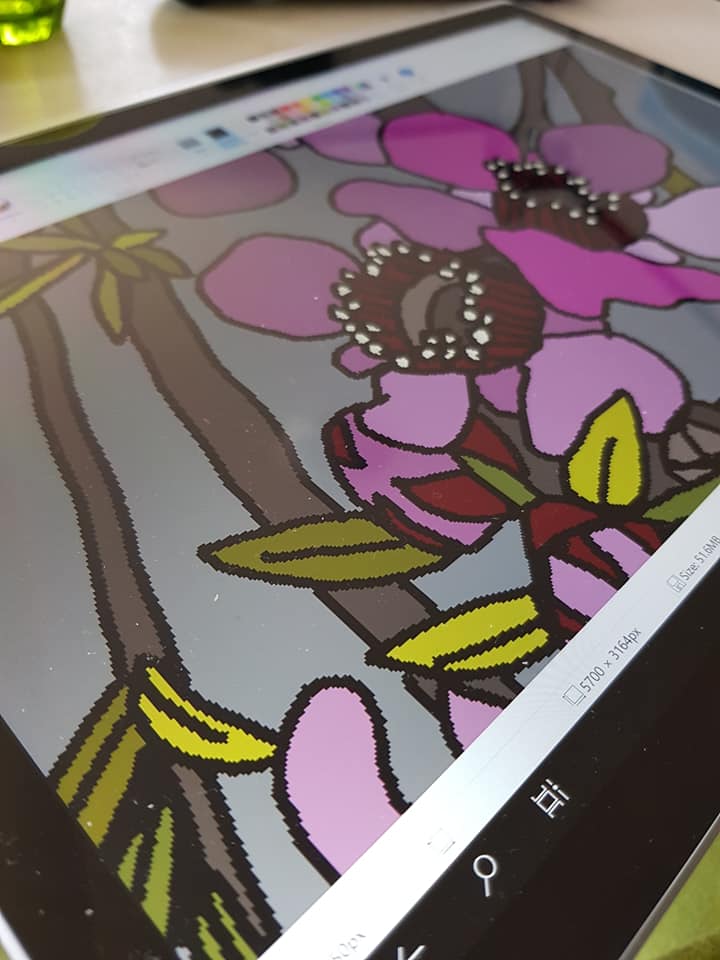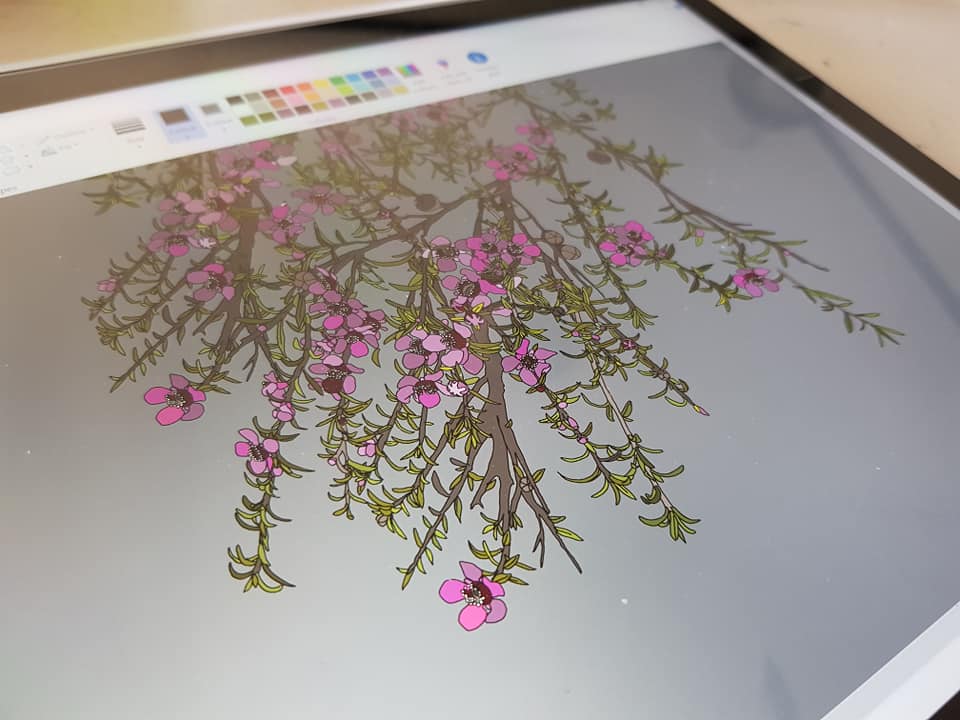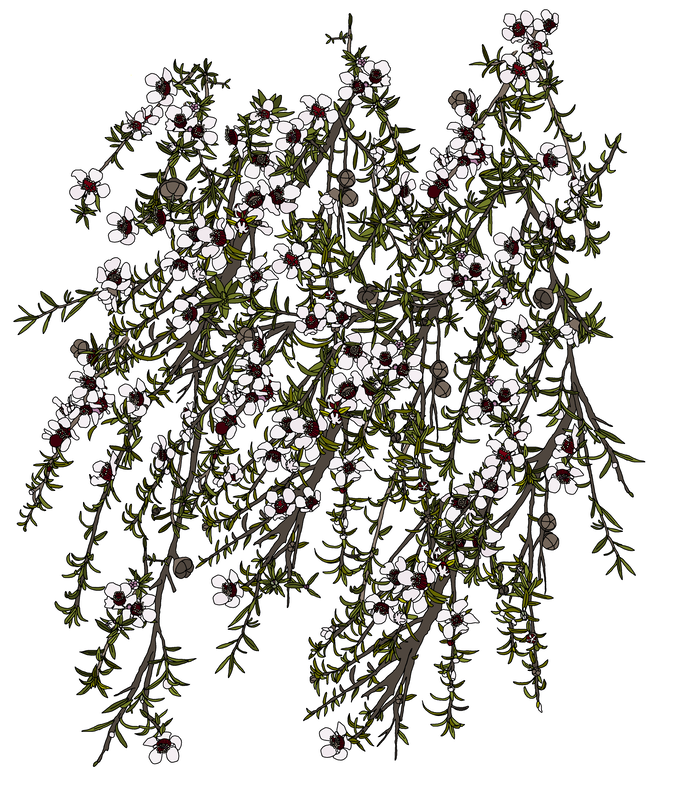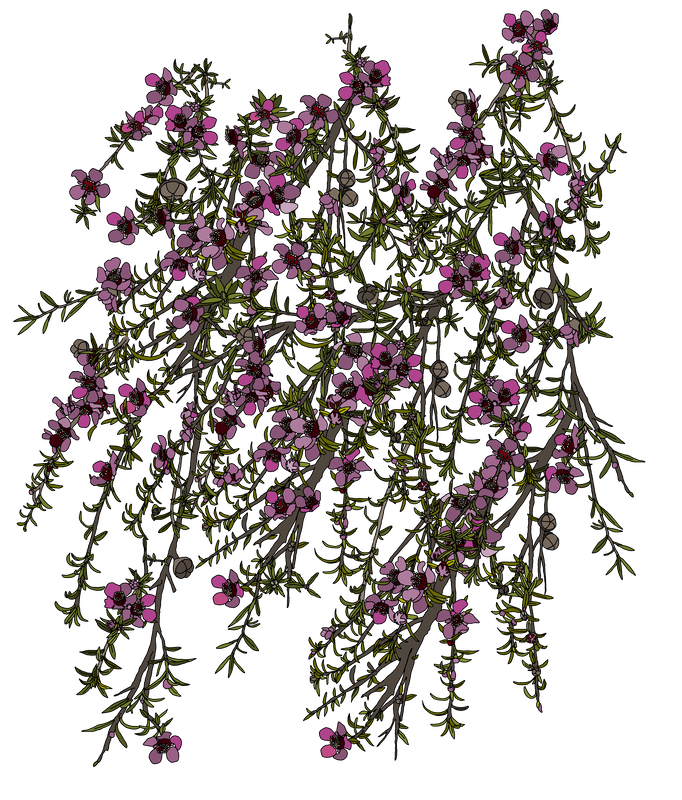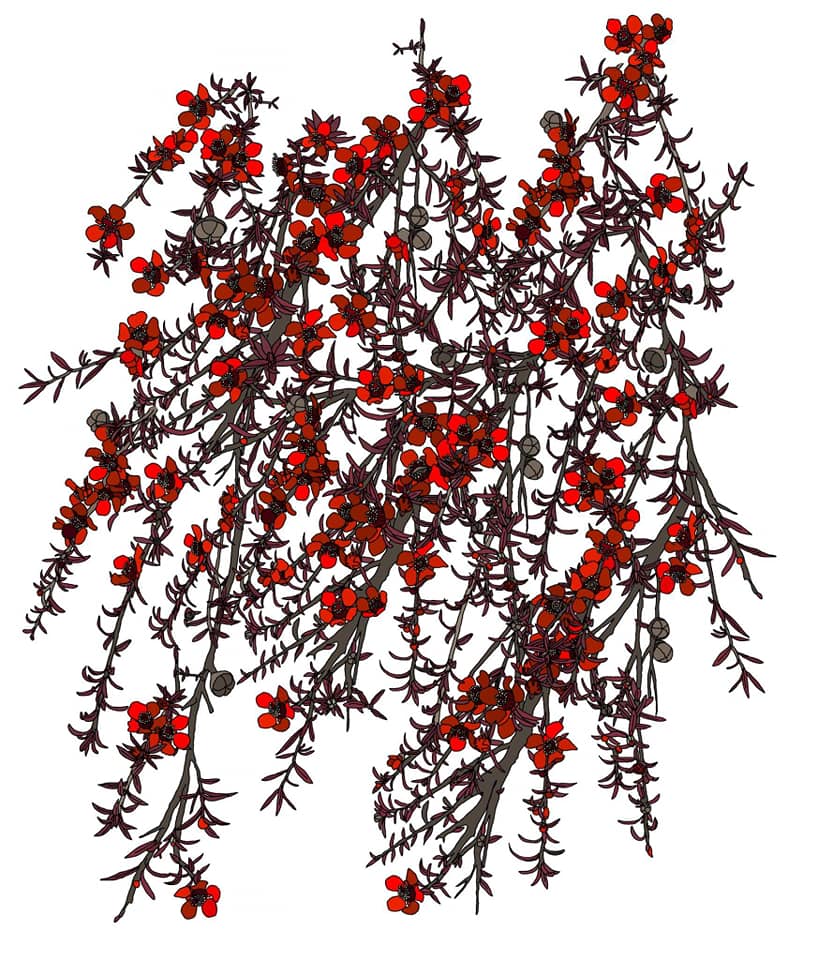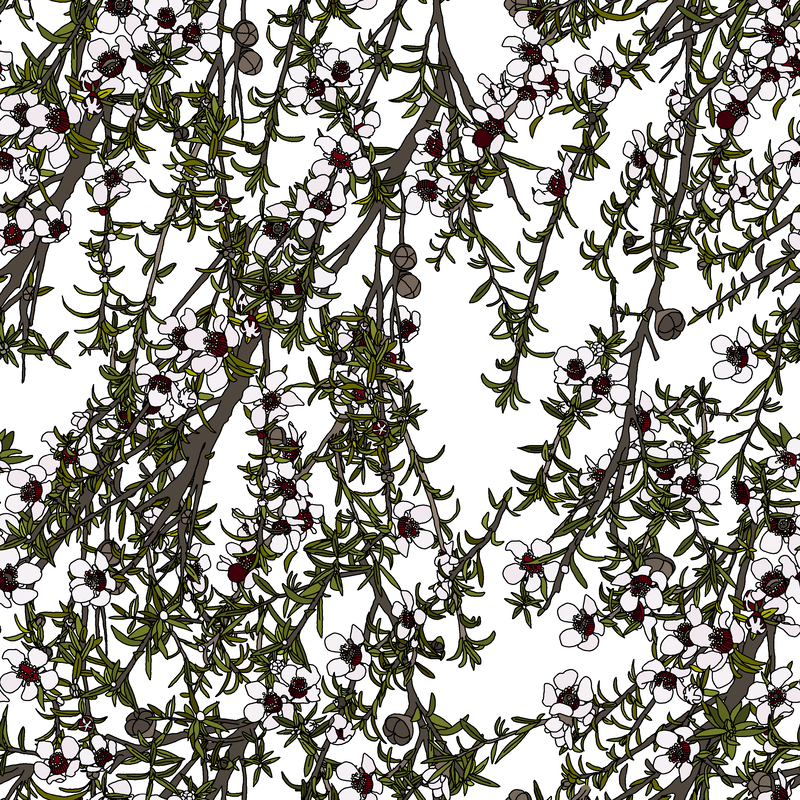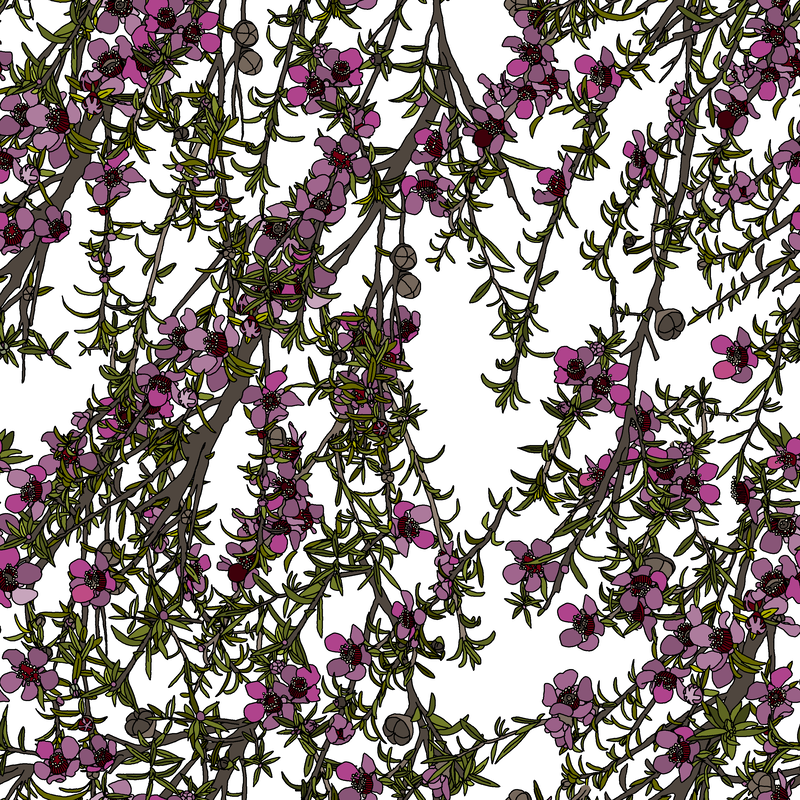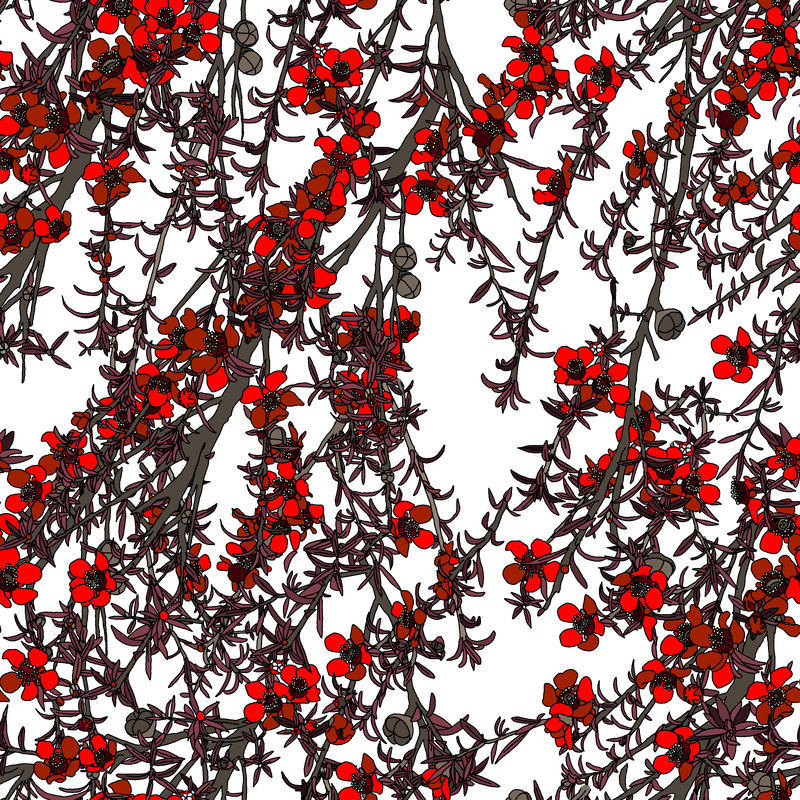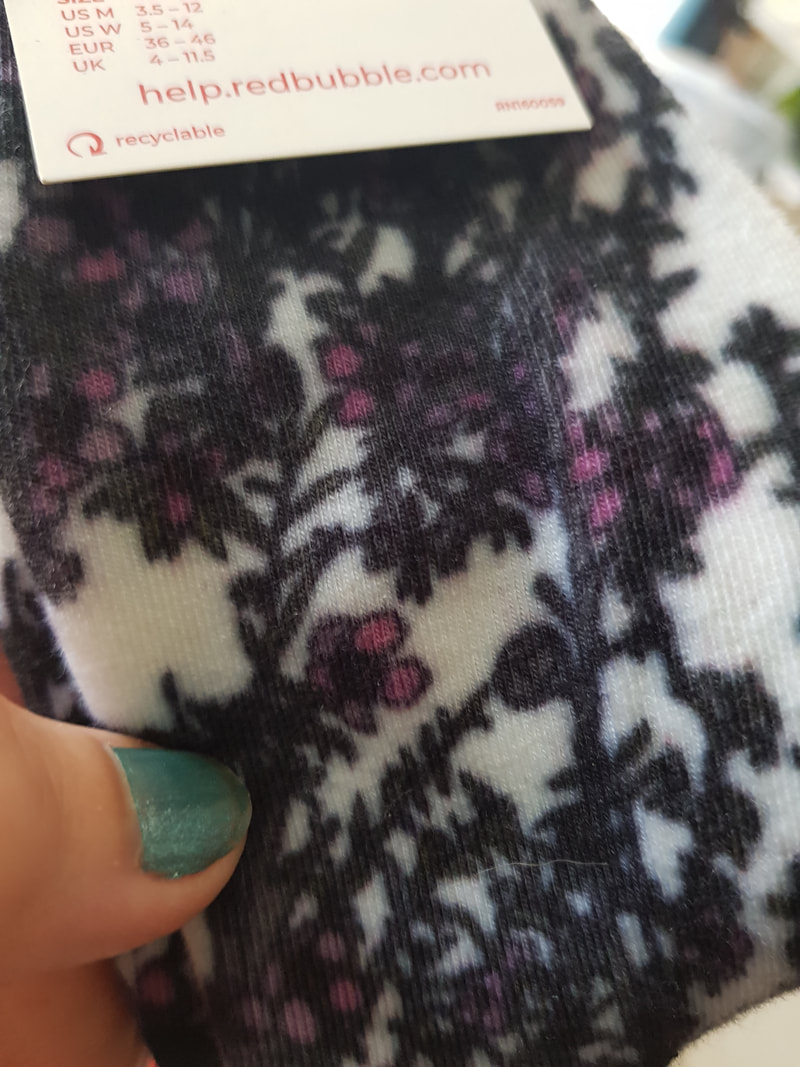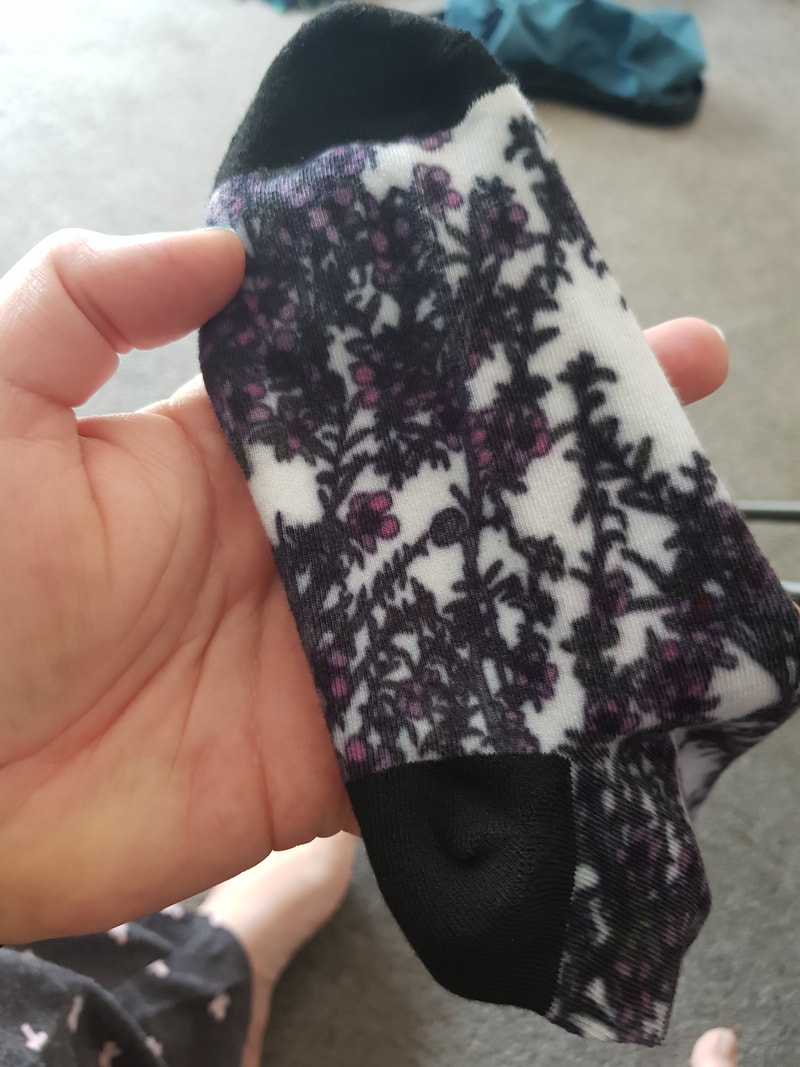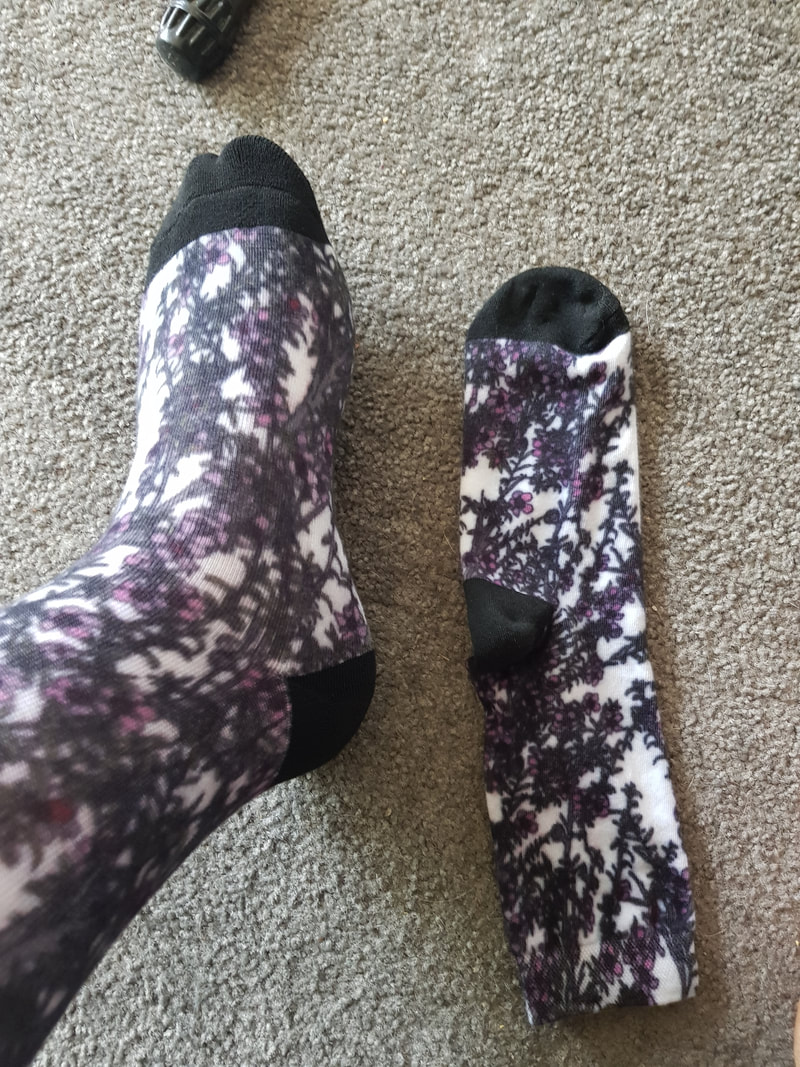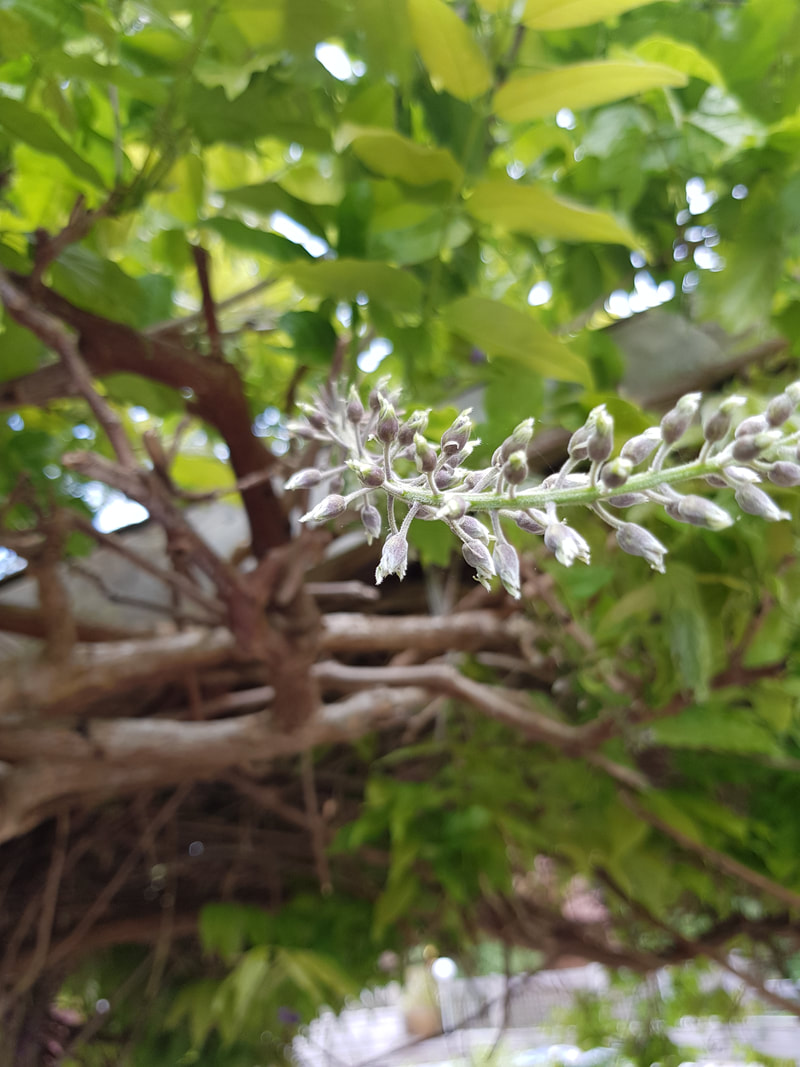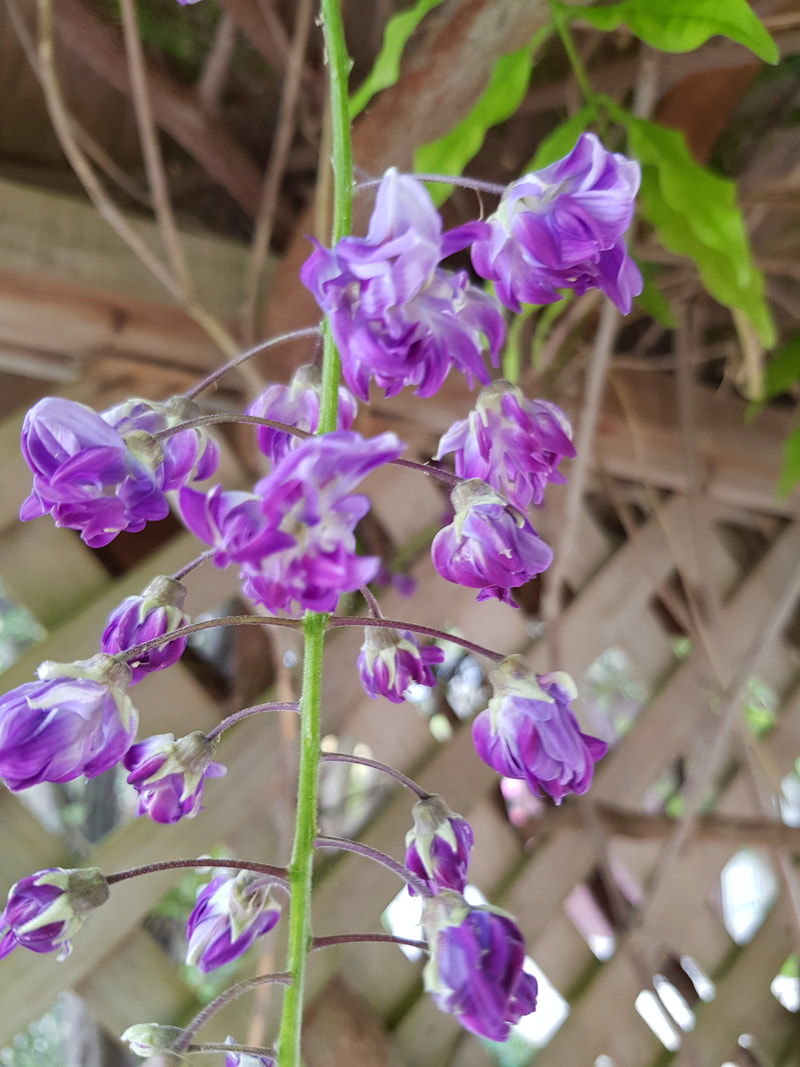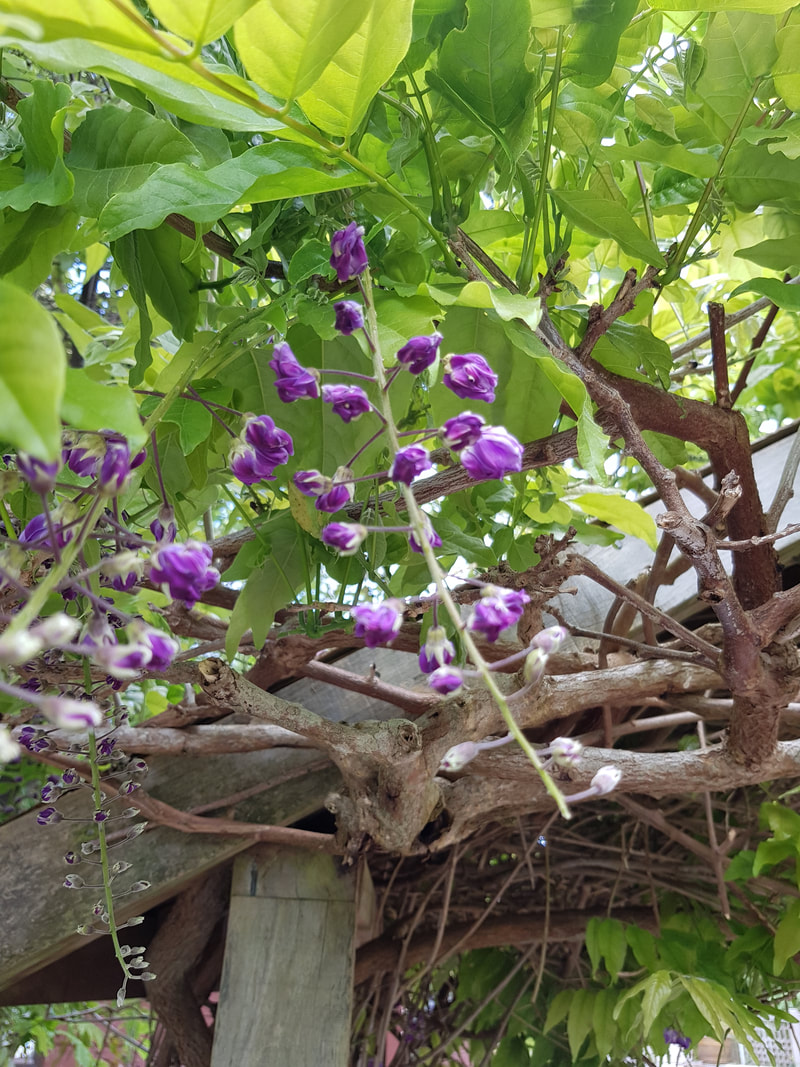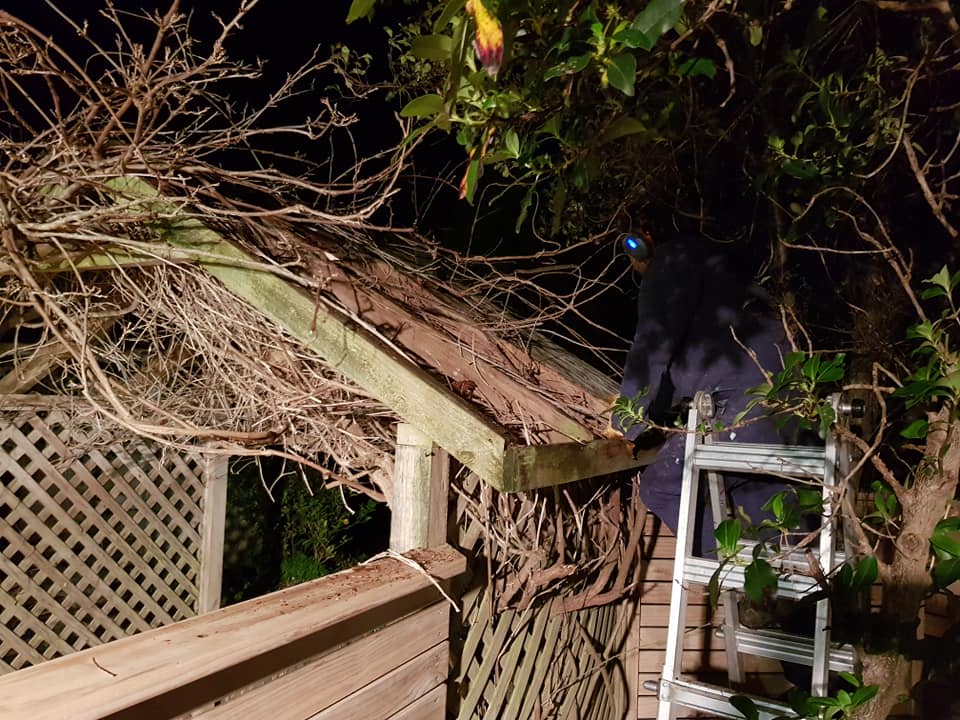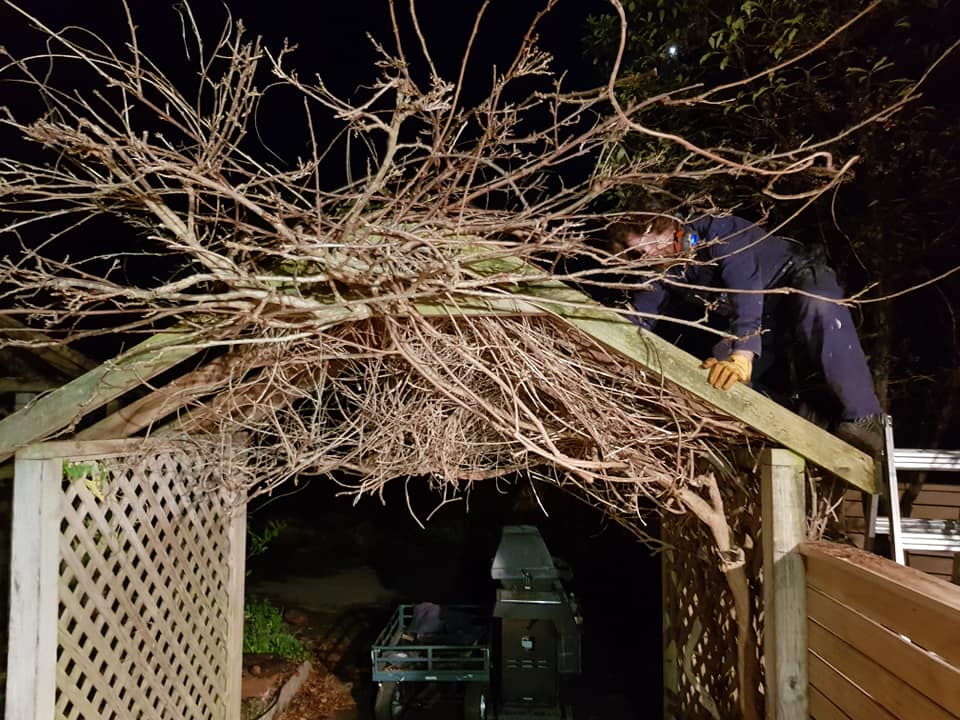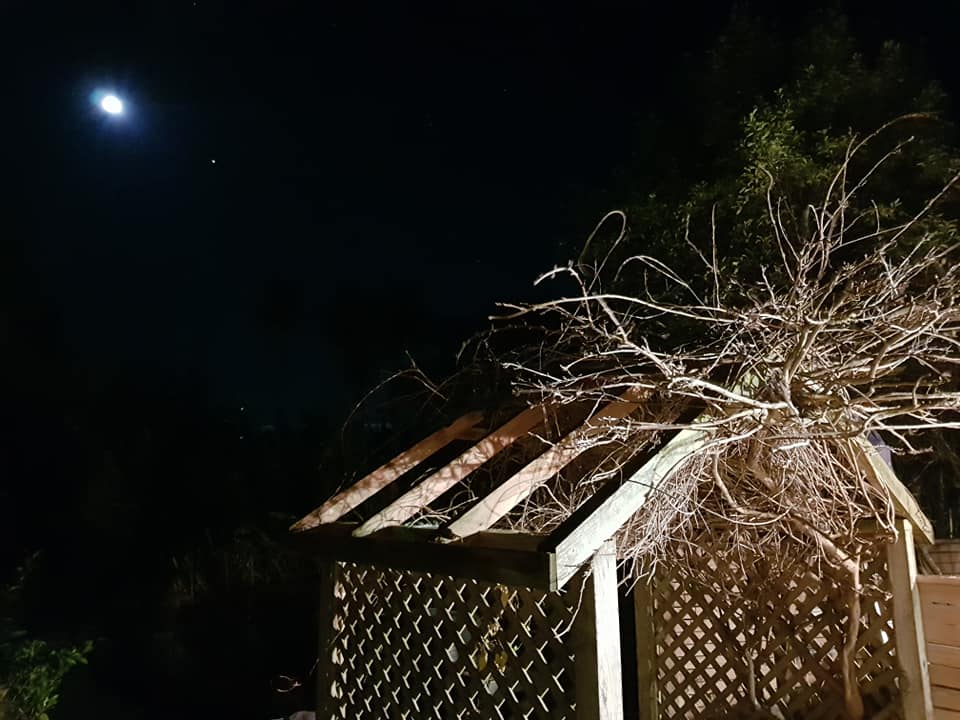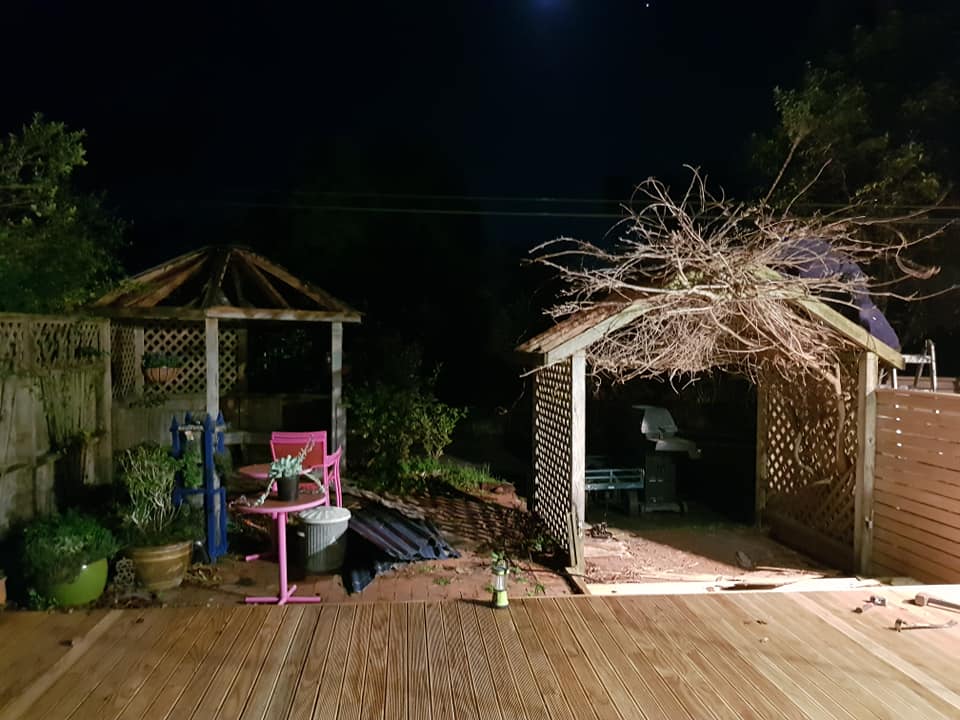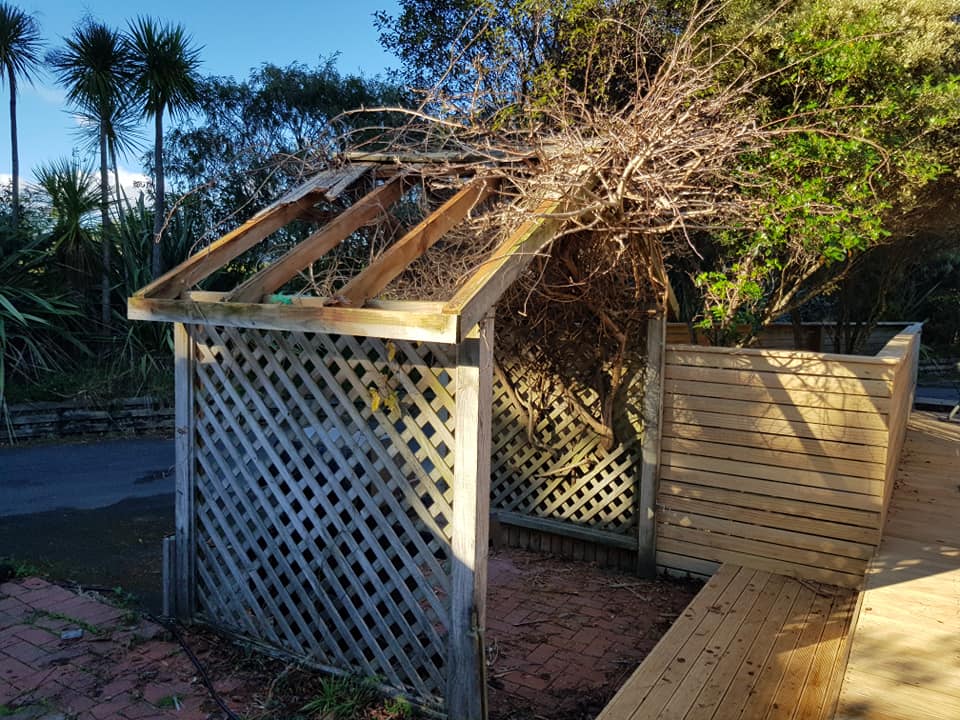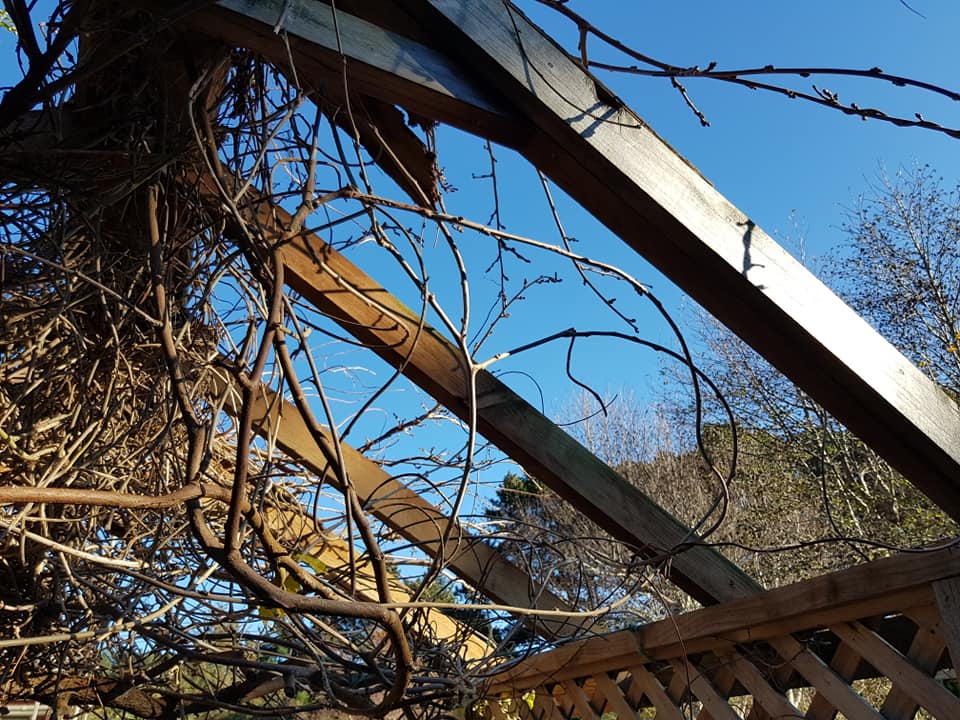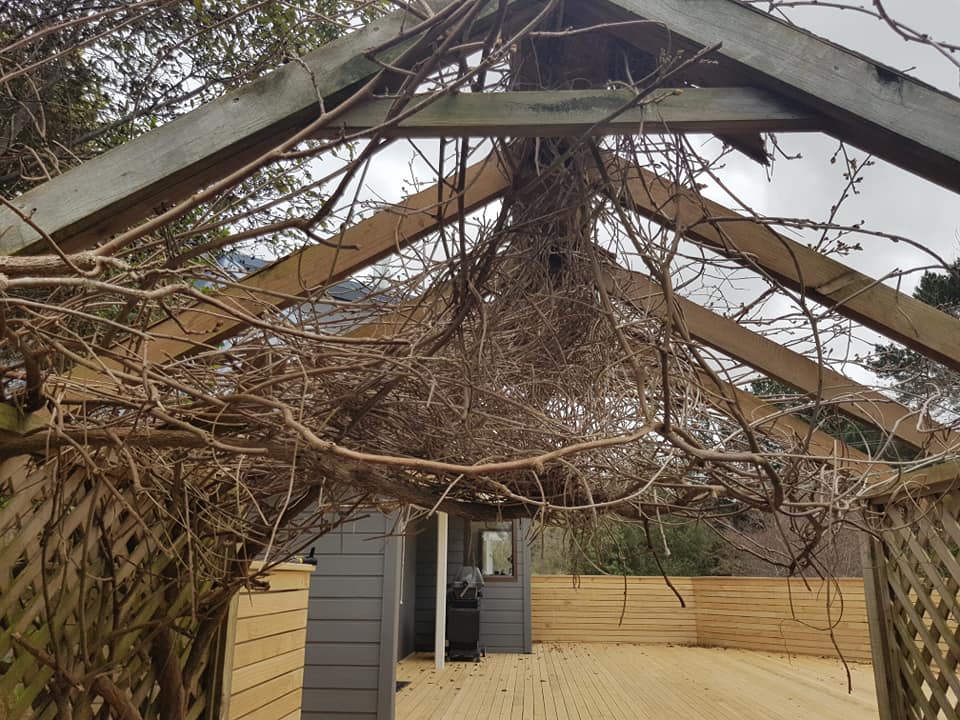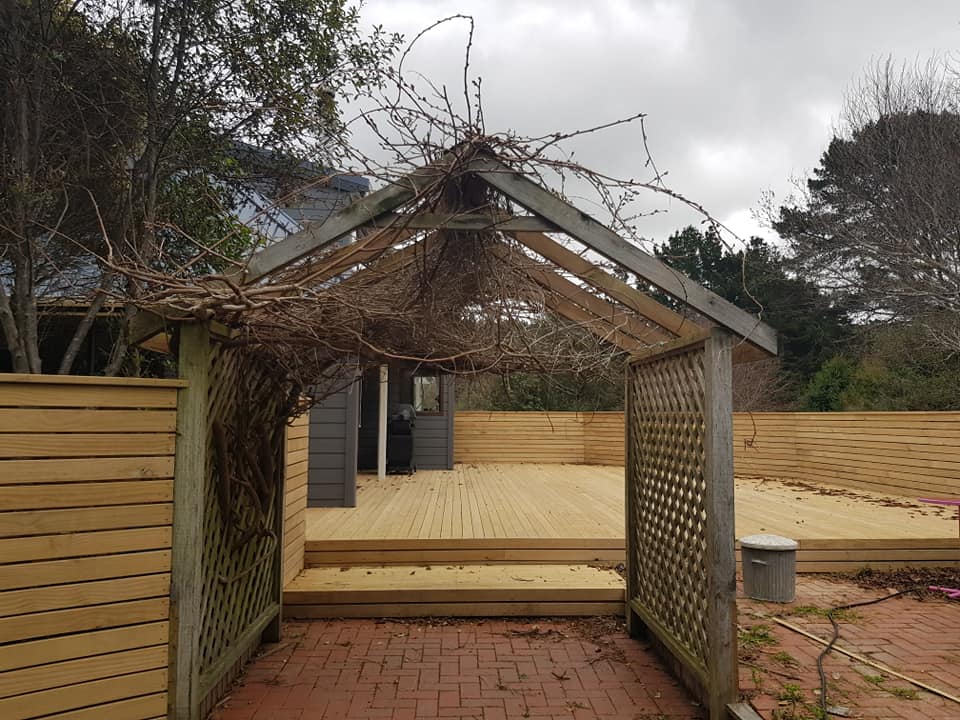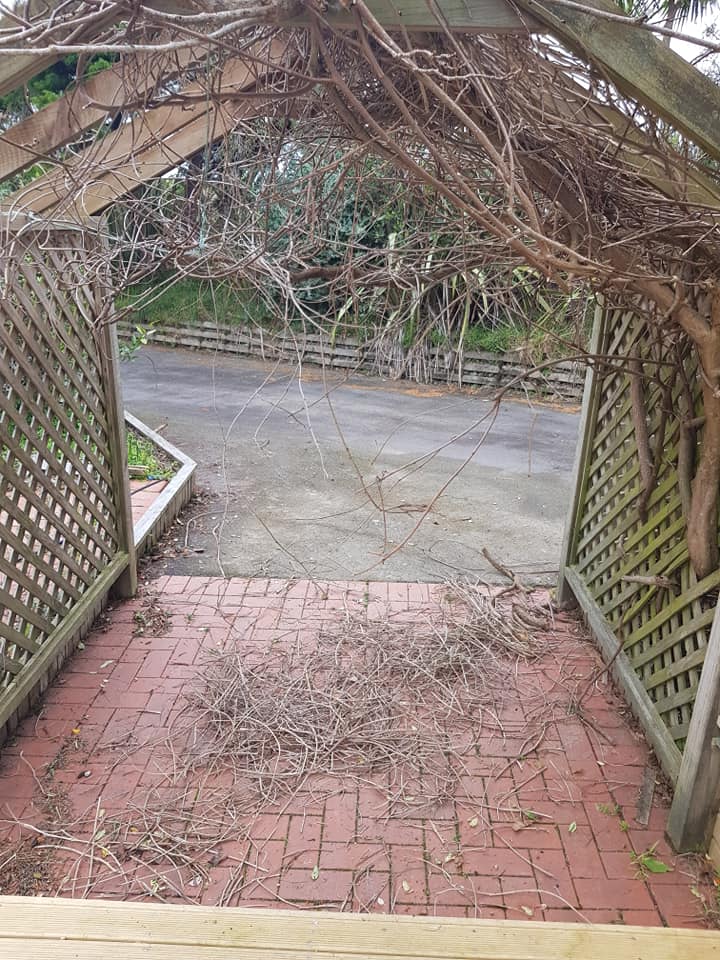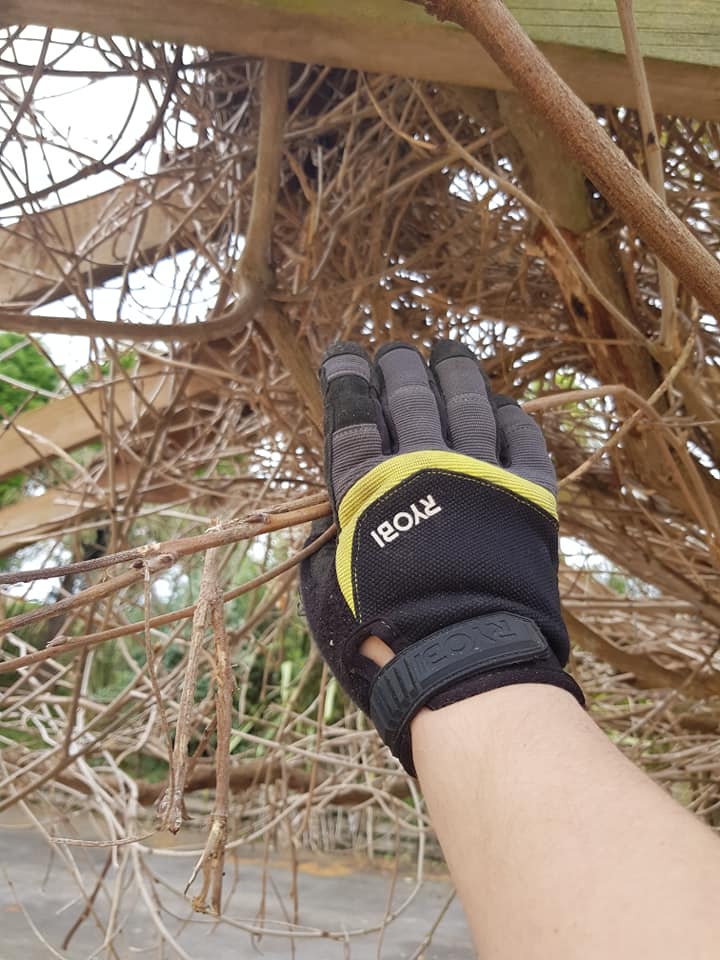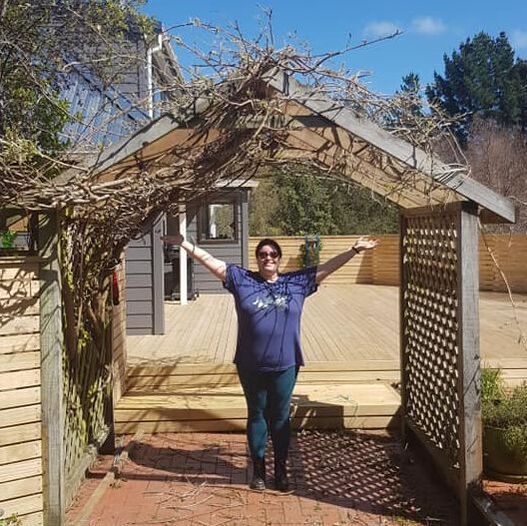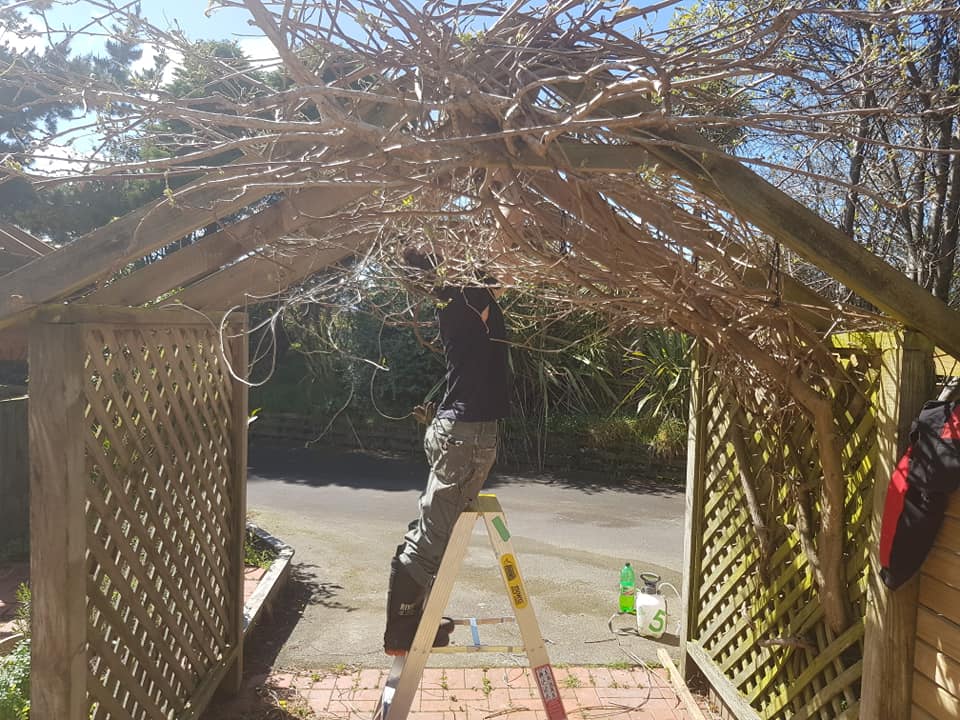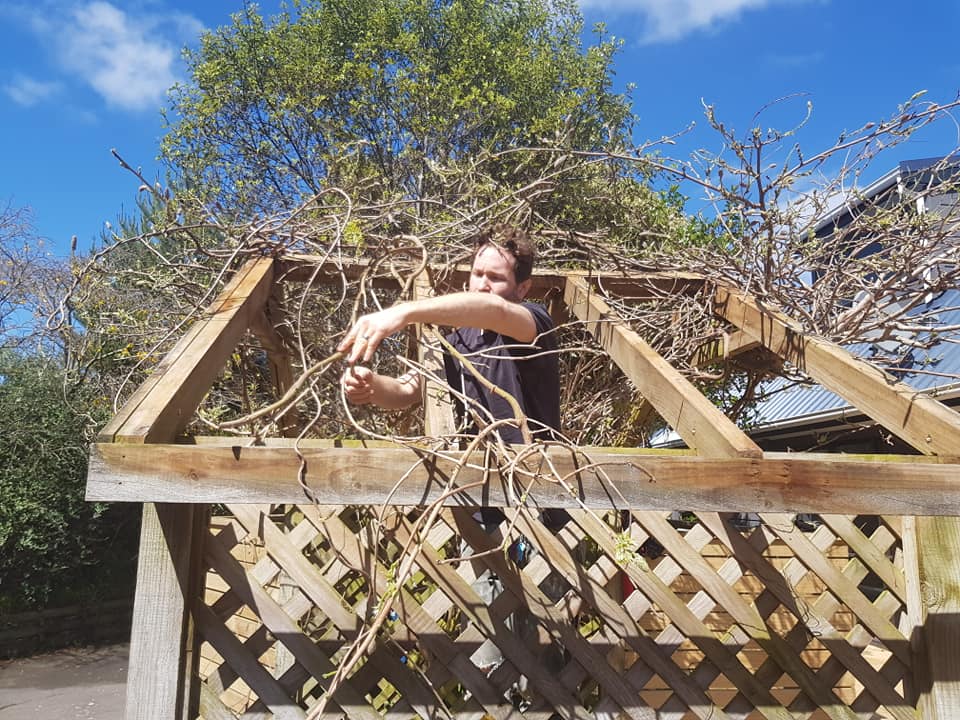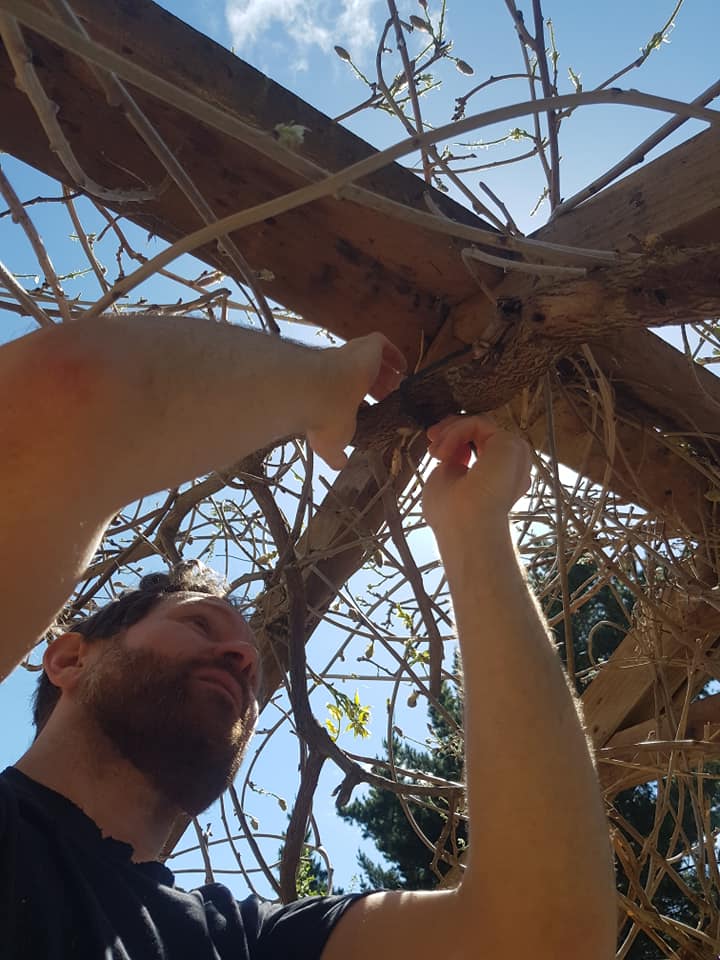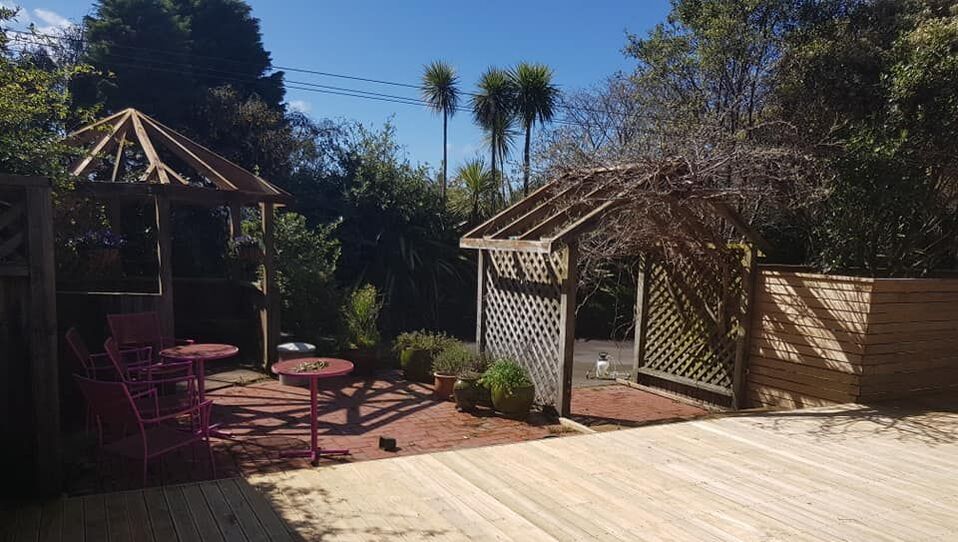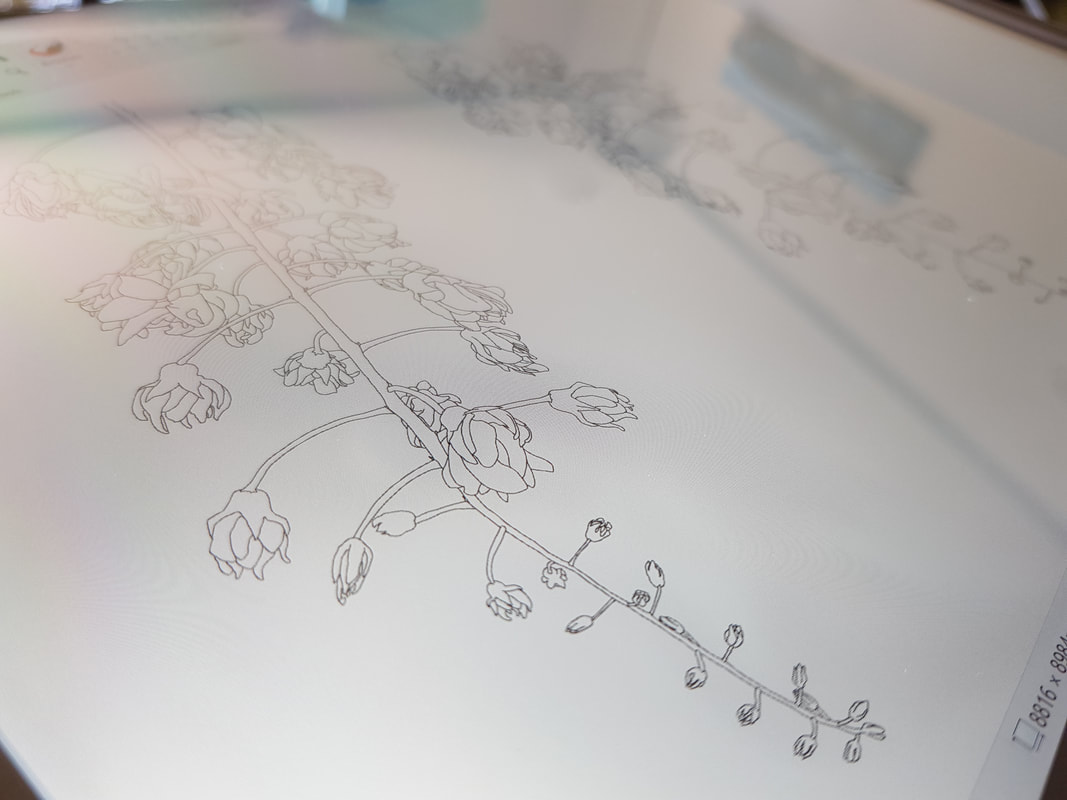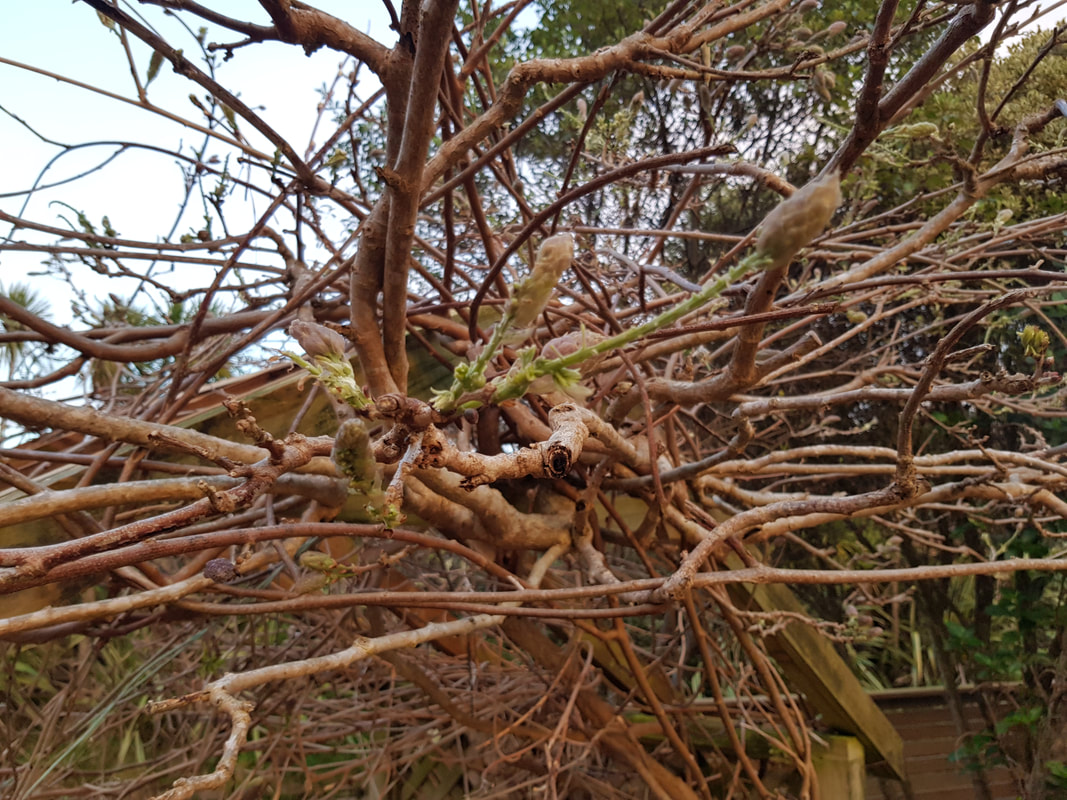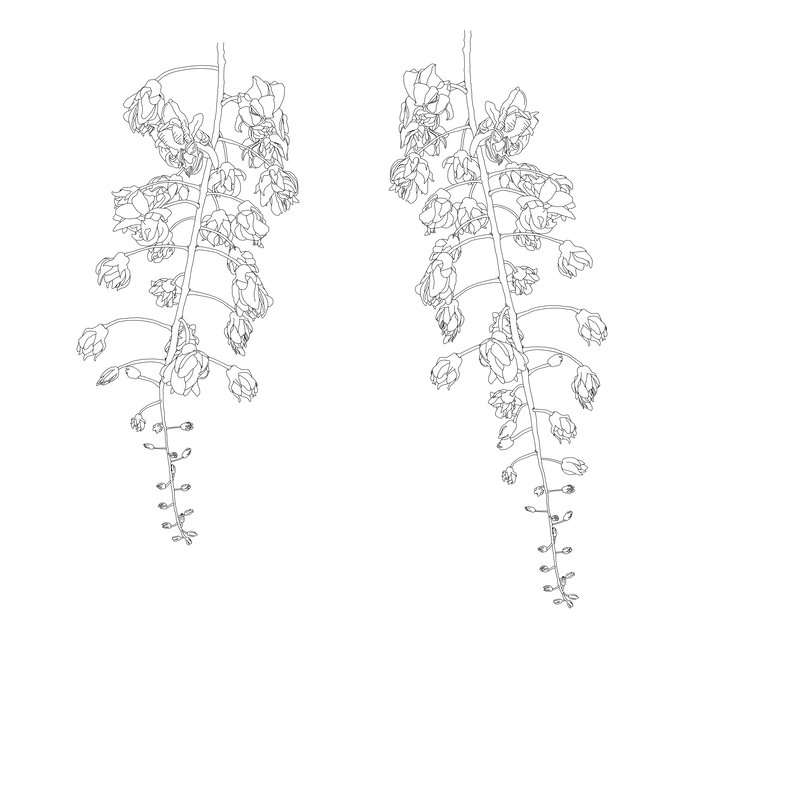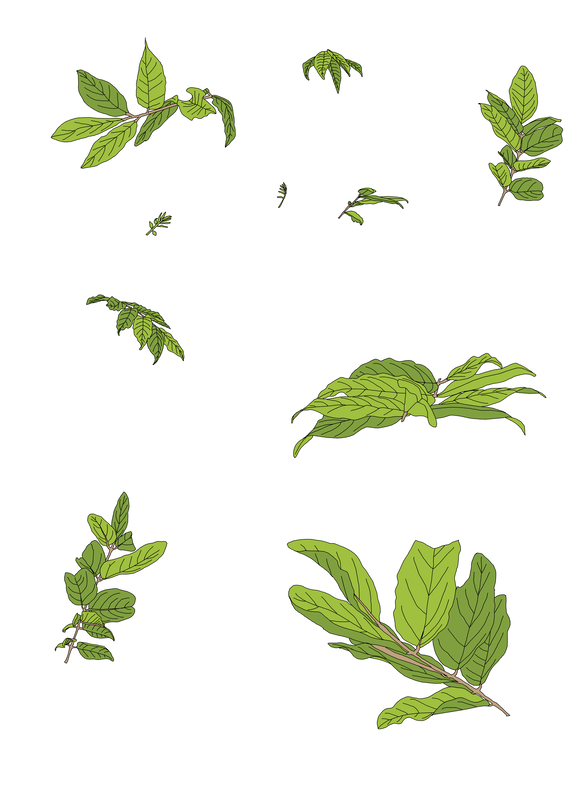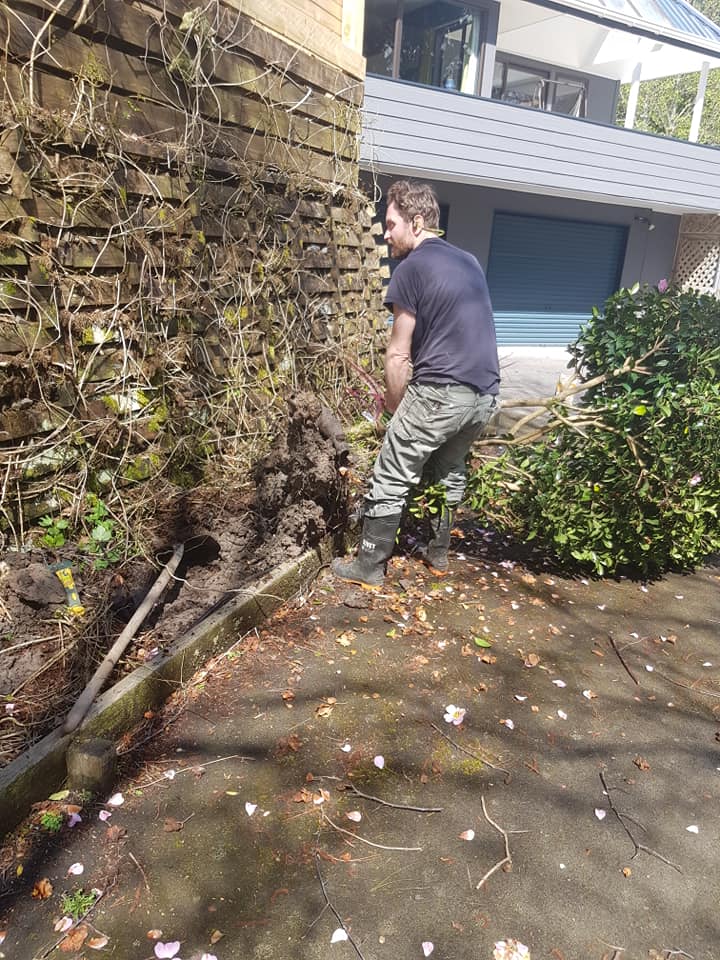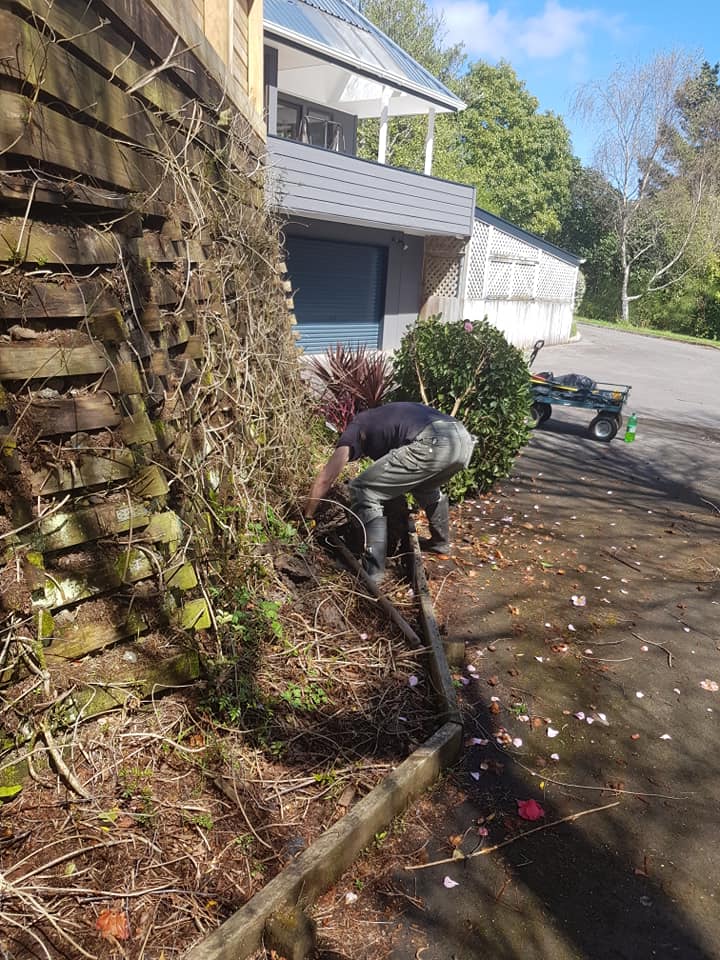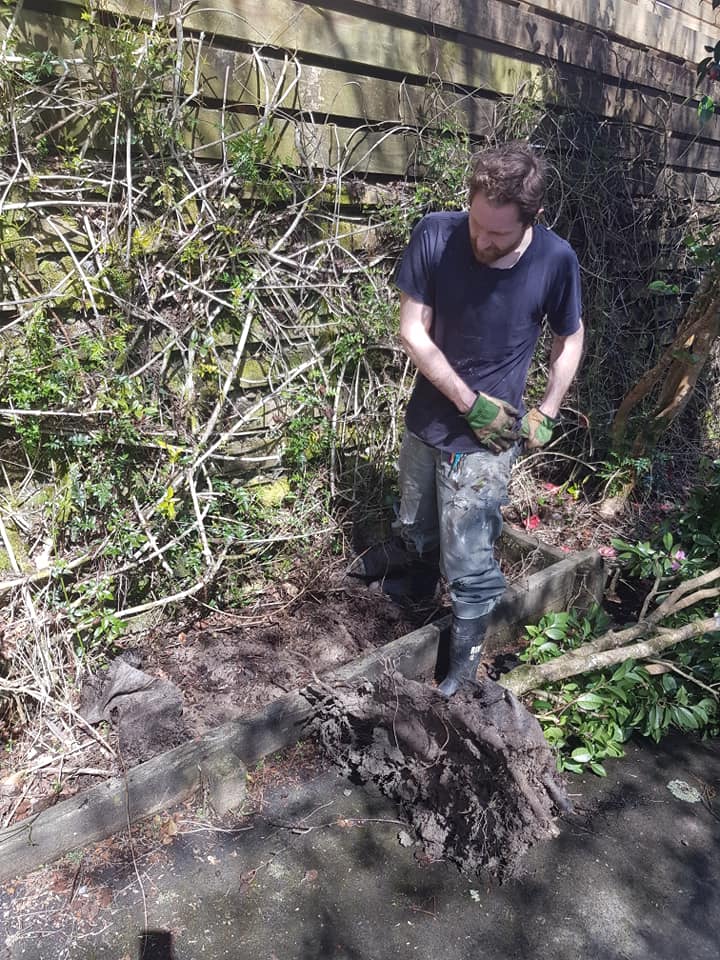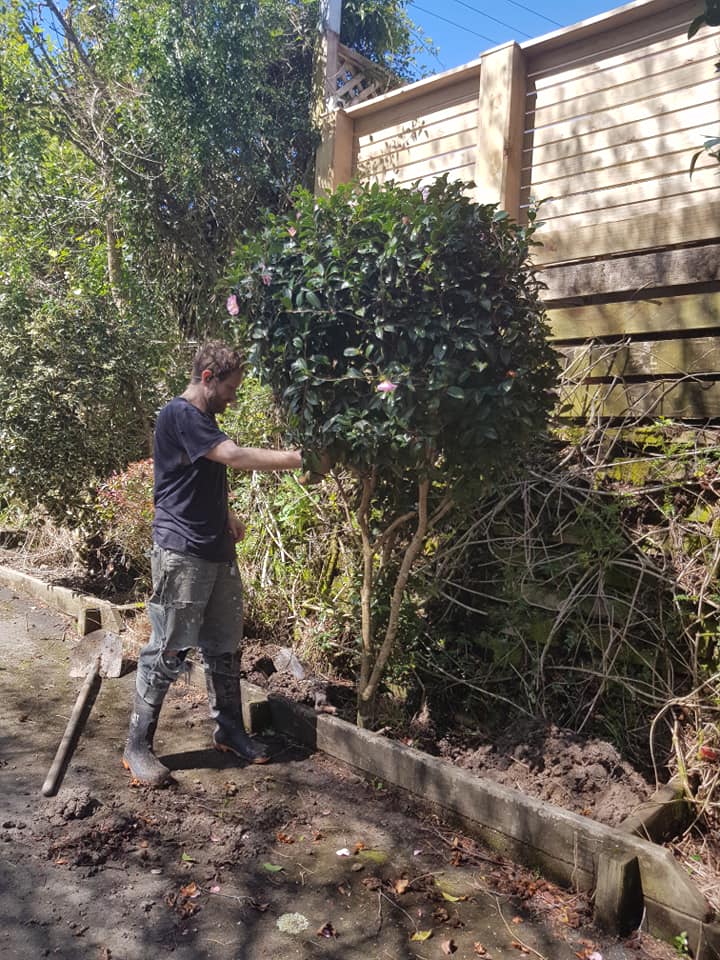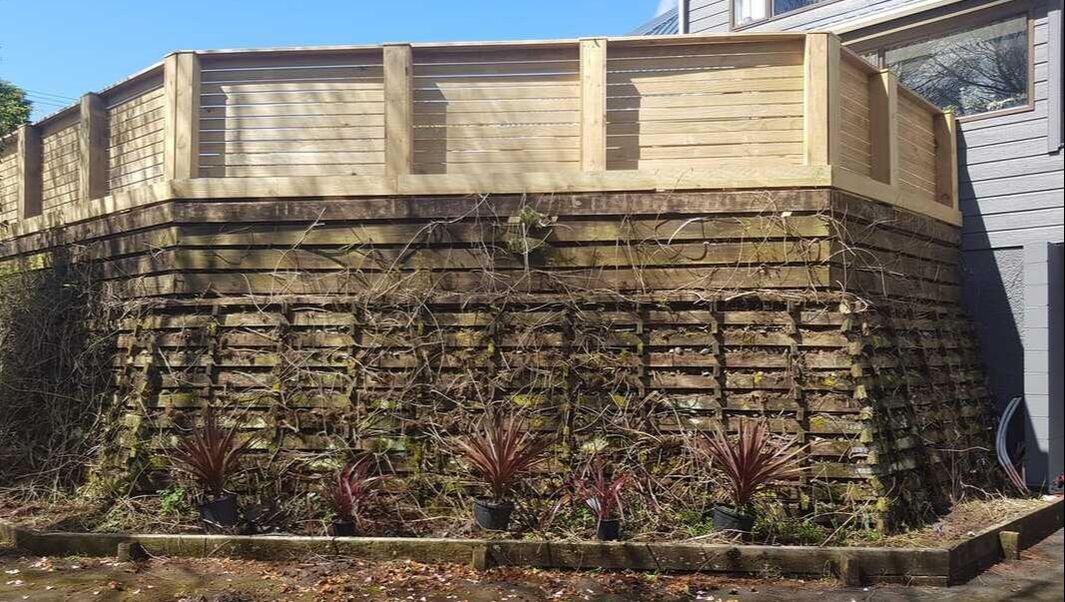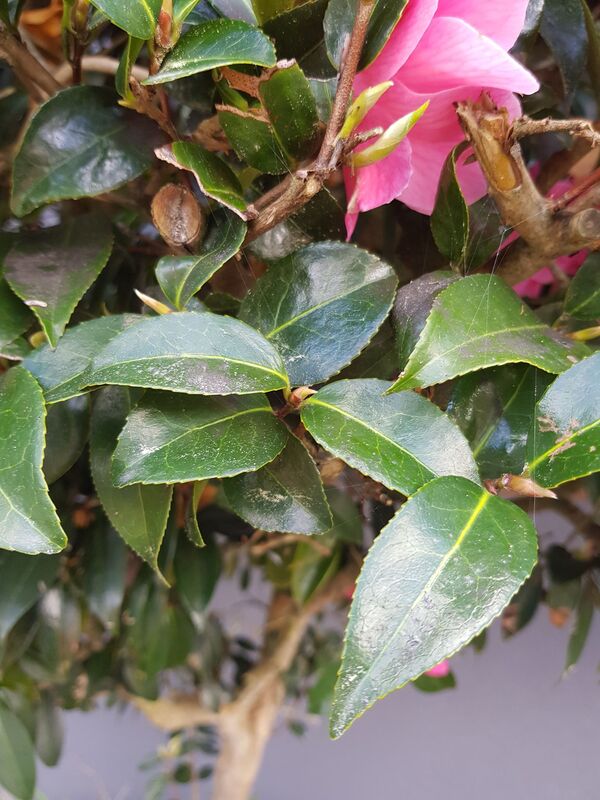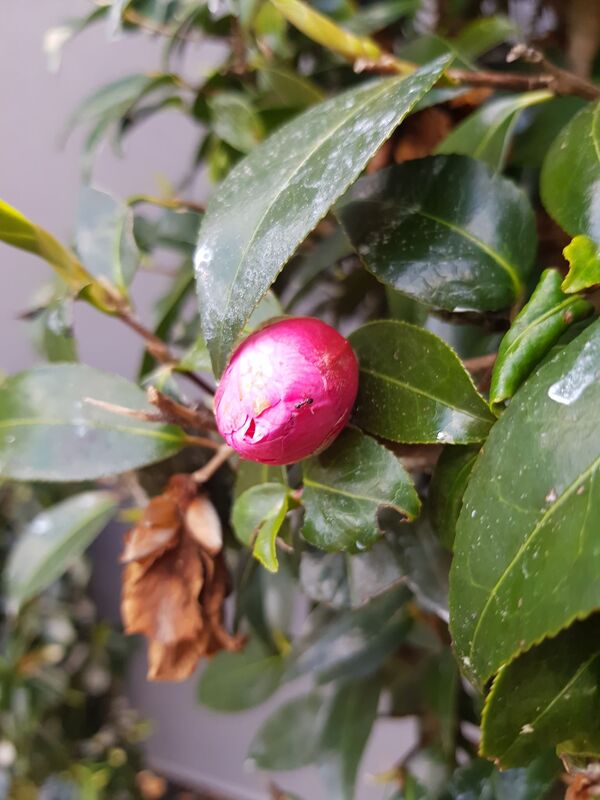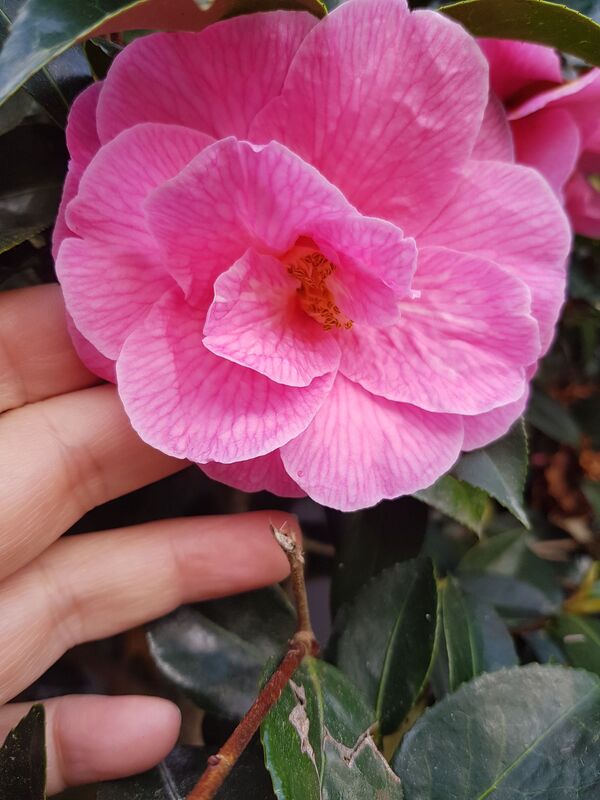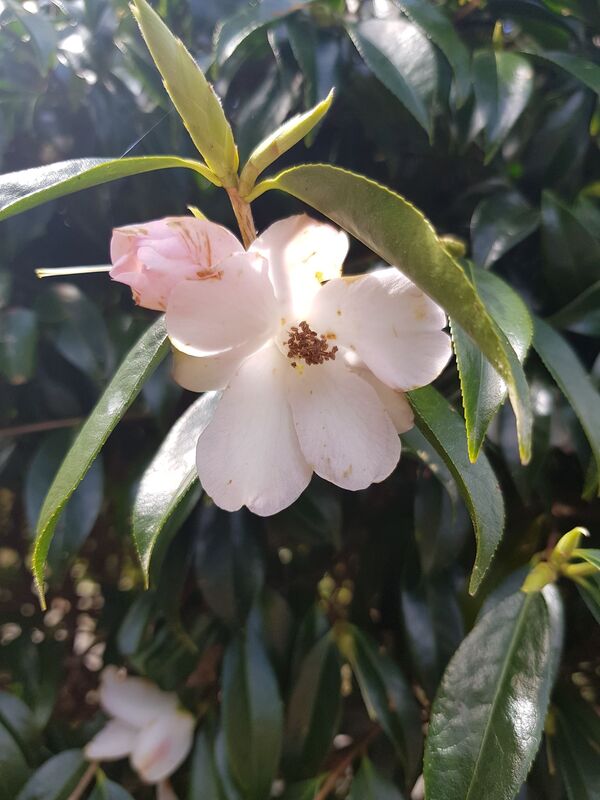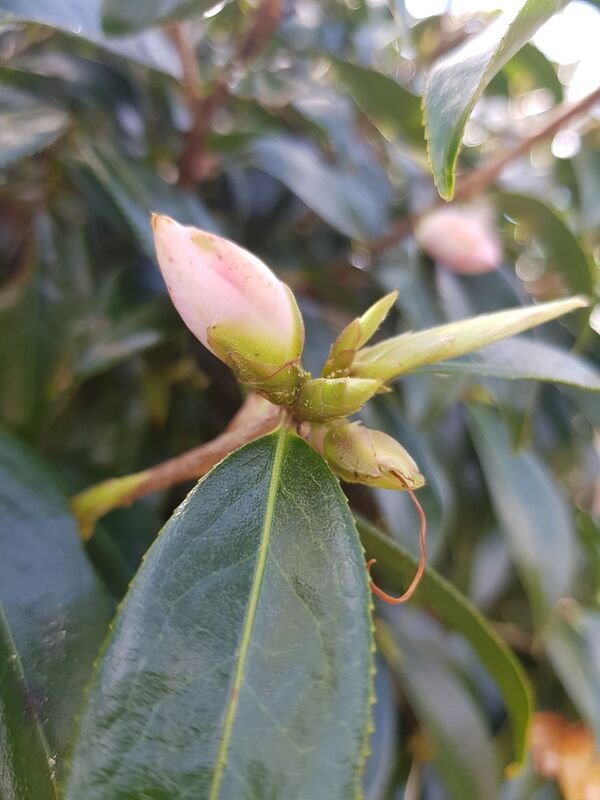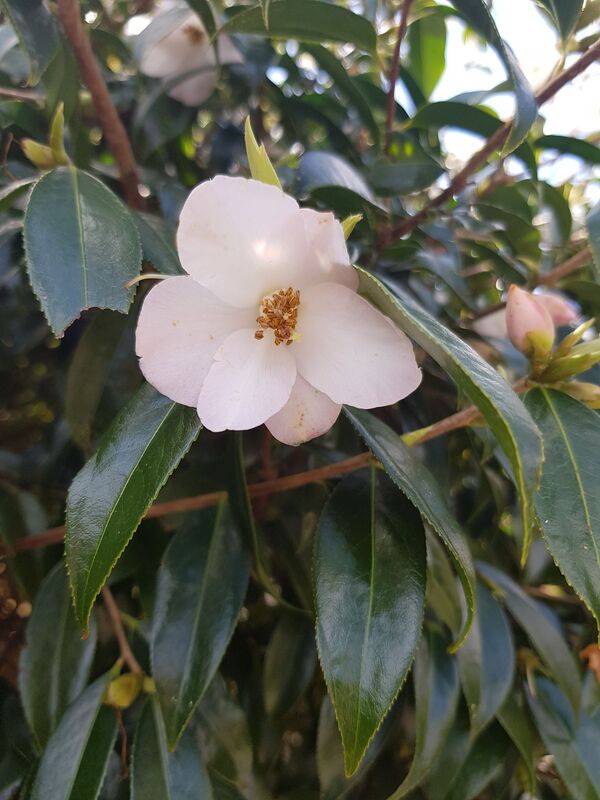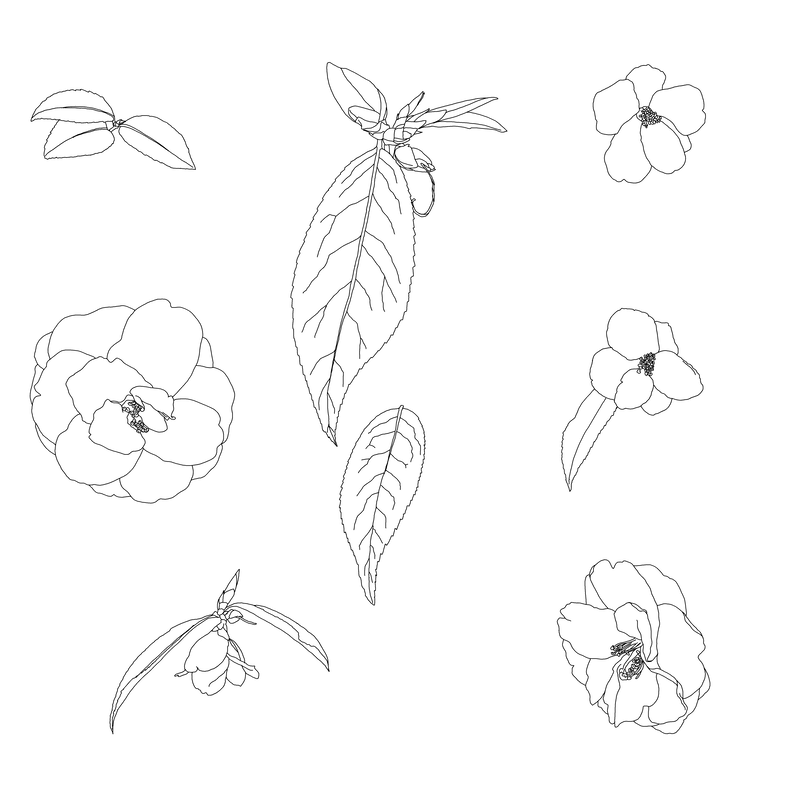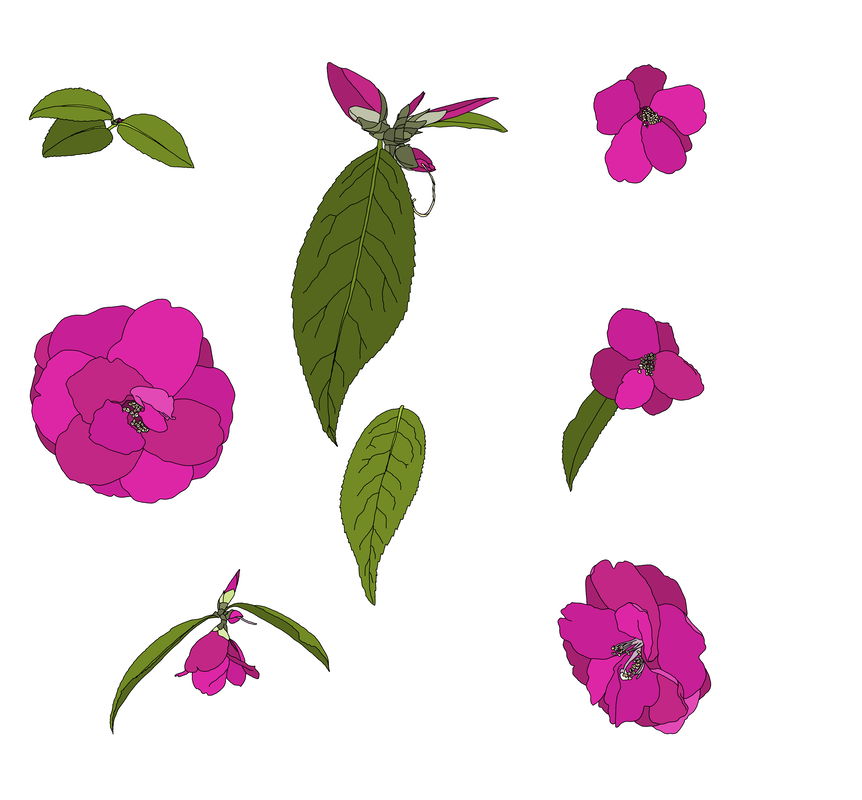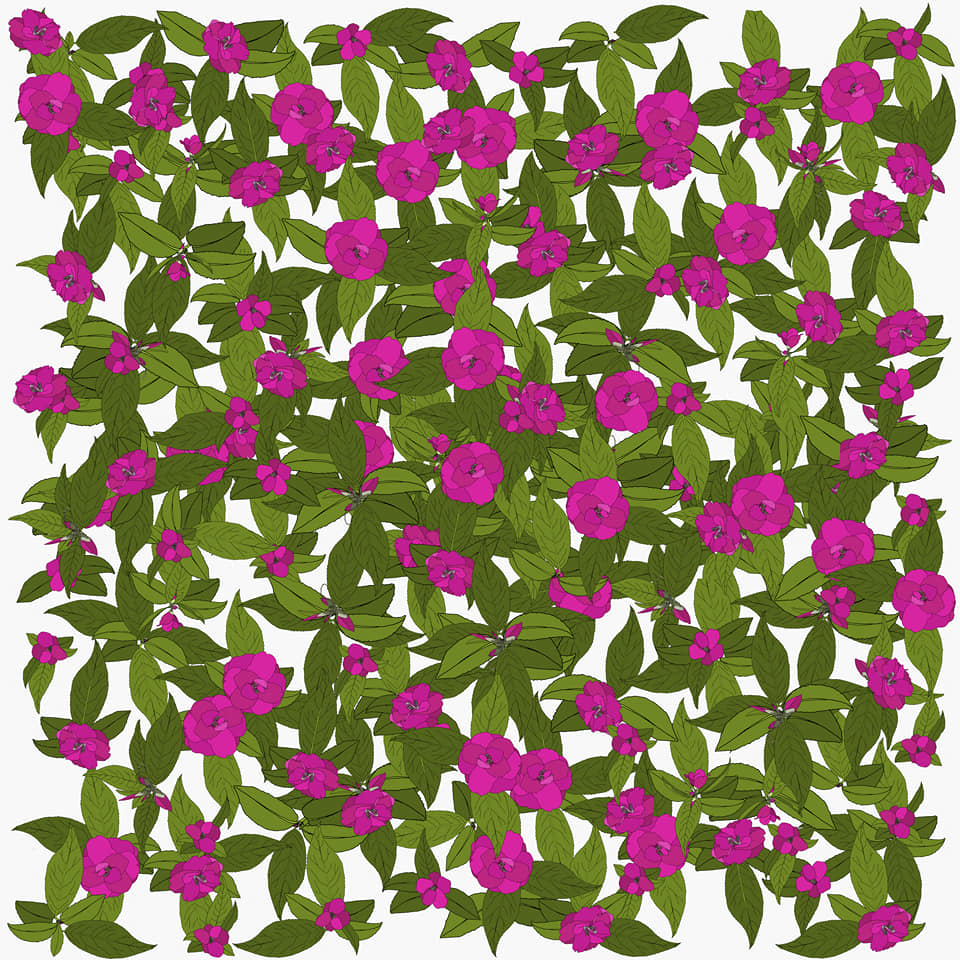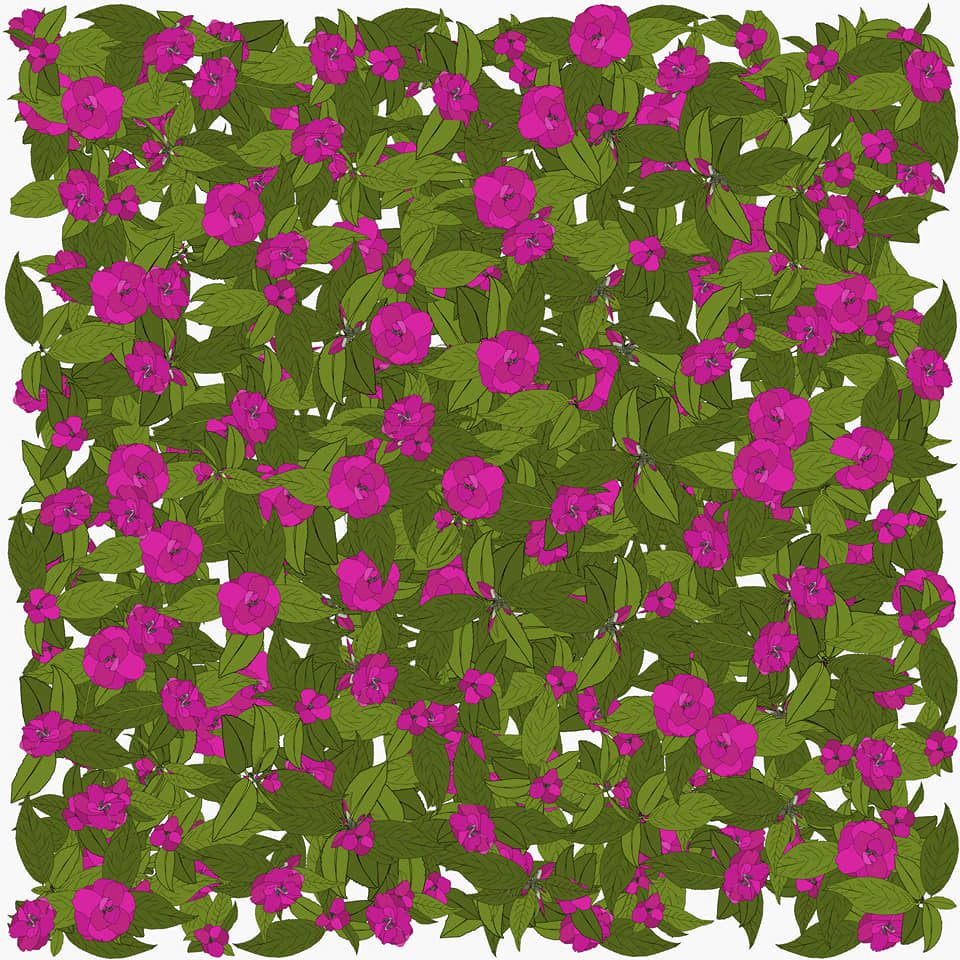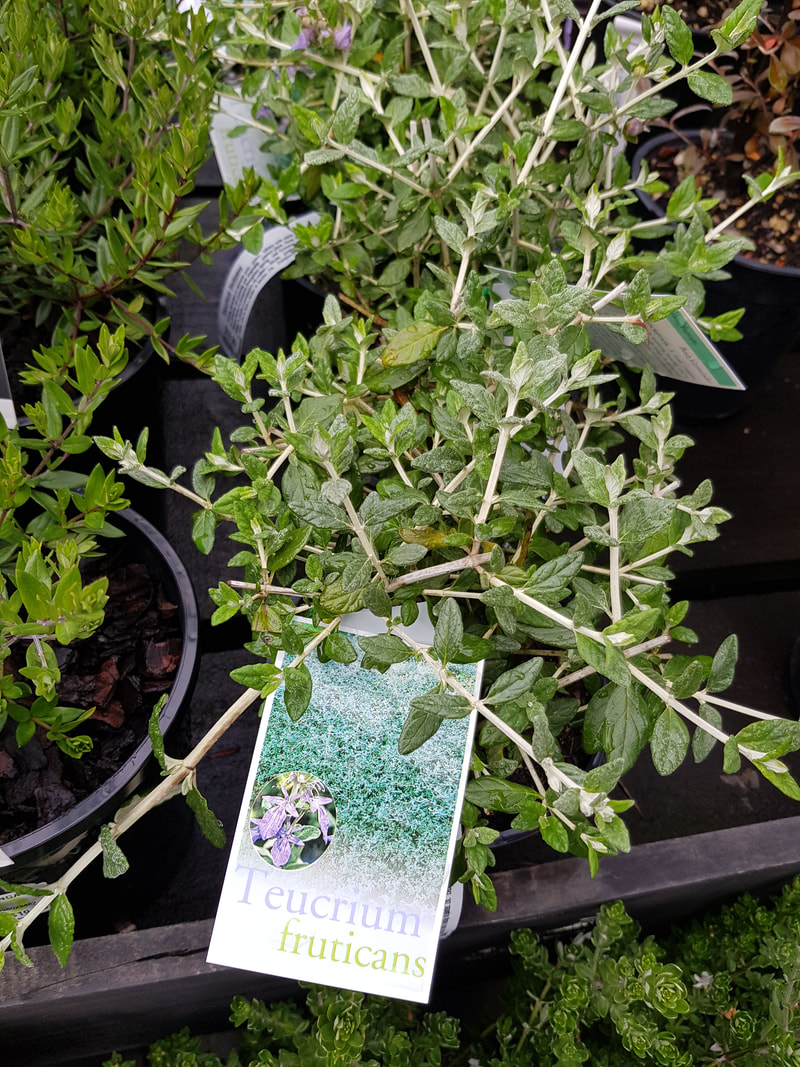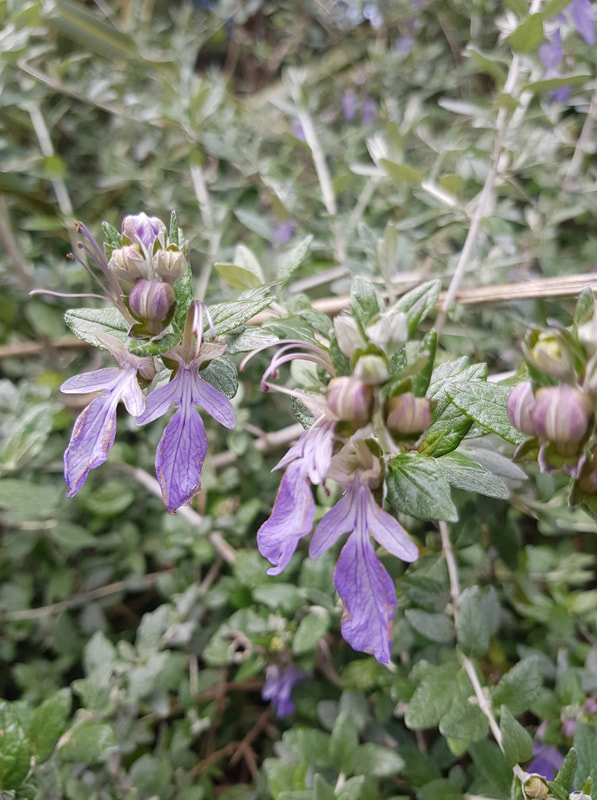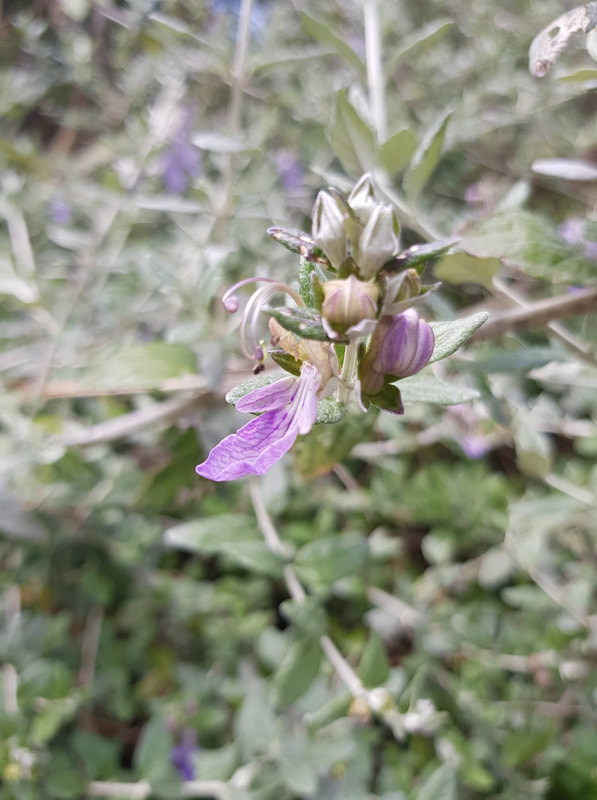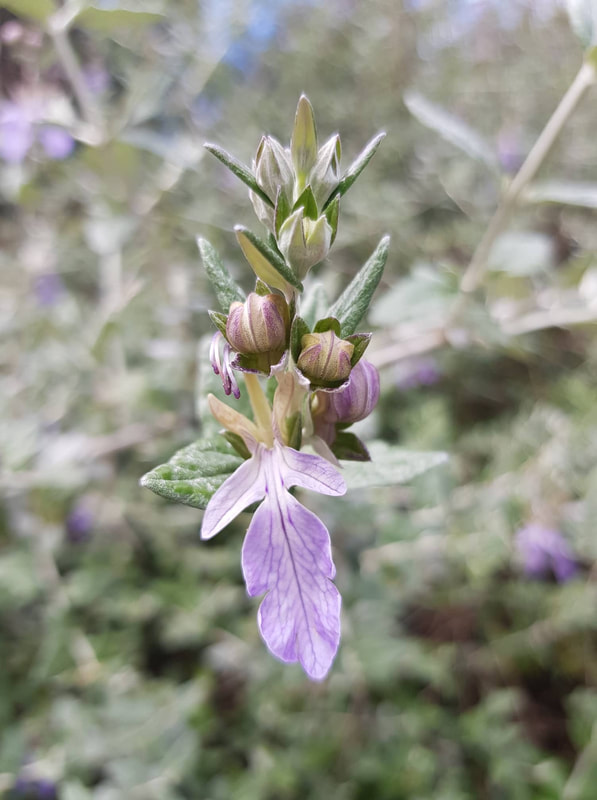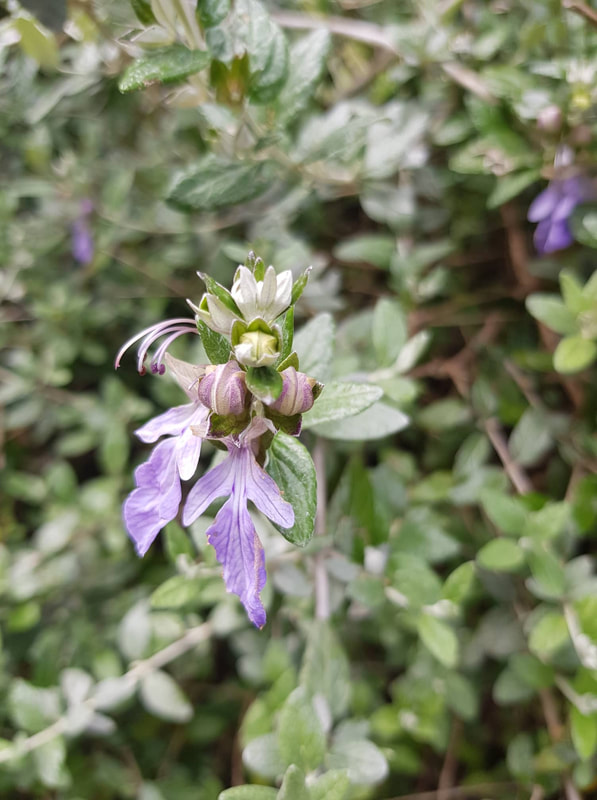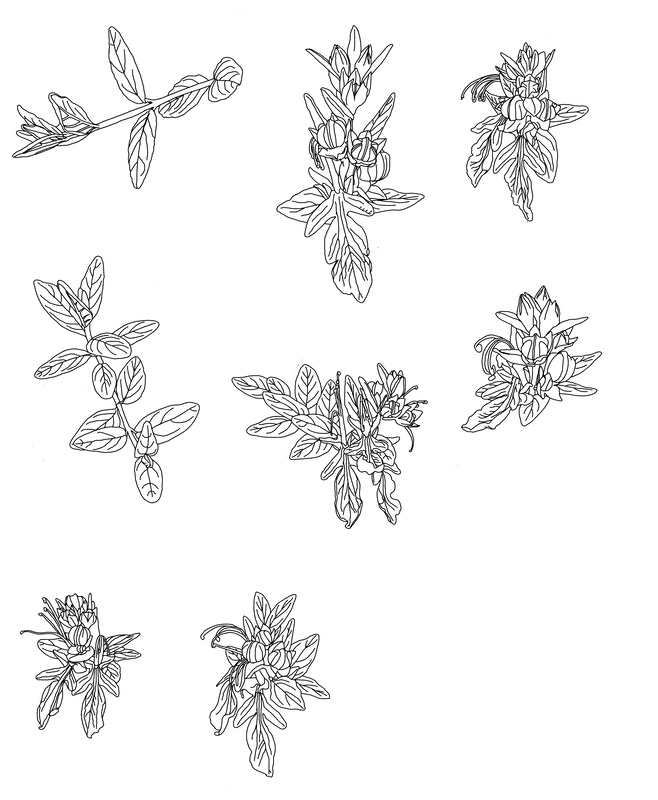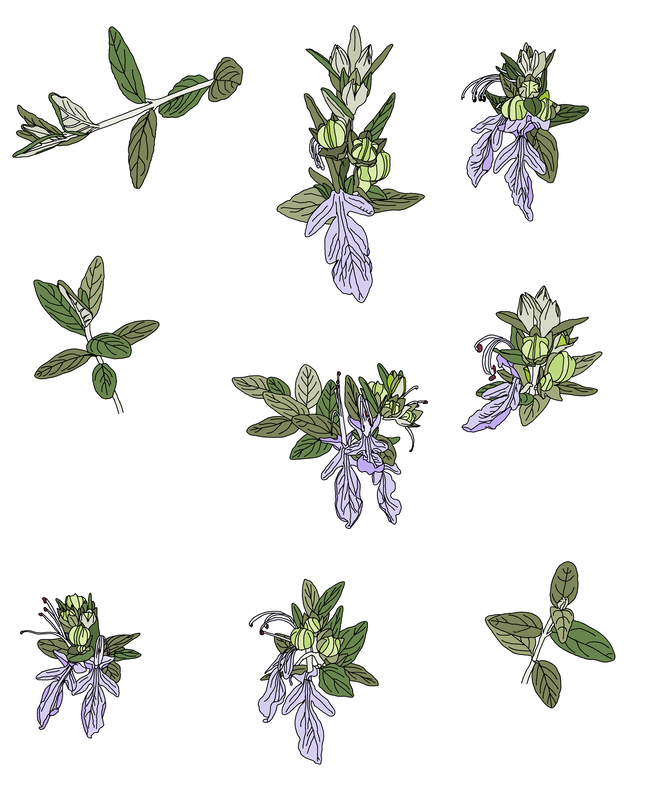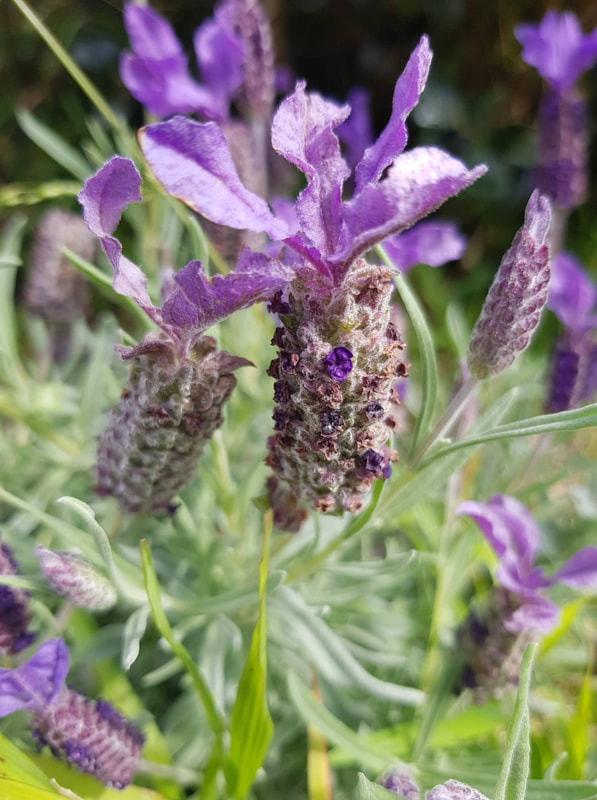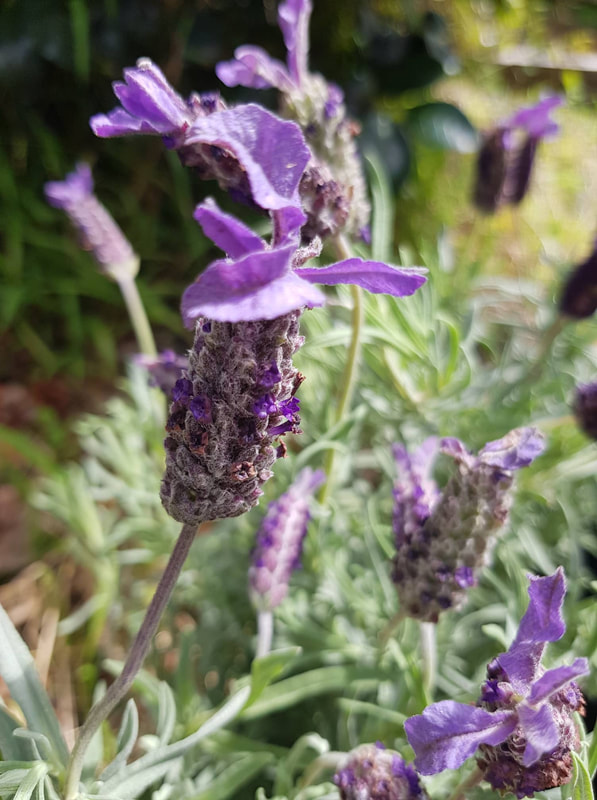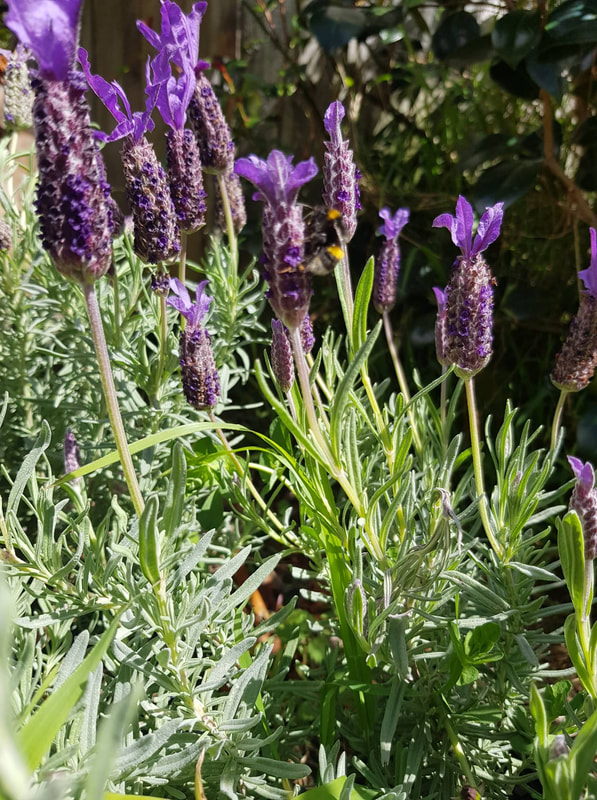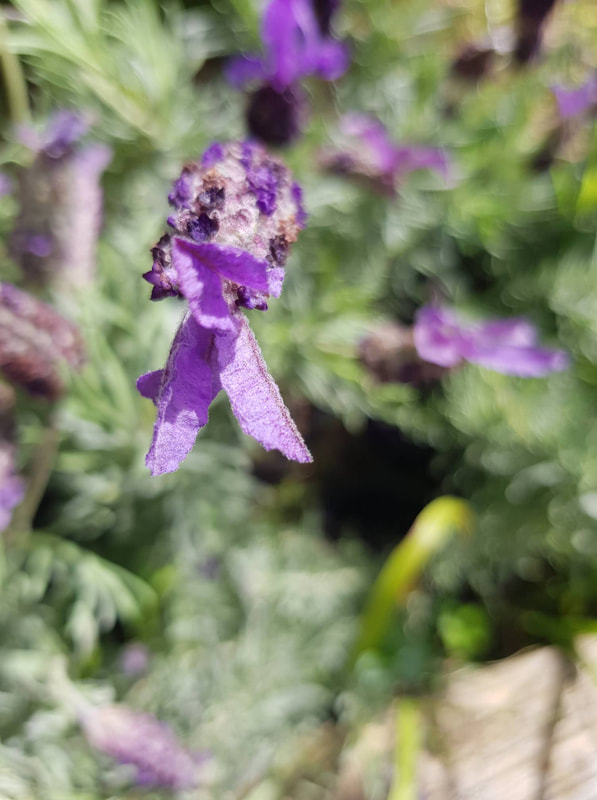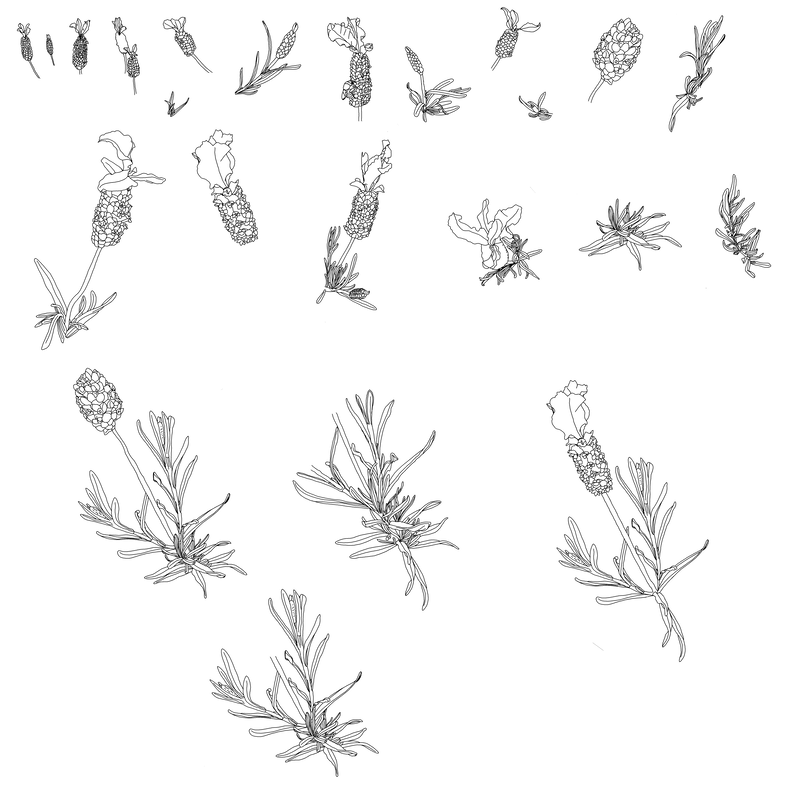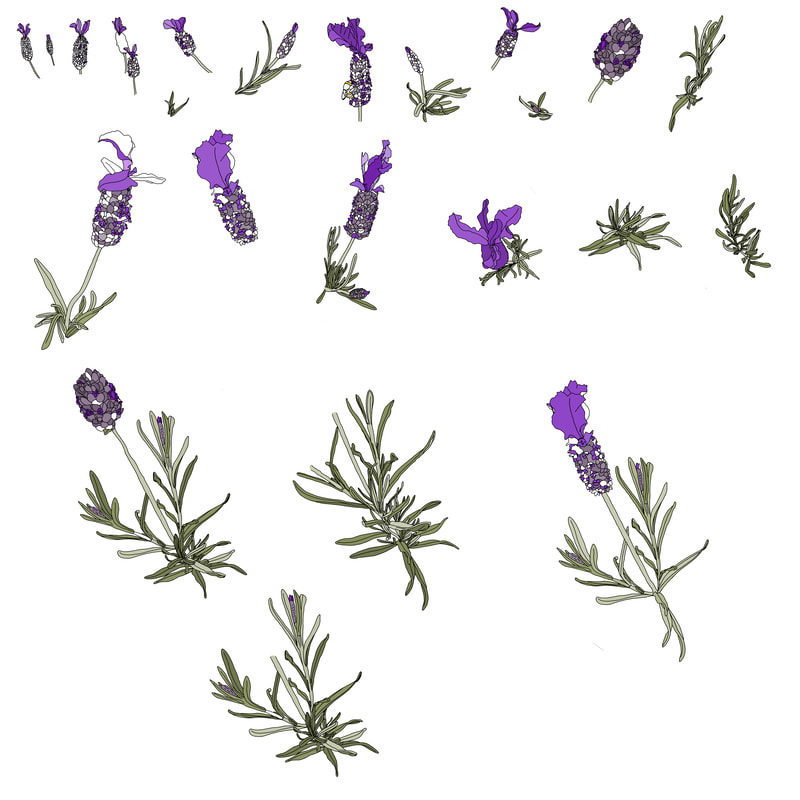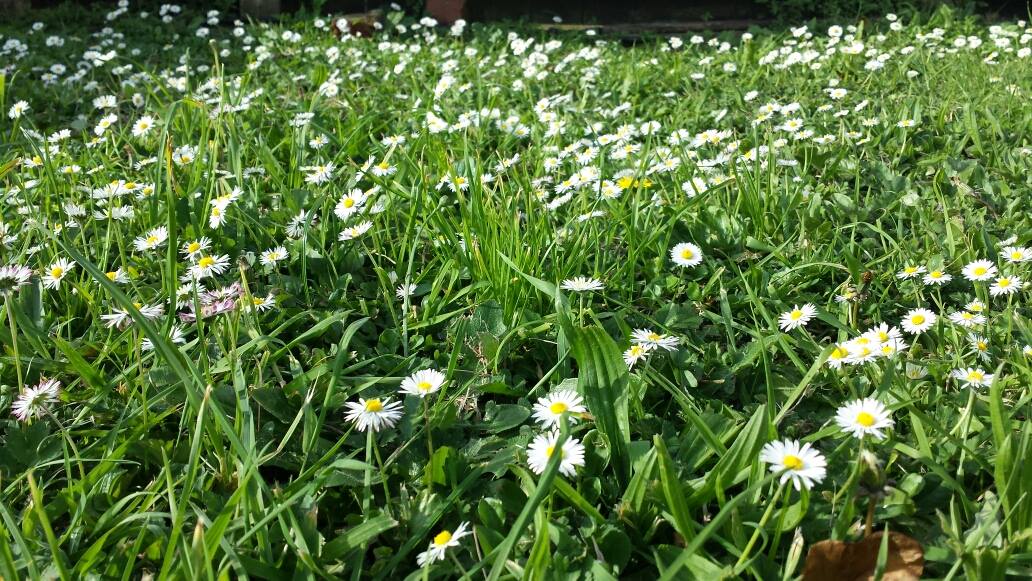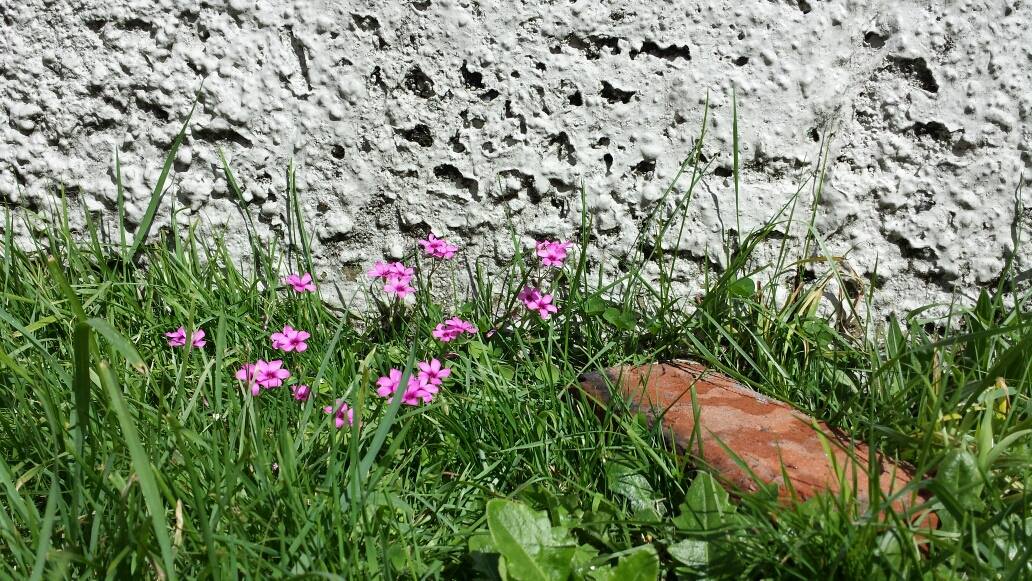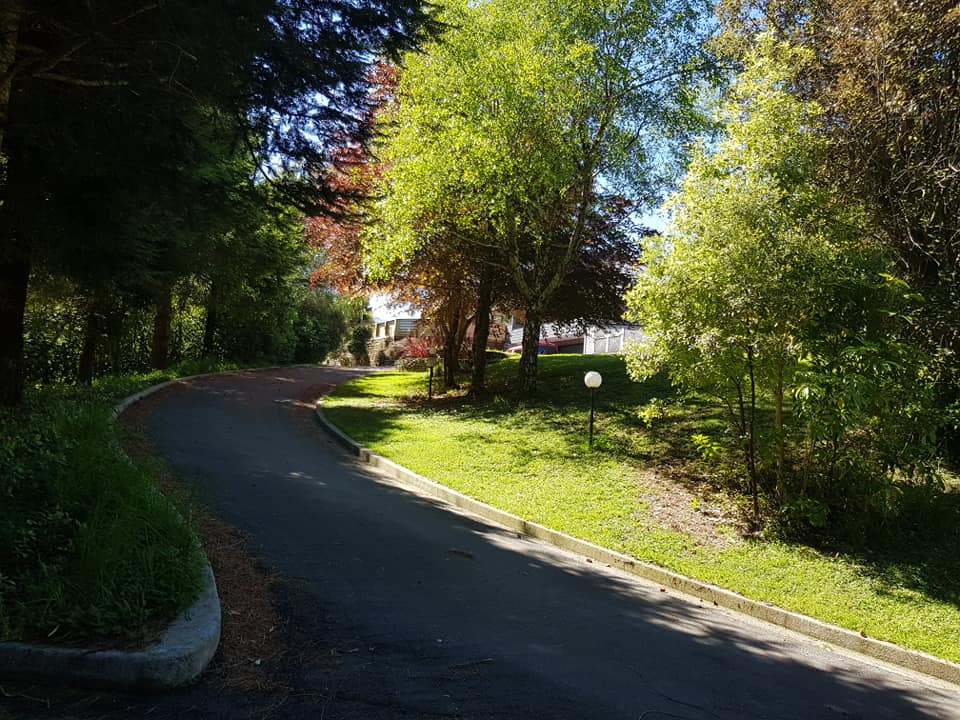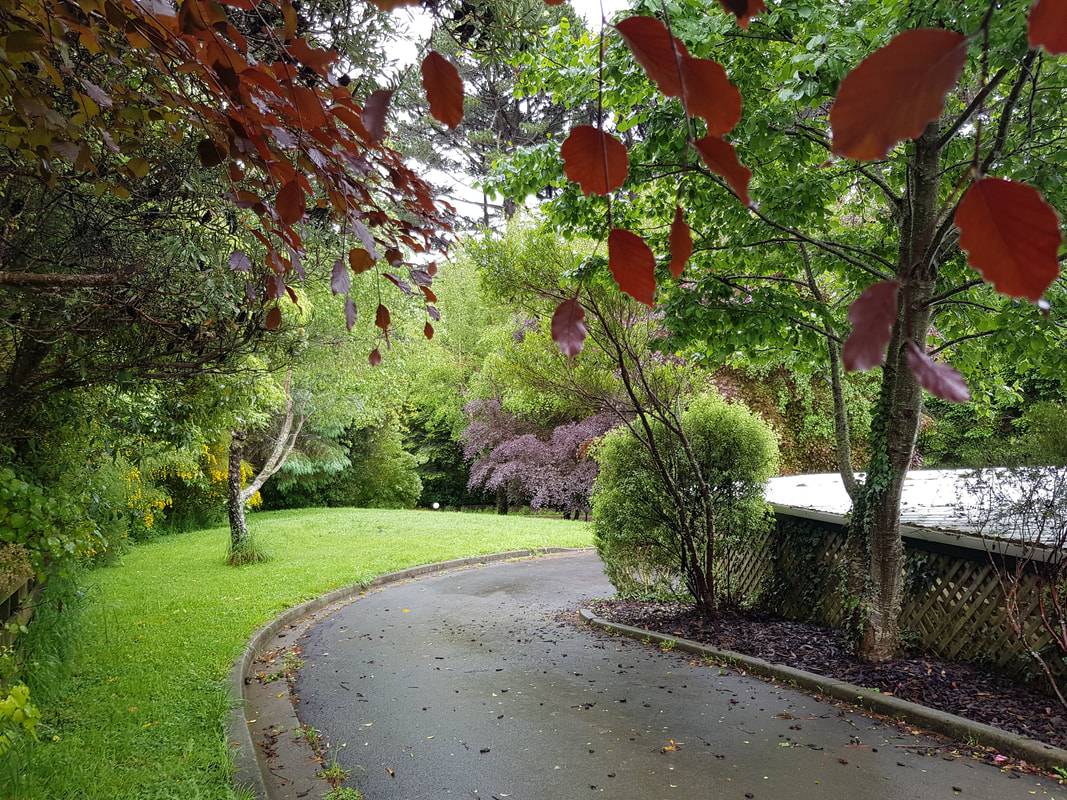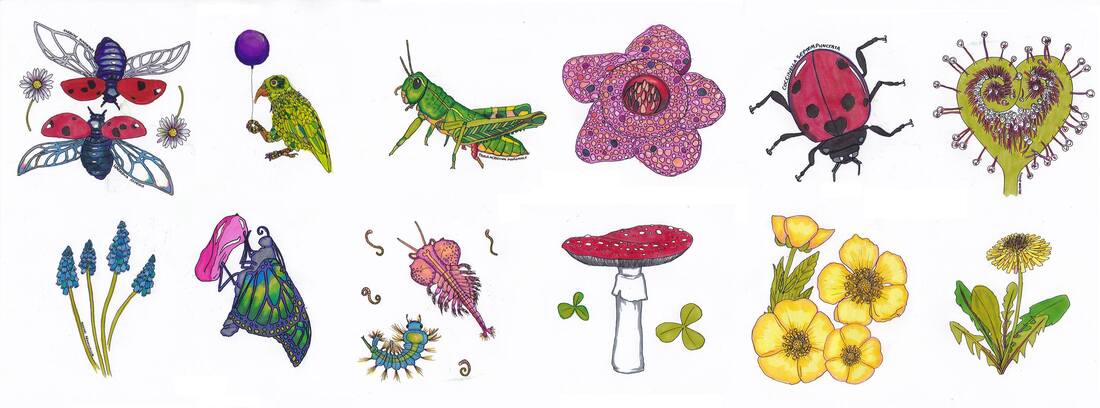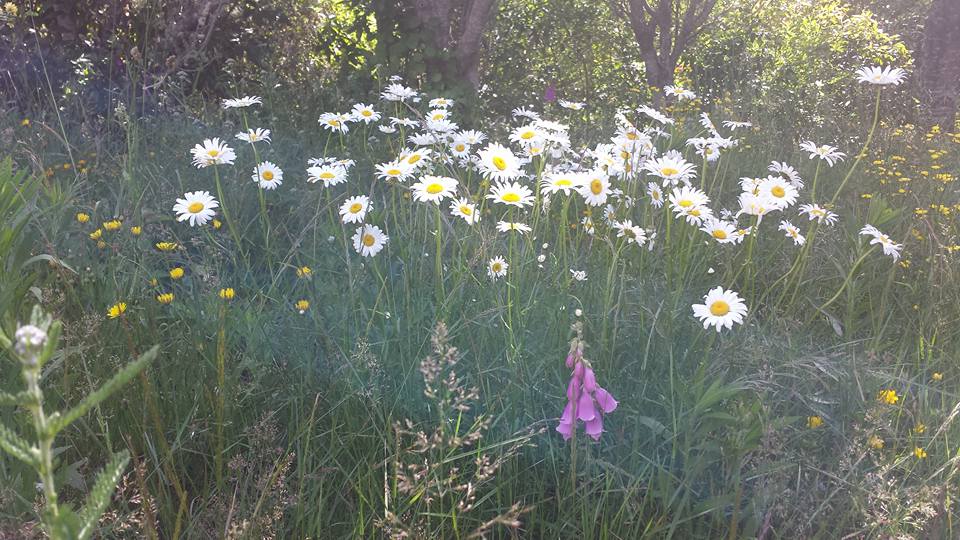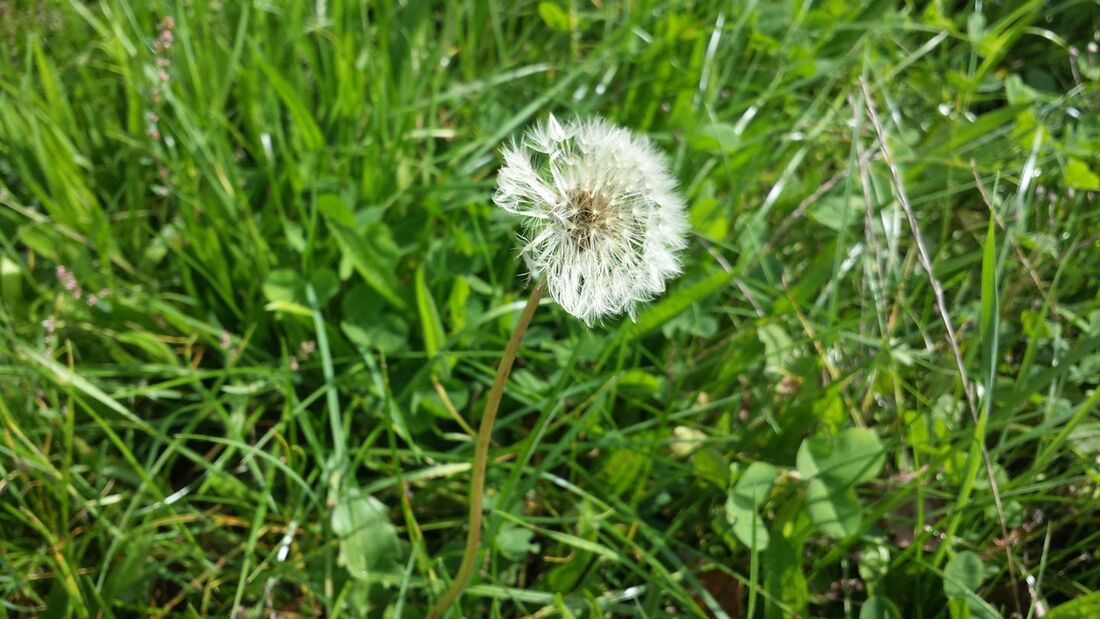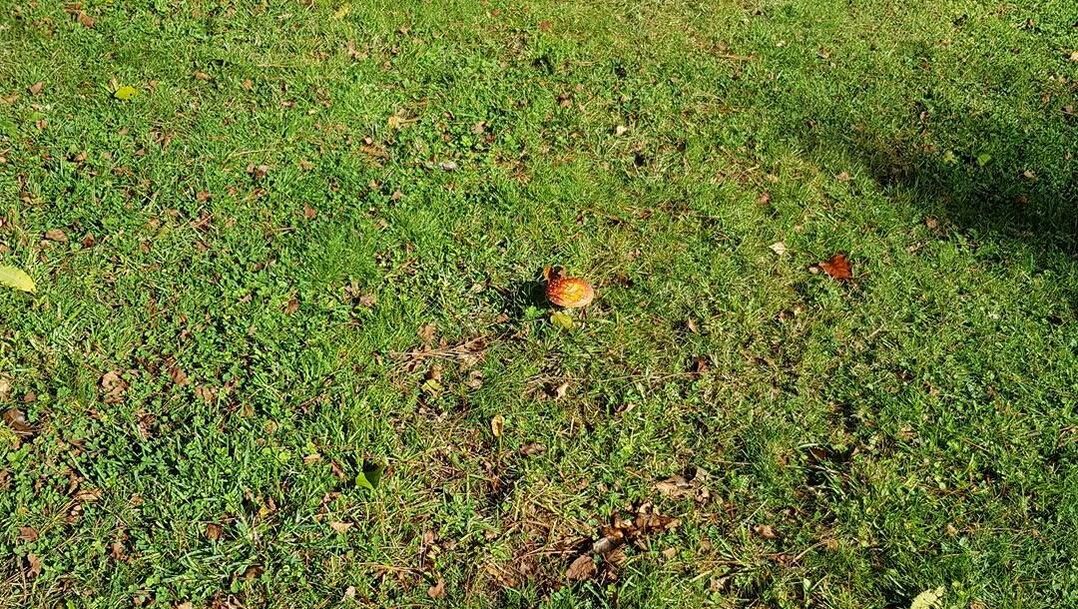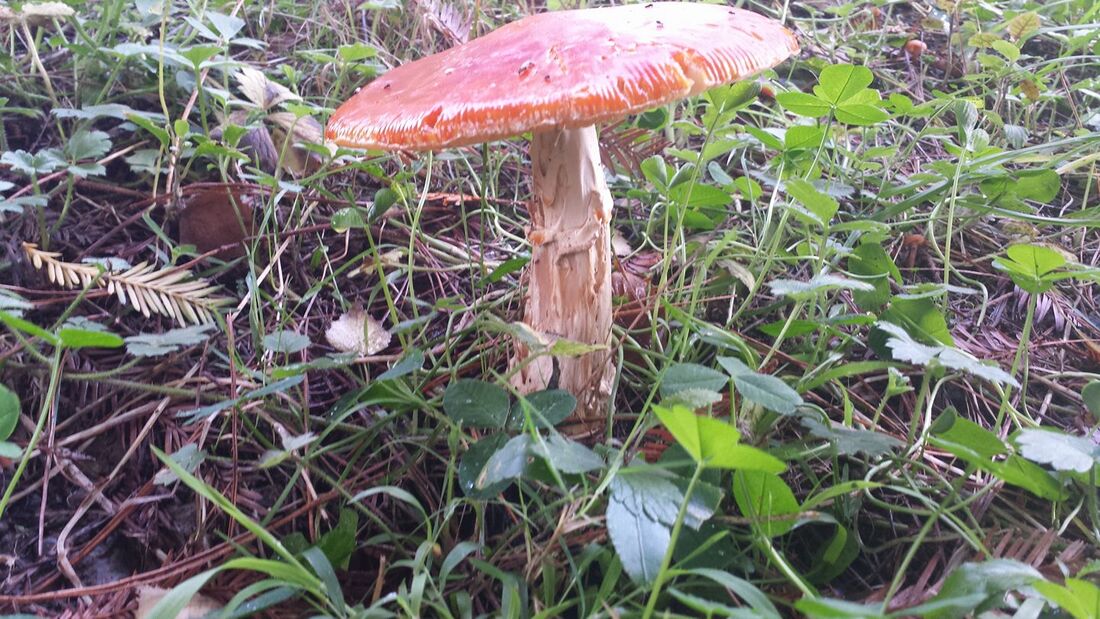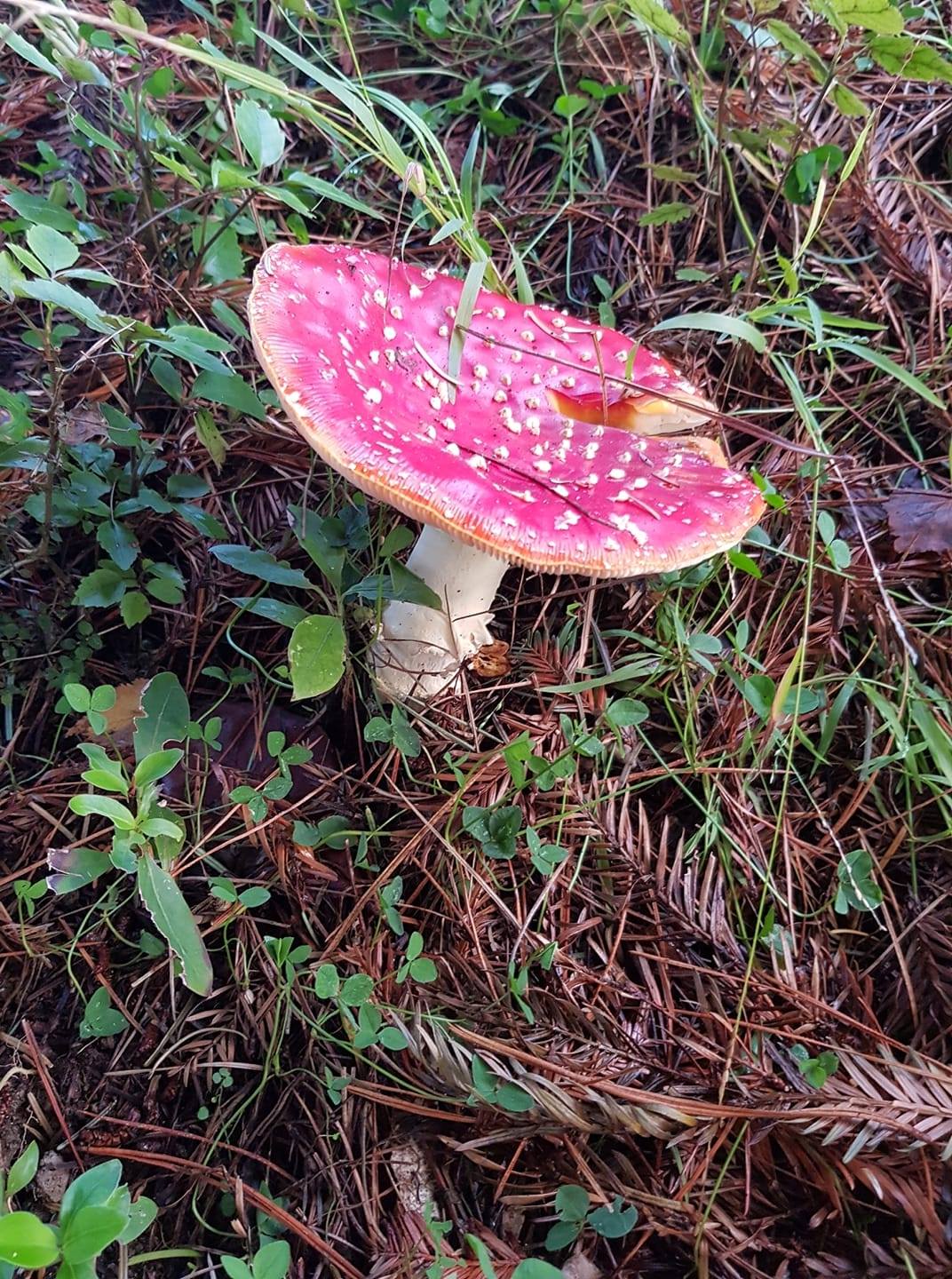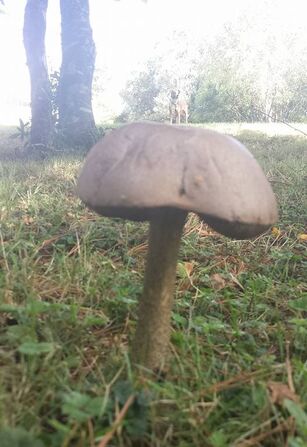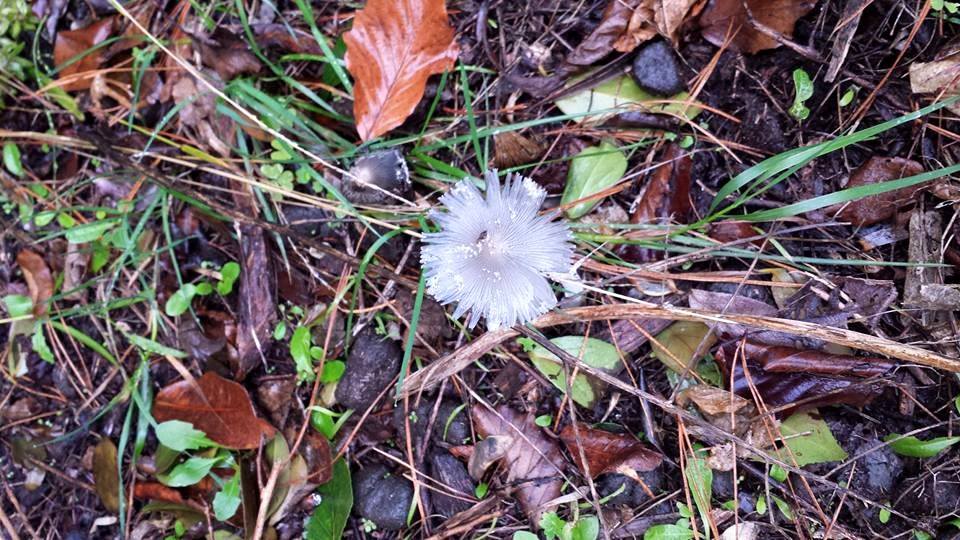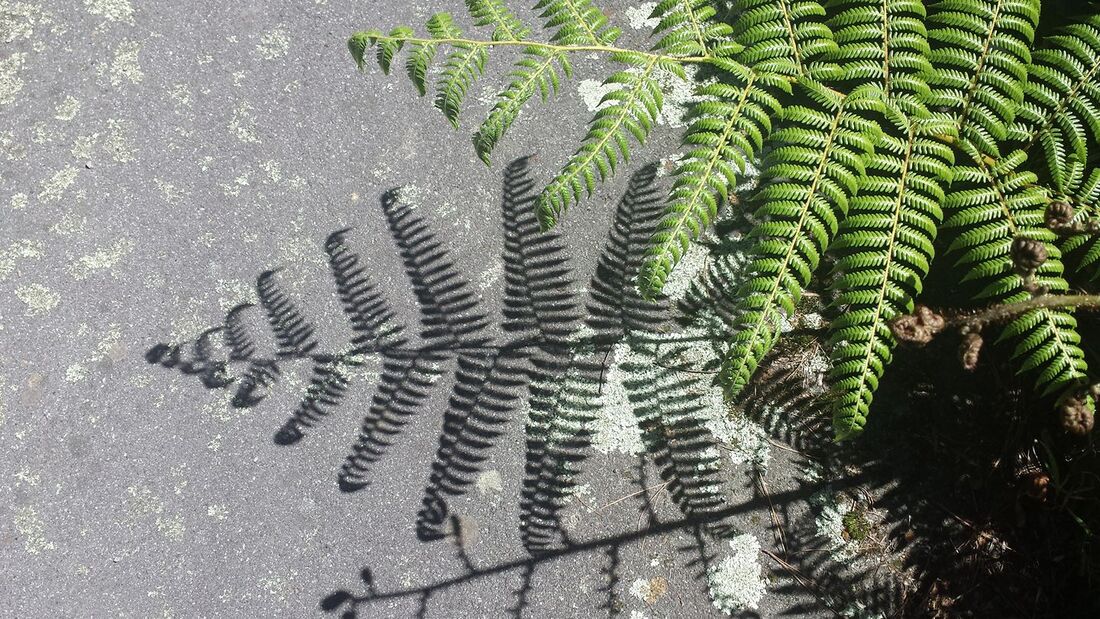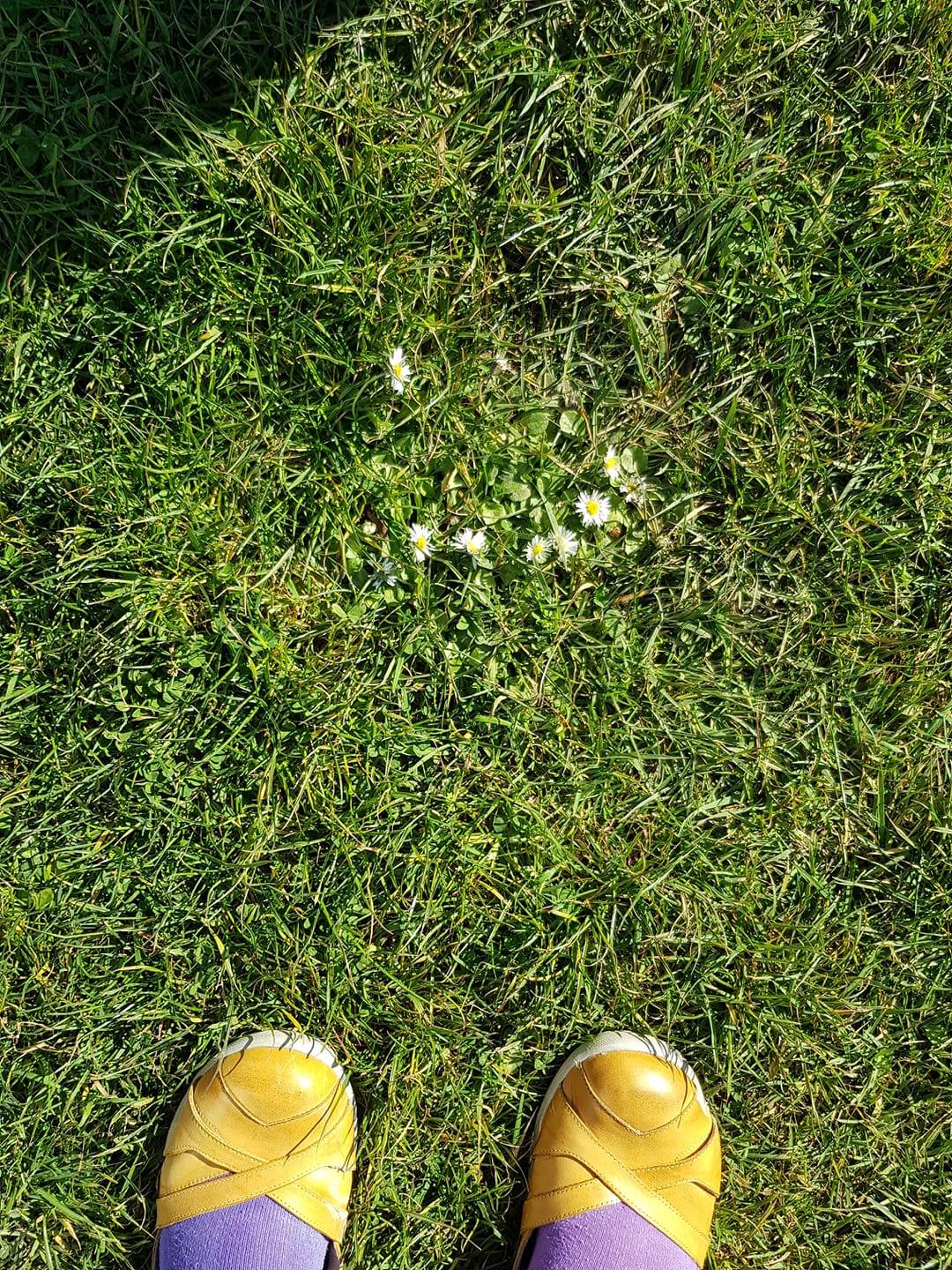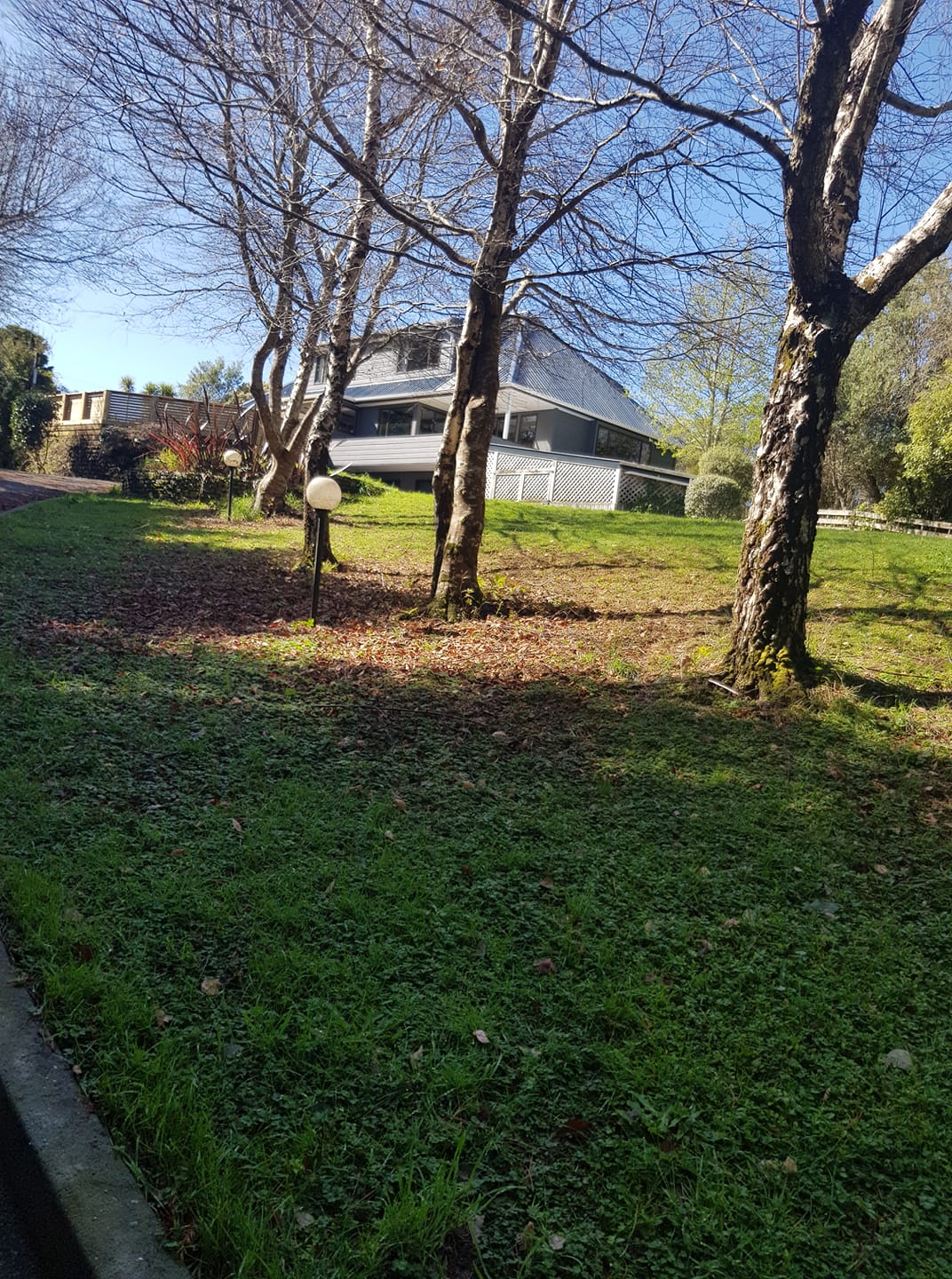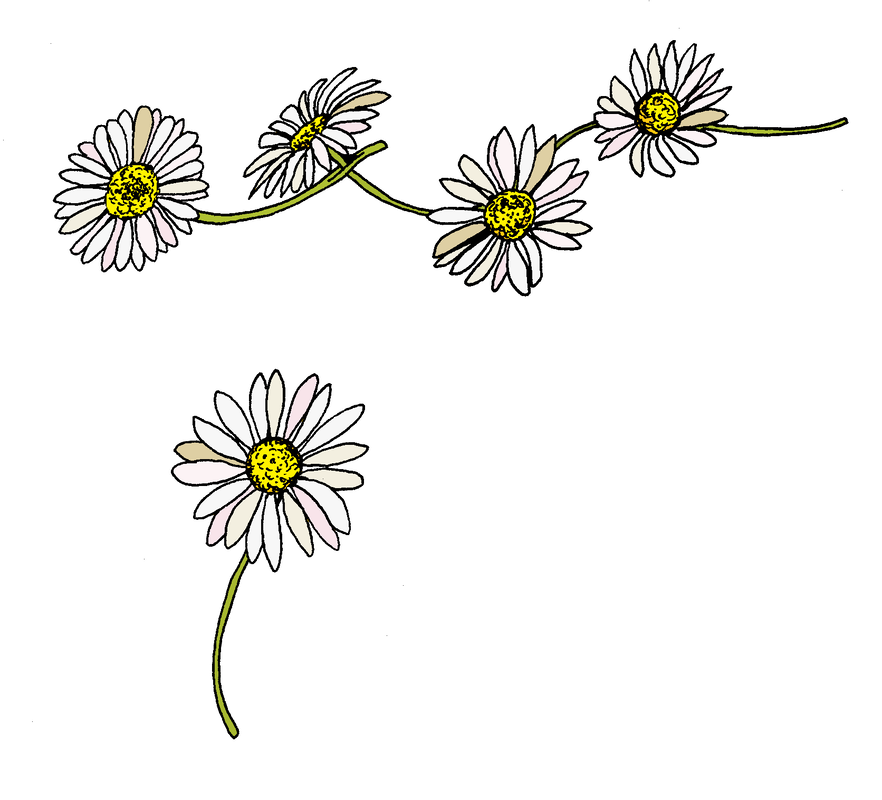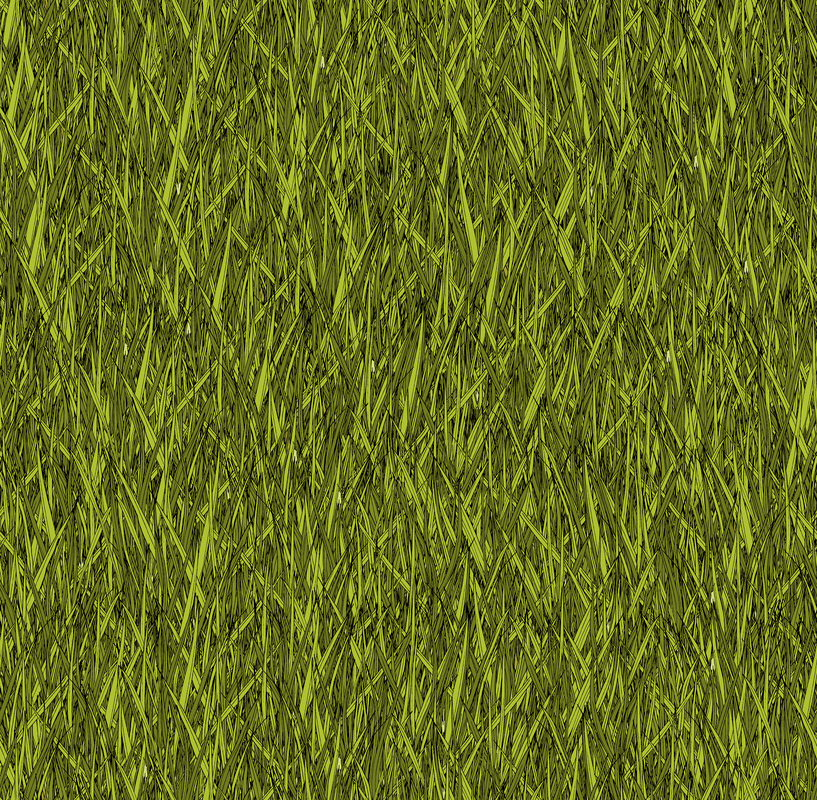A garden full of inspiration
As you may have noticed, we have a garden absolutely FULL of plants, both native and introduced.
I grew up in a very plant-focused family, and acquired a great deal of knowledge by osmosis, even thought actual gardening has never really been my scene (mainly because of allergies).
âOur visit to Portland a year ago, and my increasing interest in reducing my impact on the planet by living more sustainably, really re-fired my interest in growing my own food.
I started by drawing a lot of our thriving herb garden here:
Can’t get enough of that planty stuff
Given that we are basically up to our necks in springtime gardening, it was impossible not to also feel a non-allergic itch to draw all the things – and so I did!
âIn this post, I will take you through some of the big changes we have been making to our garden, and how that inspired me to draw.
Wisteria
Our wisteria for me symbolises our wedding anniversary, so it’s a really important part of our garden to me.
We were originally going to have our wedding at our place, and we watched and watched the wisteria, because we wanted to have our wedding photos under the arch with the flowers all in bloom.
We eventually chose a different venue (which fell through at the last minute, aargh!), because access to our house was too complicated, but I still watch the wisteria every year around our anniversary (Labour weekend) and smile.
This year, one of our big garden tasks was to remove the rotten plywood roof on the wisteria arch, to give it more light, make the whole thing look tidier, and then prune the wisteria itself, too. George suddenly decided to just get it done in the late evening, so it was a security-light-and-torch kind of a job.
Some time late, we had more time to finish the clearing of the small pieces of roof, and remove all the dead branches and debris that had built up under the arch roof.
It was a huge accomplishment for me, as my fitness is, shall we say, not great, to get into the garden and start working on projects like this one. This was the first big one that I really was able to contribute to, and it felt awesome.
Our next task was to tie up the remaining branches, so that they would grow up and around the arch, and leave the archway useable – we had been either ducking to get through it, or just walking around it.
|
|
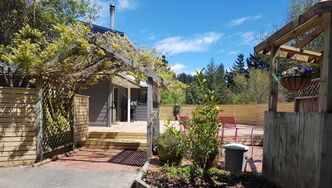
The leaves begin to come out
|
I drew this design before the buds even turned to leaves, using photos from a previous year as references.
Shop for wisteria designs online
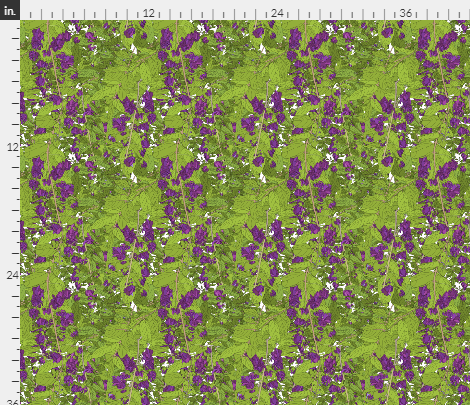
Wisteria fabric on Spoonflower
|
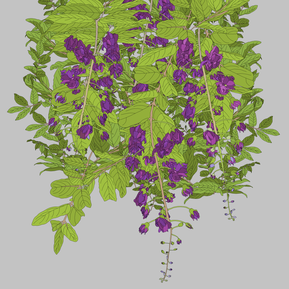
Wisteria clothing, accessories, and homewares on Redbubble
|
âCamellia
My mother really likes camellias. I don’t. So I was never terribly thrilled to find that the previous owner had planted camellias all around the house, especially as they were planted a bit close to the wall – but worst of all, haphazardly! We have decided to live with most of them, especially those around the south side of the house, as they don’t get enough sun to make too much trouble, but there was one at the front of the house that was in the worst possible place – right where I wanted to put in my modern, clean arrangement of
cordylines.
We tried to sell it, we tried to give it away – but no one wanted a mature camellia. So we had to either move it, or, horrors, cut it down. I am soft-hearted, and I don’t like to kill anything unless it is causing harm. The camellia was just being there – in the wrong place.
âSo, we decided to move it, and if it survived, all power to it!
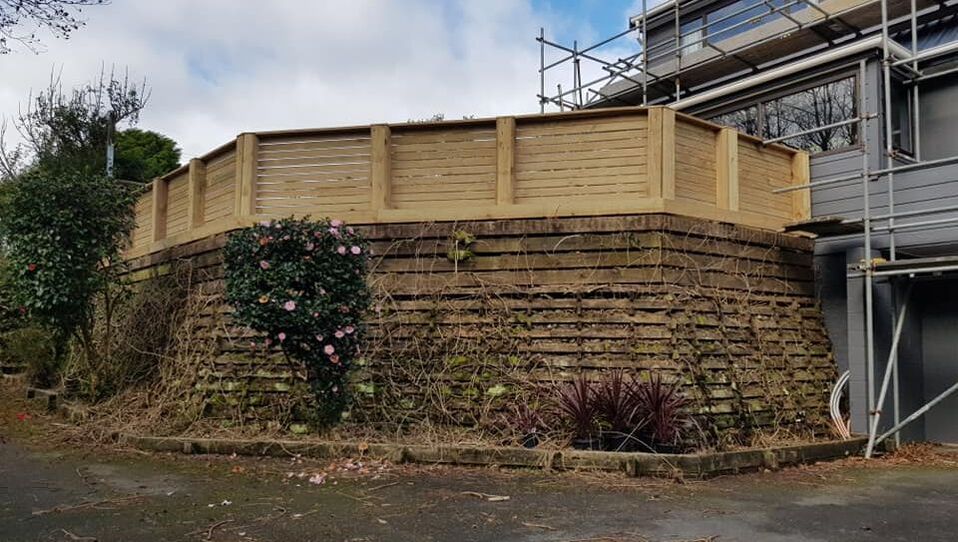
It’s not in the middle, or even in a good place to balance out another arrangement. GTG.
George said it was remarkably easy to take it out – we both expected a much bigger root ball.
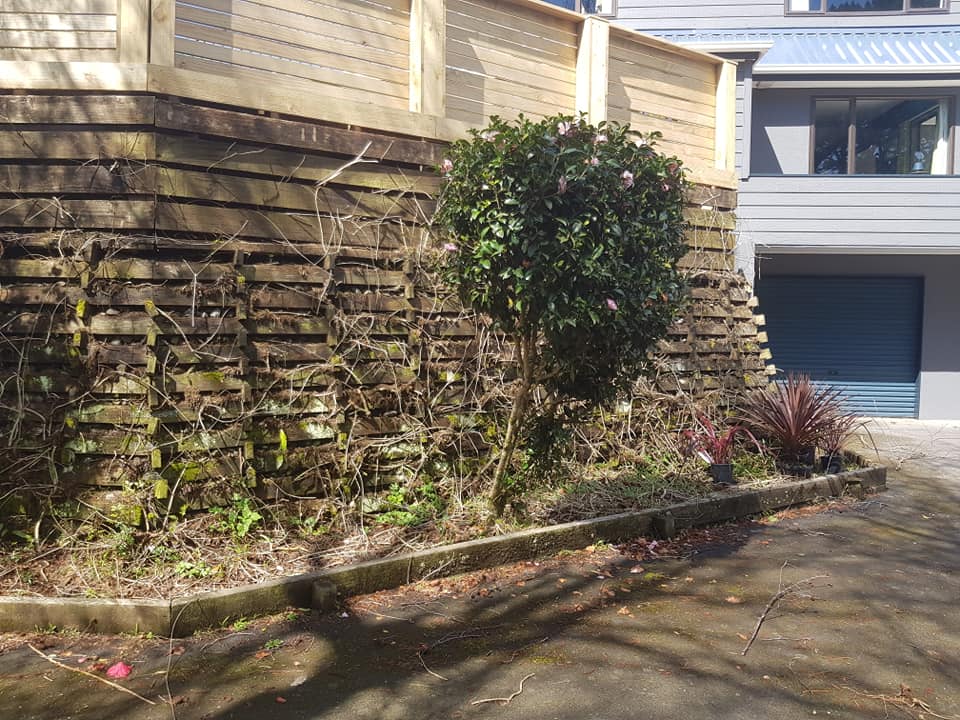
Before
|
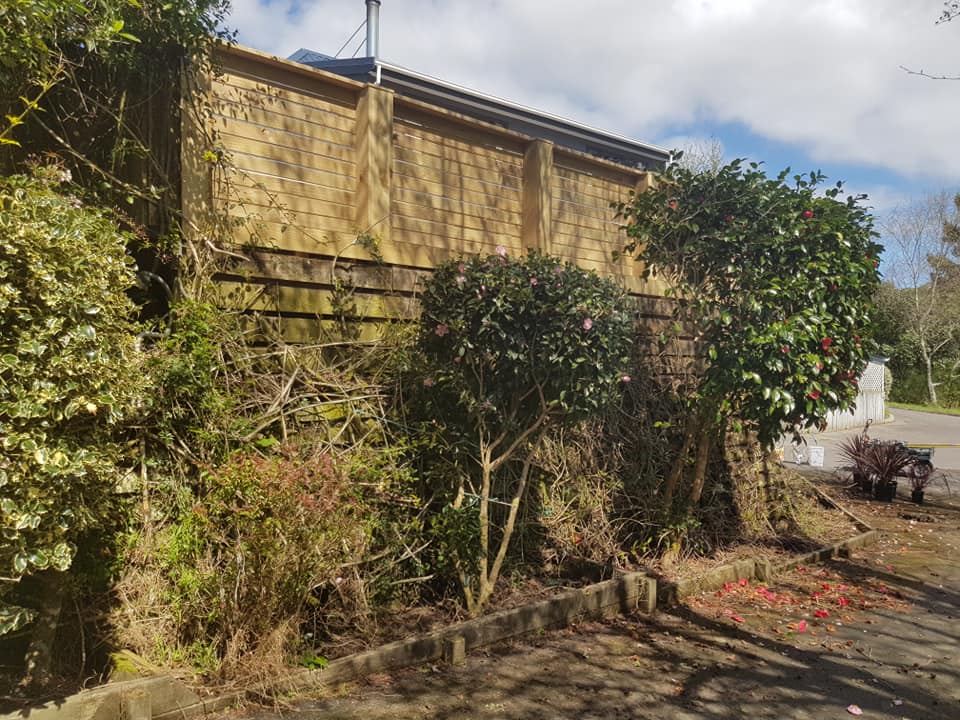
After
|
It looks much better in its new location, and makes more sense – and bonus, it meant we could have that symmetrical arrangement that we wanted on display when people first arrive!
I was so pleased with the outcome that I decided to celebrate by drawing camellias from around the property.
Camellias are a nice, straightforward structure, and the leaves as simple to draw, too, so it was a nice project.
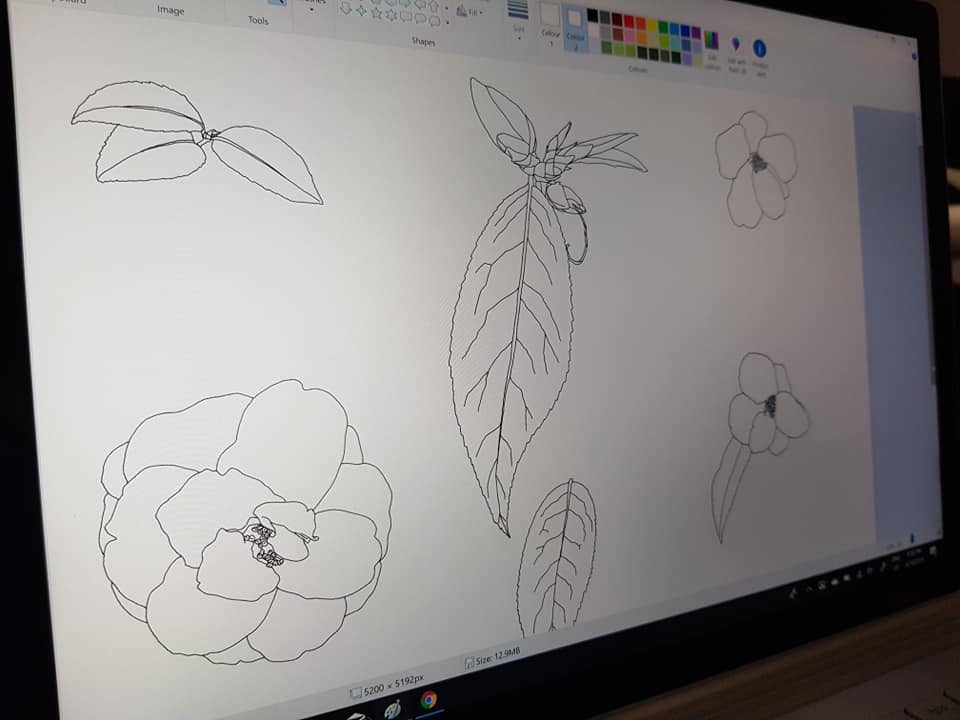
Sketches underway
|
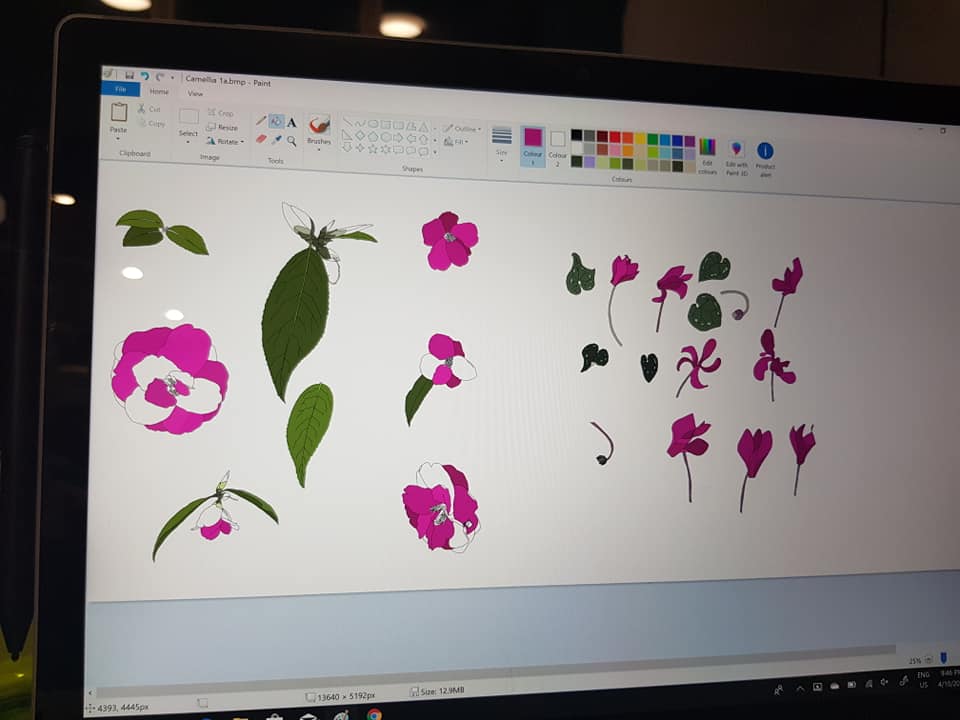
Matching colours with another design for consistency is something I do a lot
|
The hard part was getting the repeat to work – I tried several configurations.
Eventually, I re-did the whole thing, because the layout looked too mechanical. I think I’m happy now! Click on the images below to shop for camellia fabric on Spoonflower and Redbubble.
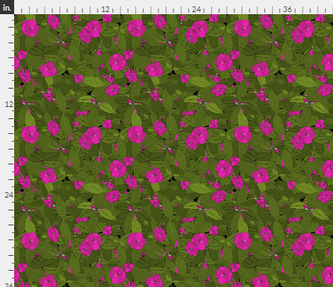
Shop on Spoonflower
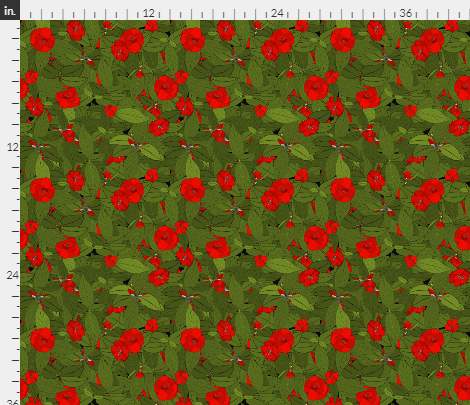
Shop on Spoonflower
|
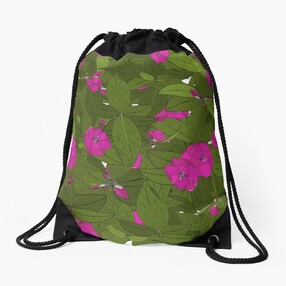
Shop on Redbubble
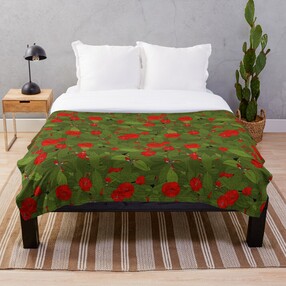
Shop on Rebubble
|
Silver Germander
We have several large, thriving silver germander bushes in our garden which add pops of colour amongst the green with their lovely purple flowers. I have been trying to focus on drawing natives, but it’s really nice to draw a bush that makes me smile, even if it’s not a native.
It was on the backburner, though, until I saw this plant at a garden centre, and was able to identify it. Once I had a name, of course, I thought – oh, why not.
So, I went out for a walk, took lots of photos, and got to work.
This was one of those spur-of-the-moment designs that just flowed straight off the pen – it was really lovely to just sit, draw, and finish. It’s not always like that, believe me.
After spending time building solid designs for all those
cooking herbs, I decided to leave this as an open “scatter” design, and also did that with the lavender.
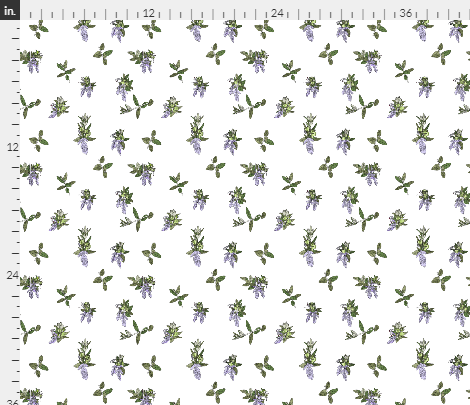
Shop for fabric on Spoonflower
|
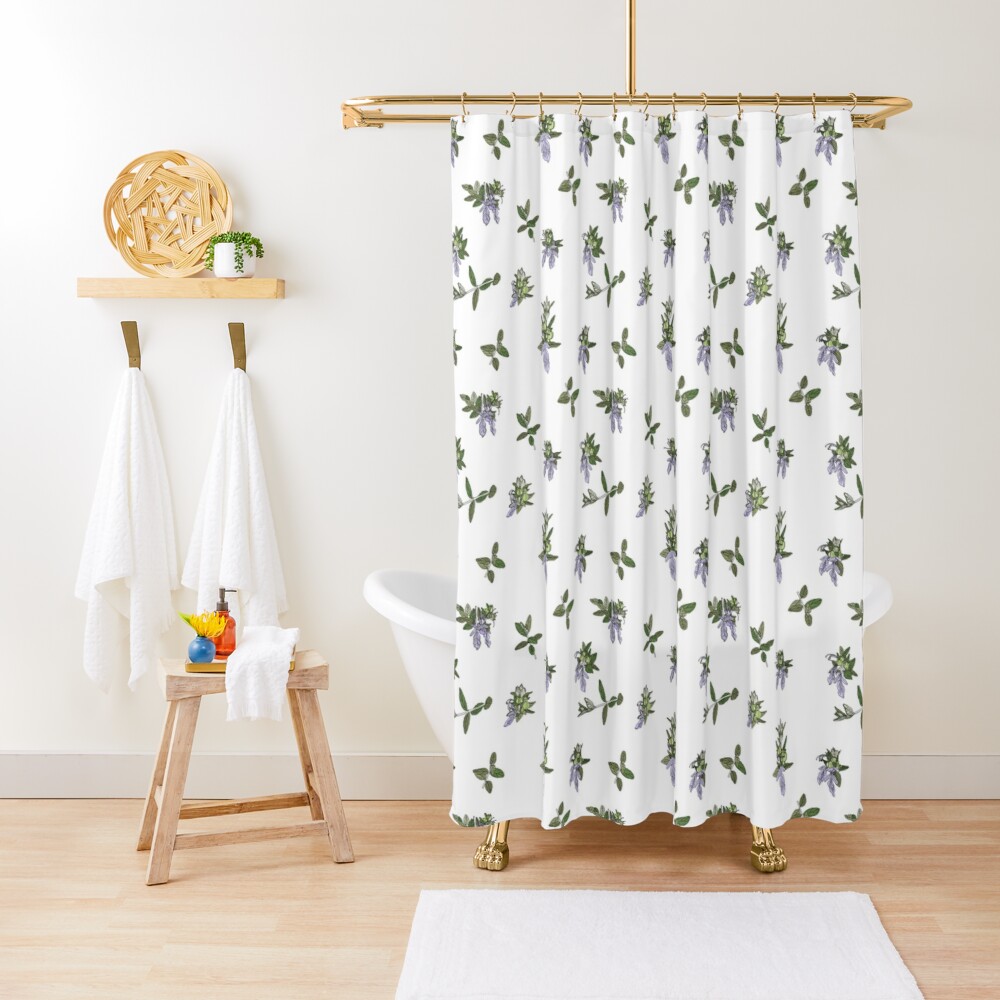
Shop on Redbubble
|
Lavender
I have been wanting to draw lavender for quite a few years – it’s just one of those plants that fits nicely with my style. So when we decided to plant some in the garden, I definitely had an ulterior motive – I would also have another subject ready to draw!
I got the lavender pots on special but then, as usual, life got in the way, so it took about a month to get the planters weeded, and get the lavender planted. That was another huge push! We moved the camellia on this same weekend, so it was a big job.
I made sure that the leaves and petals toned with the silver germander, too, although lavender is a more intense purple – so I started with those colours, but made them darker and more saturated.
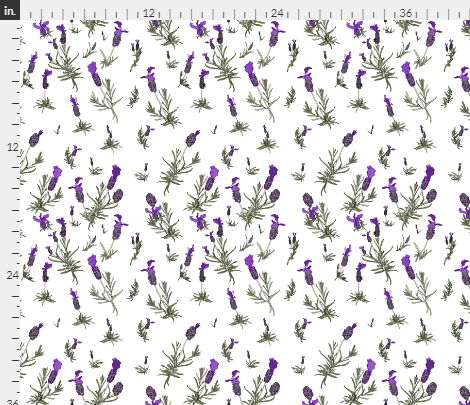
Shop on Spoonflower
|
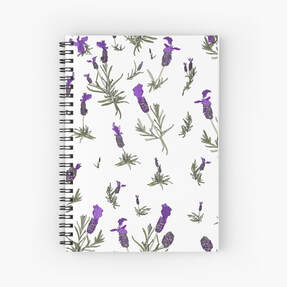
Shop on Redbubble
|
After spending so much time thinking about this design, it came together really nicely, as did the silver germander that I drew earlier.
Lawn
At my old flat in Newtown, the tiny patch of lawn was officially mown by the landlord, but I loved that he only came very occasionally.
As a good son of his father, El Huzbando George takes great pride in keeping his lawns tidy and well-maintained. I, however, absolutely love daisies, buttercups, dandelions, dock leaves… all the things that lawn-lovers generally murder with great prejudice. We compromise – nothing gets murdered without my consent, and we remove all weeds that mar the edges of the lawn, drive, and patio.
This same area of lawn, and the neighboring areas, also inspired my “meadow” design. Knowing how much I love my little toadstool and mushroom “frens”, George mows around them in autumn.
I definitely spend a lot of time walking around and taking photos at our place!
I reworked the daisies and the grass from my original meadow design to make a better repeat, with the knowledge I have gained since. I think they are really lovely.
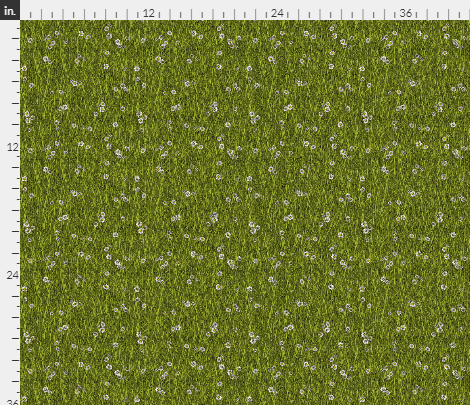
Click the image to buy this design on Spoonflower
|
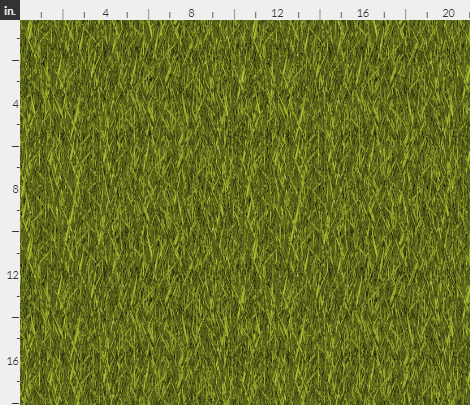
Click the image to buy this design on Spoonflower
|
Really, you need more? Ok!
âThere are lots of other posts about all the plants I have been drawing recently, too:
And more to come!

